

The complete guide for your Serengeti safari in Tanzania
Without a doubt, Serengeti National Park is the best place to visit for a safari in Tanzania . This UNESCO World Heritage Site is unique for many reasons, but especially because of the Great Migration , the incredible array of wildlife including the Big Five , and the truly wonderful landscapes. Find everything you need to know for a safari in Serengeti, Tanzania.
Why is Serengeti National Park famous?
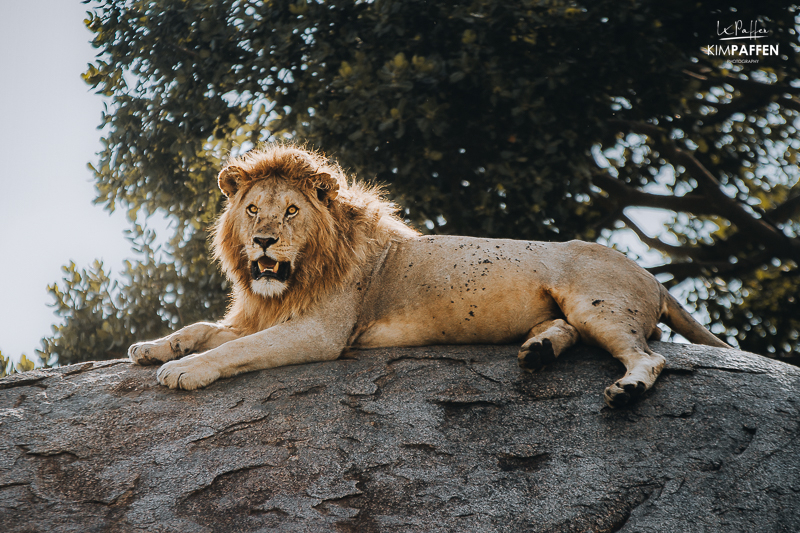
Serengeti National Park is a world-renowned destination for wildlife safaris, famous for its vast grasslands and savannahs, which are home to a spectacular array of wildlife. The park's ecosystem supports one of the largest remaining populations of wildlife in Africa , and is also an important conservation area, with ongoing efforts to protect its wildlife and their habitats.
In 1981, the Serengeti National Park was declared a UNESCO World Heritage Site for its exceptional natural beauty and ecological significance, and for its role in supporting one of the world's largest remaining wildlife populations, including the annual wildebeest migration.
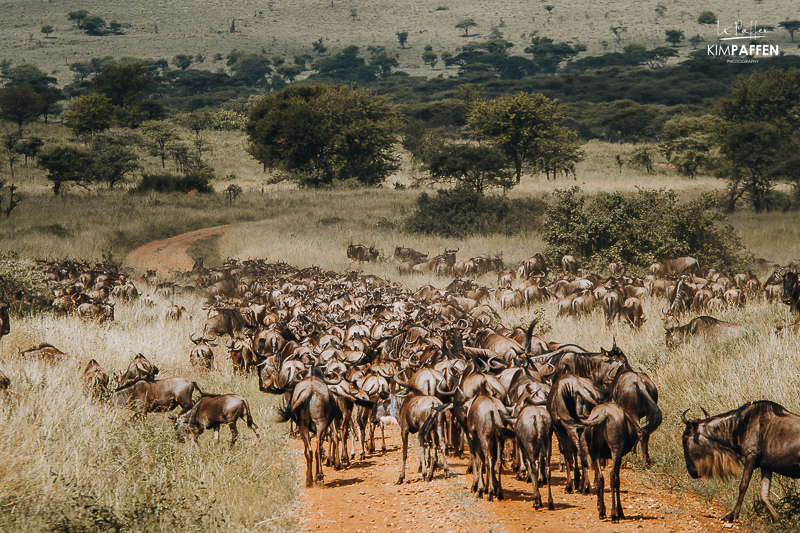
Visitors come from all over the world to experience the park's incredible wildlife, stunning landscapes, and unique cultural and historical heritage. The park's popularity also helps to support the local economy and promote conservation efforts in the region.
The beauty of the Serengeti’s Landscape
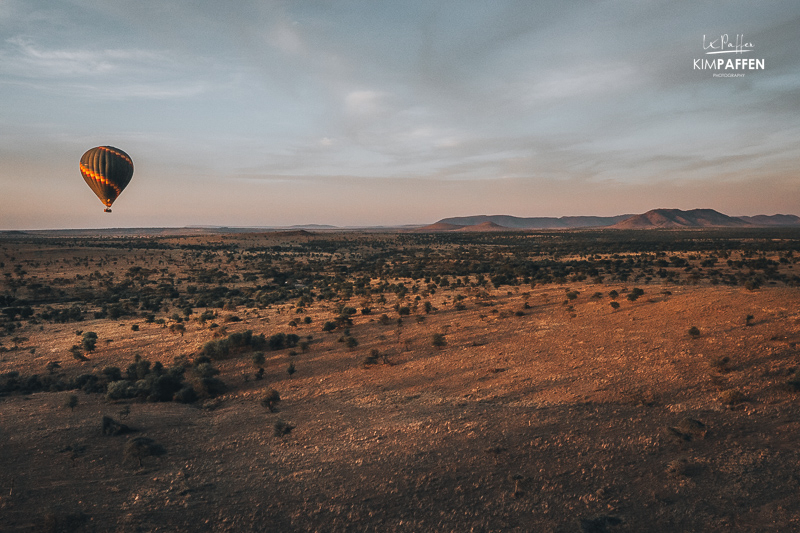
The Serengeti National Park has a diverse landscape that includes vast grasslands, savannahs, woodlands, and riverine forests.
The park's grasslands and savannahs are the dominant landscape, covering approximately 80% of the park's area. The grasslands are characterized by short-grass plains in the south and long-grass plains in the north, and they support large herds of herbivores, including wildebeest, zebras, and gazelles, which in turn attract predators such as lions , leopards, cheetahs, and hyenas. The woodlands and riverine forests are found along the park's river courses and in areas of higher rainfall.
The soils of the Serengeti consist of volcanic rock and ash. For that reason, you will find ancient crystalline rocks in the Serengeti National Park, which are also called "kopjes". Some of them contain African rock paintings. They harbor and are popular resting spots for big cats because they provide shade and drinking water. Can you spot the pride of lions in the image below?
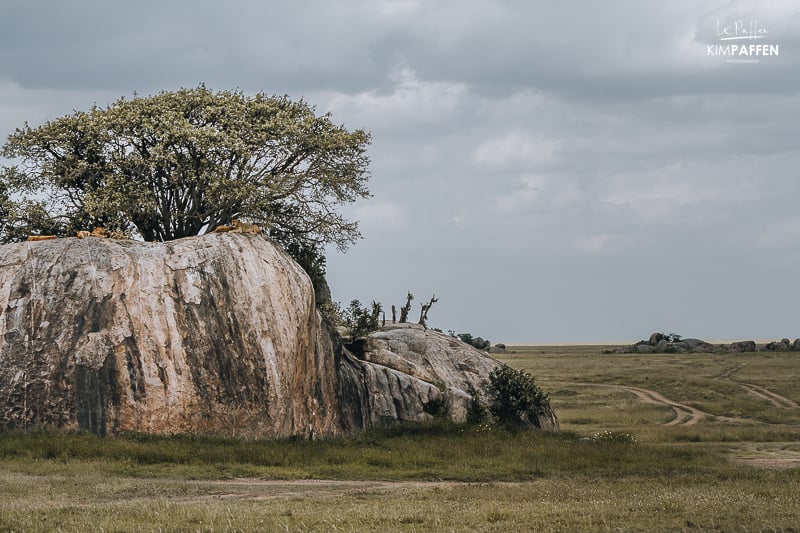
Serengeti Safari Tours
Find popular safari tours in Tanzania that include Serengeti National Park.
Where is the Serengeti National Reserve located?
The Serengeti National Reserve is located in Northern Tanzania , East Africa. It covers an area of approximately 14,750 square kilometers and is part of the larger Serengeti-Mara ecosystem that extends into neighboring Kenya . The Serengeti-Mara ecosystem is one of the largest and most protected ecosystems on earth, spanning 40,000 square kilometers and taking in the Serengeti National Park and Maasai Mara National Reserve in East Africa. Serengeti National Park also borders the beautiful Ngorongoro Conservation Area.
Map Source: African Safaris Ltd
How do you get to the Serengeti?
The nearest city and the city most Serengeti safari tours begin from, is Arusha. The distance between Arusha and Serengeti National Park is approximately 320 kilometers (200 miles) and takes about 7 to 8 hours by car, depending on traffic and road conditions. Alternatively, you can also take a flight from Arusha to one of the Serengeti airstrips . These flights take around 1 to 2 hours depending on the flight route and airline. By far the most popular way to get to Serengeti is by road. You can always choose to fly back from Serengeti to either Arusha Airport, Kilimanjaro Airport, or Dar es Salaam.
Serengeti safari by road from Arusha
Arusha is located in northern Tanzania and is a common starting point for visitors embarking on a safari to the Serengeti National Park. There are many different tour operators and packages available for a Serengeti safari from Arusha , so visitors can choose an itinerary that suits their interests and preferences. Some tours may include game drives , guided walks, and visits to local Maasai villages or conservation projects.
The most popular safari packages in Northern Tanzania include Lake Manyara, Ngorongoro Crater, and Serengeti National Park, for example, these 5-day Tanzania safari tours that include the highlights of the Northern Tanzania Safari Circuit or this 7 to 10-day Tanzania safari including Tarangire National Park, the Ngorongoro Crater, Serengeti National Park, Lake Natron, and Lake Manyara.
Booking a safari tour package can be a convenient option since everything is taken care of, including transportation, accommodation , meals, and activities. This means you don't have to worry about logistics and can focus on enjoying your safari experience. It can often be more cost-effective than planning your own safari plus these safari tours are usually operated by experienced guides.
Many safari tour operators offer customized packages that can be tailored to your interests and preferences. This means you can choose the parks, activities, and accommodations that best suit your needs and budget.
Serengeti by plane
There are several options for traveling to the Serengeti National Park by plane. The main airport that serves the park is the Seronera Airstrip , which is located in the central part of the park.
You can fly to the Seronera Airstrip from Arusha, Kilimanjaro International Airport, Dar es Salaam, or Zanzibar . Several airlines operate flights to the Seronera Airstrip, including Coastal Aviation and Auric Air. If you are visiting other parks in Tanzania, such as the Ngorongoro Crater or Tarangire National Park, you can also fly to the Serengeti National Park via a connecting flight. Many lodges and camps inside Serengeti Park offer transfer services to and from the airstrip.
In addition to the Seronera Airstrip, there are several other airports in the Serengeti region that you may be able to use to access the park. These include:
- Grumeti Airstrip : located in the western part of the Serengeti National Park, near the Grumeti River. It is primarily used by lodges and camps in the western corridor of the park.
- Kleins Airstrip : located in the northern part of the Serengeti National Park, near the border with Kenya. It is primarily used by lodges and camps in the northern part of the park, such as Klein's Camp.
- Kogatende Airstrip : located in the northern part of the Serengeti National Park, near the Mara River. It is primarily used by lodges and camps in the northern part of the park, such as Sayari Camp and Lamai Serengeti.
It's important to note that not all lodges and camps in the Serengeti have their own airstrips , and some may require ground transfers from nearby airstrips. It's best to check with your lodge or tour operator to determine which airport is most convenient for your specific itinerary.
Private transfer by car (taxi)
There are several transport services in Tanzania that offer private taxis, shuttles, and bus services to the Serengeti National Park. Most transportation companies are located in Arusha. Serengeti National Park is large, so the costs depend on where you want to go (total distance). Note that private transfers to Serengeti are often expensive as the cost of the return trip also needs to be covered. Additionally, the driver also needs to pay entrance fees if you want to be taken to a lodge inside the park.
Many tourists choose to combine Serengeti National Park with other parks that are located near Serengeti, such as Lake Manyara National Park, Ngorongoro Crater, or Tarangire National Park.
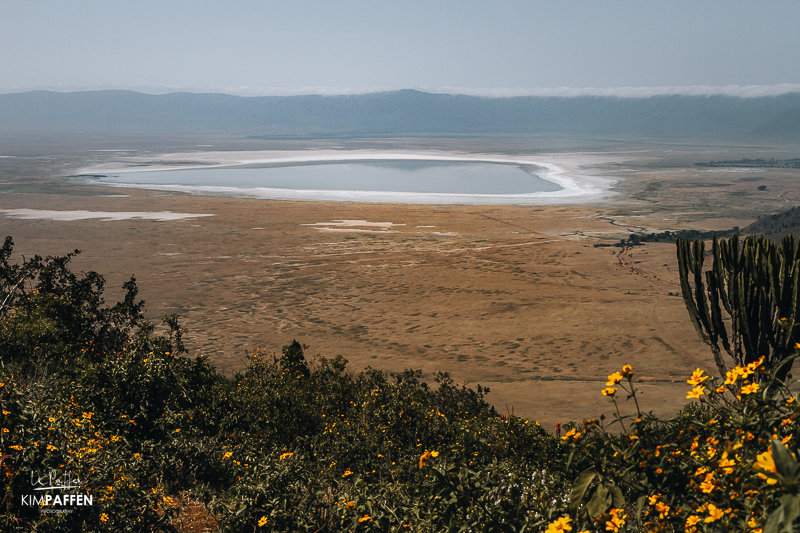
I highly recommend combining a Serengeti safari with other National Parks and booking your customized safari package through a tour operator, for example via SafariBookings.com .
Public transport
Determined to explore Serengeti on a budget? Public transport is the cheapest way to travel in Tanzania. Large buses and ‘daladalas’, which are small public transport buses, crisscross the country and link the major towns. Longer routes even link Dar es Salaam with Nairobi and Mombasa in Kenya. Public transport is quite efficient between big cities, but it gets slower, less comfortable, and more challenging when you intend to reach smaller towns. To cover short distances, tuk-tuks and boda-bodas can be used.
In Tanzania’s National Parks, there's no public transport, so you cannot access Serengeti National Park without a private vehicle. This means you can only use public transport for the part of your trip which is out of the park, but this will be an adventure.
Self-drive in the Serengeti
Self-driving in Serengeti National Park is allowed, however, it is important to keep in mind that careful planning is necessary when driving through the park by yourself. A 4x4 vehicle is required to be able to access all roads throughout the year, and it is important to be familiar with the park's rules and regulations. It is also recommended to have a good understanding of the park's geography and to carry a detailed map. Additionally, it is important to be aware of the risks and challenges of driving in the park, such as navigating rough terrain and encountering wildlife on the roads. Therefore, it is generally recommended to use a reputable local tour operator or guide to ensure a safe and enjoyable experience in Serengeti National Park.
What is the best time for a safari in Serengeti, Tanzania?
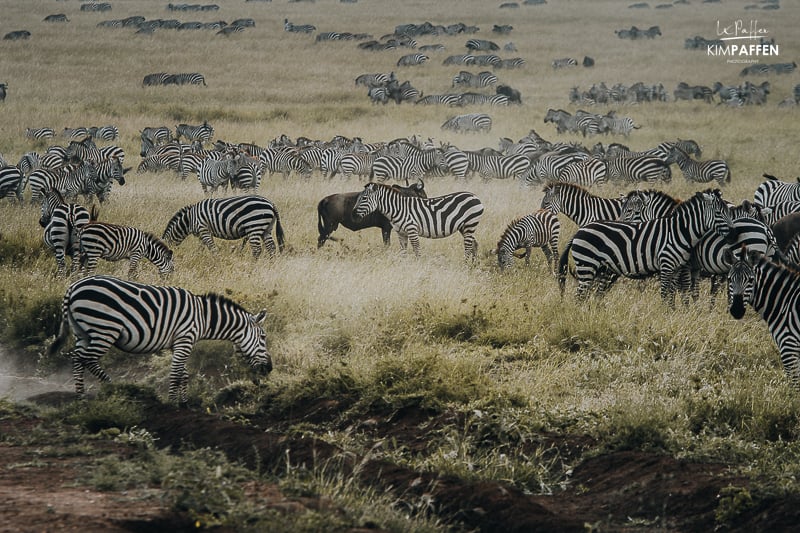
The best time for a safari in Serengeti depends on what you want to see and experience. The annual Great Migration is one of the main attractions in Serengeti, and it usually takes place from November to August. The best time to witness the wildebeest migration is from December to July when the herds of zebras and gnus are in southern and central Serengeti. However, visiting the Serengeti in December can be tricky due to the unpredictable weather. From July to October the Great Migration will take place in the northern part of Serengeti and the Masai Mara in Kenya.
The best time for a safari in Serengeti, Tanzania is also influenced by the weather. The dry season, from June to October, is considered the best time to visit as it offers clear skies, lower humidity, and good visibility for wildlife viewing. The rainy season, from November to May, is when the park is lush and green, with many newborn animals and migratory birds, but it can also make the roads difficult to navigate.

If you're interested in seeing big cats, such as lions and leopards, the dry season from June to October is the best time to visit. During this time, the vegetation is sparse, making it easier to spot these elusive predators.
If I had to pick a favorite time to visit, I would choose October as the best month to visit Serengeti . It’s when the dry season ends and the wildlife gathers around water sources, making it easier to spot them. It's also the time when the wildebeest migration is in full swing, the weather is mild, and there is little rain, making it a comfortable and less crowded period to visit. You gotta love these shoulder seasons!
How safe is Serengeti?
Visiting Serengeti National Park is safe , but it's important to respect the animals and park rules and regulations, including the prohibition of littering and feeding animals, and follow the advice of your safari guide , who is a trained and experienced professional. The reserve is protected by certified park rangers , ensuring your safety, so inside Serengeti National Park there is no need to worry about safety.
How many days do you need in Serengeti?
The length of your visit depends on your preferences and schedule, but I would recommend spending at least three to four days in Serengeti to fully experience its beauty and wildlife because Serengeti has a lot to offer. The more time you have, the better.
Visiting Serengeti National Park for three days should give you enough time to explore the park, spotting various animal species, and experience the different landscapes. If you have a specific interest in seeing the Great Migration or want to go on longer game drives, a 4-5 day visit is more ideal.
Is Serengeti expensive?
Serengeti National Park can be expensive, but the cost of visiting the park depends on a few factors, such as the type of accommodation, the time of year you visit, and the activities you plan to do.
Accommodation in Serengeti ranges from budget camping sites to luxury lodges, so the cost of your stay will depend on your preferences and budget. Generally, the more luxurious the accommodation, the higher the cost.
The costs of safari activities in Serengeti , such as game drives, hot air balloon safaris , and guided walks, can also vary depending on the operator you choose and the duration of the activity.
Furthermore, the Serengeti park entrance fees for foreign visitors are relatively high, with a daily fee of $70 per person per day for adults and $20 for children (as of 2023). These fees are subject to change, and there may be additional fees for certain activities.
For instance, this budget 3-day Serengeti safari package starts at $728 per person including park fees, activities, transportation, budget camping, and meals.
Which part of Serengeti is best?
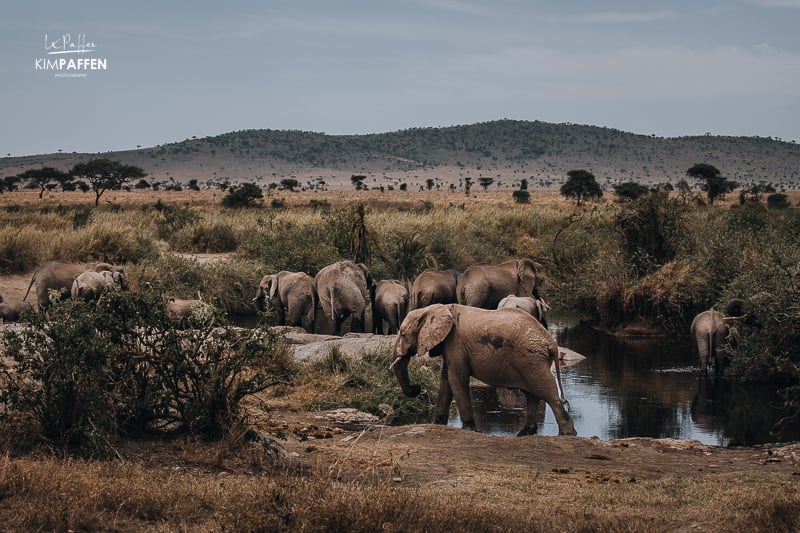
Serengeti National Park is divided into several different regions, each with its own distinct features and wildlife viewing opportunities, making it hard to say which part of Serengeti is the best.
The Seronera region is the heart of the Park, located in Central Serengeti. It is known for its wide-open savannah landscape and abundant wildlife, including the Hippo Pool full of countless hippos. Simba Kopjes, a group of rocky hills, is a popular area in Seronera, famous for its lion sightings and high density of leopards. However, note that the Seronera Valley is the busiest area of the park.

Northern Serengeti is a more remote and rugged region, home to the Mara River, which is known for its scenic beauty and wildlife, including spectacular river crossings and predators such as lions and crocodiles.
The Western Corridor is located in the western part of Serengeti National Park, with the Grumeti River running through it, attracting various predators and hosting large herds of wildebeest and zebras during the migration season.
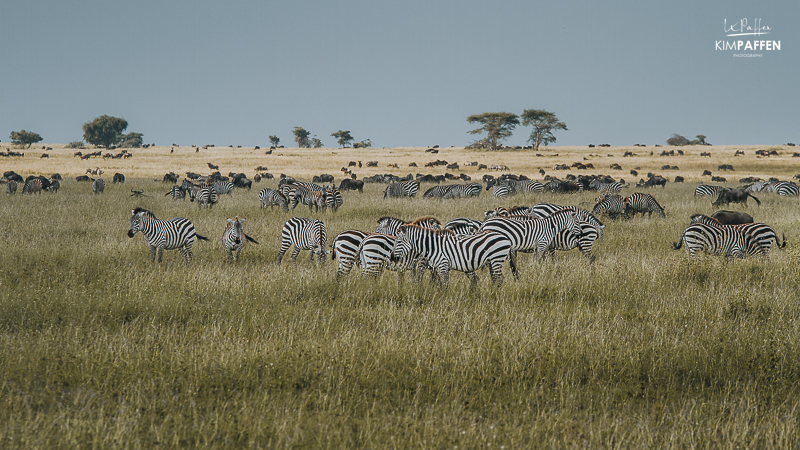
Eastern Serengeti is known for its open savannah grasslands and is less visited than the other regions, but still home to a variety of wildlife, including giraffes and elephants.
Ndutu , located in Southern Serengeti and part of the Ngorongoro Conservation Area, is another popular area to visit. It is famous for its large open plains and is the breeding ground for wildebeest and zebras during the calving seasons in March and April, attracting plenty of predators such as cheetahs and lions. As there are no fences between the parks, the animals are free to roam.
Serengeti Balloon safari
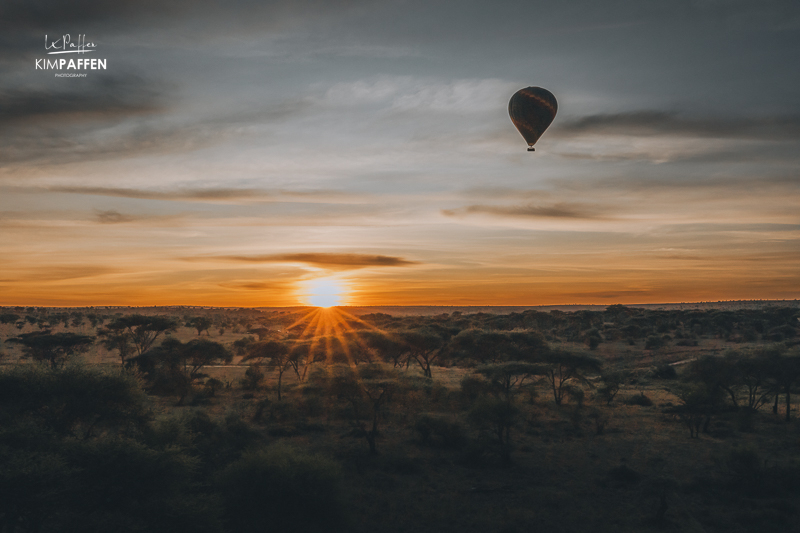
To get the best out of your Serengeti experience, you should definitely book a balloon safari . A Serengeti Balloon Safari is a popular activity and is a unique way to experience the park and see its wildlife from above. The balloon safari takes place early in the morning, just before sunrise. The balloon flies low over the Serengeti's plains and savannahs, providing a panoramic view of the landscape and wildlife below.

During the flight, passengers can expect to see a variety of animals, including elephants, lions, giraffes, zebras, and wildebeest. The flight typically lasts for about an hour, after which the balloon lands and passengers are treated to a champagne breakfast in the middle of the Serengeti wilderness.
Serengeti Travel Tip: Read more about a Serengeti balloon safari if you're interested in a hot-air balloon ride in Serengeti. That article also includes an attractive discount!
Is Serengeti better than Masai Mara?
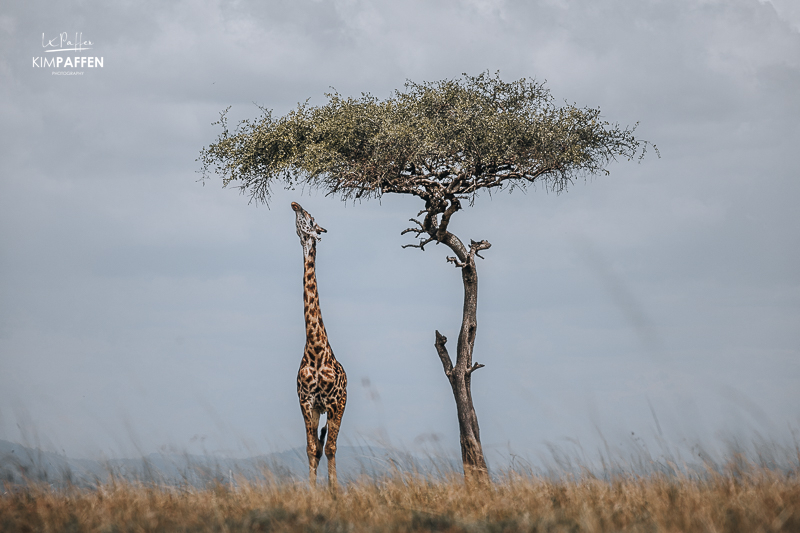
Serengeti and Maasai Mara are two incredible safari destinations that share the same ecosystem, wildlife, climate, and types of landscapes, yet they have some distinctions. While both offer an exceptional safari experience, there are some notable differences between them. For instance, Serengeti National Park is larger than the Masai Mara National Reserve and relatively more expensive. The primary reason for the price discrepancy is that tourists typically stay within the Serengeti, where they are required to pay a daily concession fee in addition to the National Park fee (140 USD in total).
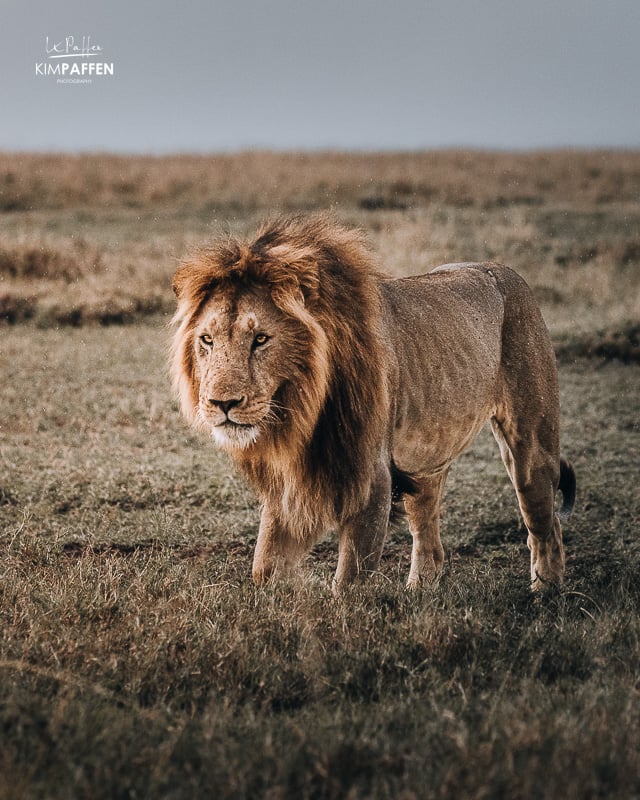
Determining whether the Serengeti or the Masai Mara is better is difficult, as both offer unique and memorable safari experiences. However, personally, I love to spend time in the Mara Conservancies, bordering the Masai Mara National Reserve.
Is Serengeti malaria-free?
Serengeti National Park is located in a malaria-endemic region, and there is a risk of contracting malaria while visiting the park. Due to the limited water sources, the high altitude, and the prevalence of short grasslands within the Serengeti National Park, the mosquito population is relatively low, which results in a reduced risk of contracting malaria while visiting the park.
However, it's important to note that even though the park has fewer mosquitoes and lower chances of malaria cases, it doesn't completely eliminate the presence of mosquitoes in the Serengeti. It's always advisable to consult with a healthcare professional before traveling to a malaria-endemic area and to take preventive measures against malaria, such as wearing long-sleeved clothing and pants, using insect repellent, and sleeping under a mosquito net.
Is Serengeti fenced?
Serengeti National Park is not entirely fenced. The park is part of a larger ecosystem that includes several wildlife reserves and protected areas, and wildlife can move freely between these areas. This is especially true during the annual wildebeest migration, where millions of animals move across the Serengeti-Mara ecosystem. However, there are some smaller fenced-off areas within the park, such as some of the lodges and campsites that have fences for the safety of guests.
How to enter the Serengeti National Reserve?
The Serengeti National Park is primarily accessible by plane or via road transportation. The park has multiple entry gates into Serengeti , including Naabi Hill Gate, Kleins Gate, Fort Ikoma Gate, Ndabaka Gate, and Habdajega Gate.
There are four main entry and exit points into the Serengeti:
- Naabi Hill Gate is the main gate, and the busiest entrance point, located about 45 kilometers from Seronera. The gate is open daily from 06h00 to 18h00.
- Ndabaka Gate is the primary access gate for the Western Corridor area, which is approximately a 1.5-hour drive from Mwanza and 145 kilometers from Seronera. The gate is open daily from 06h00 to 18h00, but the last entry is at 16h00.
- Klein’s Gate is situated in the far northeast of the Serengeti and is open daily from 06h00 to 18h00, with the last entry at 16h00.
- Bologonya Gate is located en route to or from Kenya; do check if the gate is (still) closed as it was closed for a while.
Best places to stay in Serengeti
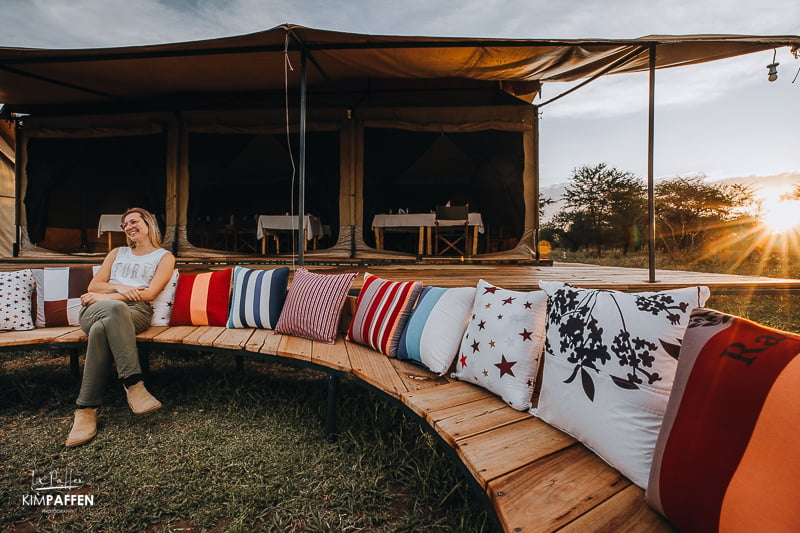
There are many excellent places to stay in Serengeti , ranging from luxurious lodges to budget-friendly campsites. The best place to stay depends on your preferences, budget, and travel style.
If you're looking for luxury, some of the best lodges include Singita Sasakwa Lodge , Four Seasons Safari Lodge Serengeti , and AndBeyond Grumeti Serengeti Tented Camp . These lodges offer top-notch amenities, personalized service, and breathtaking views.
For mid-range options, you might consider places like Serengeti Serena Safari Lodge , Lemala Kuria Hills Lodge , or Serengeti Explorer Camp . These lodges offer comfortable accommodation, good food, and a range of activities.
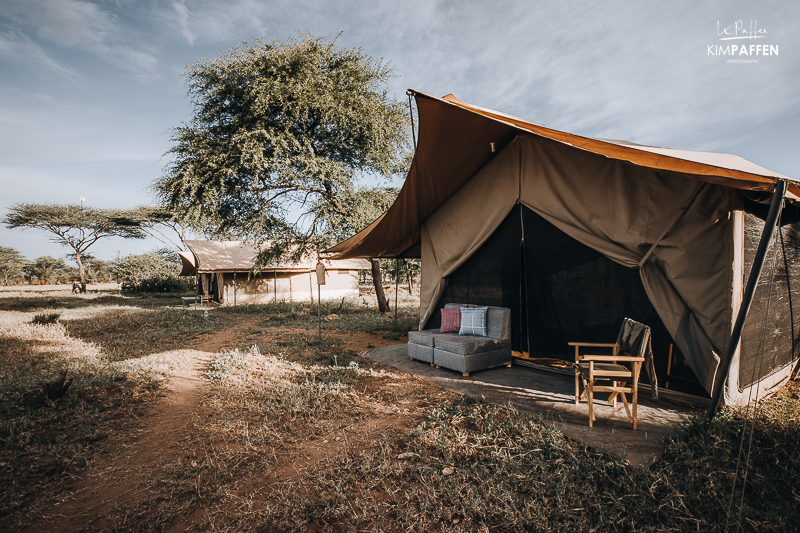
If you want to visit Serengeti on a budget , there are several campsites and budget-friendly lodges in and around the park, such as Ikoma Tented Camp , Serengeti Acacia Camp s, and Tanzania Bush Camps . These accommodations offer basic amenities but still provide a great safari experience.
During my last Serengeti trip with the Tanzania Tourism Board, we stayed in the lovely Pamoja Serengeti Luxury Camp , situated at the center of the vast Serengeti National Park, in Seronera. We absolutely loved staying at this intimate privately-owned wilderness camp because of the outstanding staff, delicious buffet, lovely views from our luxury tented suite, and overall exclusivity.
The proximity to wildlife is one of the reasons that makes Pamoja Serengeti Luxury Camp unique. If you're lucky (like us), you will even spot elephants or cheetahs passing by your tents or the lounge area; the ultimate bush feeling!
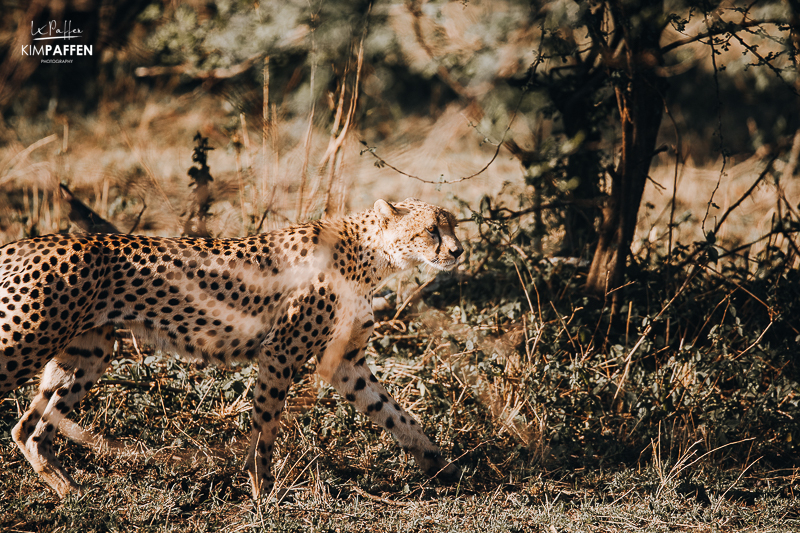
Is a safari in Serengeti worth it?
A safari in Serengeti is definitely worth it. Serengeti National Park is one of the most famous and spectacular wildlife reserves in the world , renowned for its abundant wildlife, stunning landscapes, and unique cultural experiences. Visitors can witness the Great Wildebeest Migration , which is one of the most incredible wildlife spectacles on earth, where millions of wildebeest, zebras, and other grazers move across the Serengeti ecosystem in search of fresh grass and water.
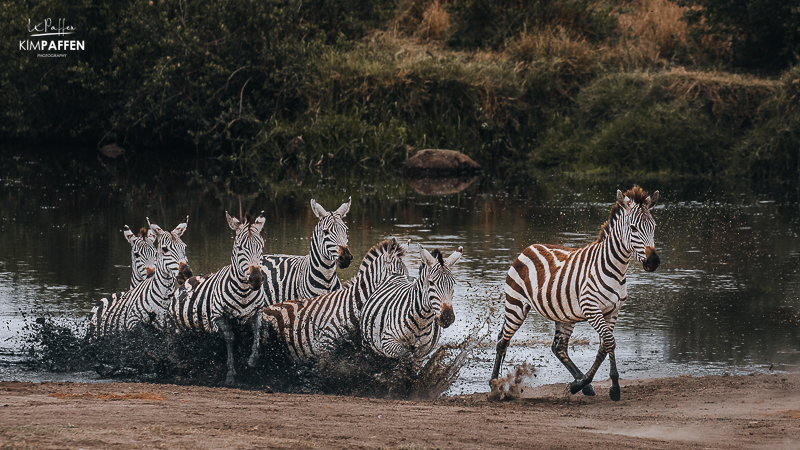
Serengeti offers an opportunity to see a diverse range of wildlife including lions, leopards, cheetahs, elephants, giraffes, hyenas, and many more. The park also has a rich cultural heritage , with the Maasai people living in and around the park and offering visitors an opportunity to experience their unique way of life.
Whether you go for a luxury family safari, a solo trip, or a customized tour, a Serengeti safari won’t disappoint you.
Looking for more Tanzania inspiration? Check my Serengeti travel guide to read about the top safari destinations in Tanzania like the Ngorongoro Crater, and the tallest mountain in Africa; Mount Kilimanjaro, and more featured Safari Tips for Tanzania.
Serengeti Safari in Tanzania
Feel free to contact me if you have questions about a safari in Tanzania or getting around in the Serengeti National Park. If you are planning your first-ever safari, it might be useful to read the following articles:
- Tanzania Northern Circuit: 10 best places to visit
- What to expect on a hot-air balloon safari in Serengeti?
- What to expect on a game drive in Africa? 15 things you need to know
- 7 tips to make the most out of your safari game drive
- What to pack for a safari in Africa? Use this Safari Packing Guide
I hope this article was helpful for you to plan your Serengeti safari itinerary. If so, I would be extremely thankful if you'd share this blog on social media and leave a comment below.
Pin this guide to a Serengeti Safari in Tanzania for later use!

- Skip to primary navigation
- Skip to main content
- Skip to primary sidebar
- Skip to footer
TravelAwaits
Our mission is to serve the 50+ traveler who's ready to cross a few items off their bucket list.
9 Key Tips For Your First Tanzanian Safari According To Experts

- Activities and Interests
- Destinations
- Outdoor Activities
I thought I was prepared for my seven-day safari in Tanzania earlier this year. However, after extended conversations with our two guides, David and Joseph — along with other members of our safari team — I realized I could have come even better equipped.
For a little background, I traveled to Tanzania in September for a seven-day safari. All advanced arrangements were made through the travel agency, African Portfolio , while everything in Tanzania was handled by Ranger Safaris — I highly recommend both. Traveling with a group of thirteen, we began and ended our safari in Arusha and explored Ngorongoro Crater, Lake Manyara, and the Serengeti. The variety of wildlife we saw was stunning and included lions, cheetahs, elephants, zebras, giraffes, wildebeests, and much more.
A safari through the national parks of Tanzania might be the most memorable — and expensive — trip of my life. I enjoyed every minute of it, but considering the significant cost and effort it takes to get to East Africa, I hope to help those that follow me be even better prepared with these tips.

1. Bring A Camera And Binoculars
With ever-improving cell phone cameras, many people leave their actual cameras behind. I’ll admit that I often do this. However, as my guide, Joseph, pointed out, guests often regret this decision. If you own a camera, bring it, and be sure to purchase or rent a telephoto lens. If you don’t own a camera, consider purchasing or borrowing one. These will be some of the most memorable photos of your life.
Additionally, Joseph strongly encourages everyone to bring a high-quality pair of binoculars. While guides are always trying to get close to animals, sometimes that’s just not possible.
Pro Tip: I learned during our trip that a high-powered telephoto lens can cost thousands of dollars. However, that same lens can be rented for a few hundred. I’ll definitely be renting one for my next safari.

2. Tanzania’s Natural Wonders
Becoming a safari guide is no easy endeavor. In addition to educational requirements, each guide has many years of training and experience. Our entire traveling party was endlessly impressed by both David and Joseph’s knowledge of the animals, plants, and history.
However, to fully appreciate what you’ll see while on safari, take some time in advance of your trip to learn about the specific places you’ll be visiting. After all, you are visiting one of the most biodiverse regions in the world and there’s no way one guide can impart all there is to know about the more than 70 animal species and more than 500 bird species to be found here.
Here are a few resources that may help to prepare you for your trip;
- Animals of the Serengeti
- Mara: River of Death
- The Serengeti Lion
- Birds of the Serengeti

3. Tanzania’s Culture And People
While the animals are likely the reason you booked your trip to Tanzania, our guide, David, encourages guests to be open to learning about the local culture and people as well. Fortunately, this is pretty easy to do. Every Tanzanian I met was eager to share information about their country, so don’t hesitate to start a conversation with your guide, driver, or anyone else you meet.
Learning about the tribes of Tanzania is a great starting point for understanding the local culture. The best-known tribe is the Maasai but that’s just one of the 120 tribes residing in the country. Look for opportunities to learn about tribes through visits to local villages or craft demonstrations. We had the chance to watch a carving demonstration by a member of the Makonde tribe who mostly reside in Northern Tanzania. Their carvings — frequently made of ebony — are very intricate and can take many years to complete.
Pro Tip: The Cultural Heritage Center in Arusha is a great spot to learn more about the traditional arts of Tanzania’s tribes by watching demonstrations. I arrived early in Arusha and had the opportunity to spend a few hours here.

4. Don’t Pet The Animals
Before meeting our safari guides, our group gathered for a briefing given by our tour director, Naomi. After reviewing the itinerary, she reminded us about safety and instructed us not to pet the animals. I assumed she was joking. I couldn’t imagine anyone stupid enough to pet a wild animal. However, it turns out that most of the guides and staff I met during my seven days had at least one story about a guest attempting to pet an animal, including a lion.
A few days later we were parked in the Serengeti watching a lioness hunting a gazelle. She briefly passed between our two vehicles, using them as cover. With the vehicle windows open, she was close enough to reach out and touch. I now understood how someone could be tempted to pet a lion, but needless to say, don’t do it.

5. Oldupai Gorge — The Cradle Of Mankind
On our third day of the safari, we drove from the Ngorongoro Crater to the Serengeti. Along the way, we stopped at the Oldupai Gorge and toured the museum. This isn’t on every safari itinerary, but I agree with our guides, David and Joseph, who told me it should be.
Oldupai (frequently misnamed as Olduvai) Gorge is arguably the most important fossil site in the world. It was here that Louis and Mary Leakey made several important discoveries, including the earliest signs of humans using stone tools.

6. When You Should Visit
If you’re going to make the journey to Tanzania, it’s really important to decide what time of year you do it. After speaking with our travel agent, tour director, and guides, I learned that there are many things to take into account when making this decision.
First of all, if you want to see the great migration of wildebeests, you’ll need to come between May and September. The animals cross the Grumeti River between May and July and the Mara River from July to September. Keep in mind that these are wild animals that can do what they please, so these months are just estimations. I had the chance to witness the wildebeests crossing the Mara and it was spectacular. However, this is the busiest and most expensive time of year as well.
If you’re hoping for better pricing and fewer crowds, then the off seasons of January through March and November through December are good options. January through March is often a great time to see baby animals throughout the parks. This is also the rainy season. The rains can make the roads muddy, difficult to navigate, and may limit where your safari guide can go.
7. Prepare For Your Trip
In a follow-up call with our travel agent, Victoria, I asked her what she wants future travelers to Tanzania to know. She said, “Read everything your tour company sends you and allow plenty of time to prepare for your trip.” I couldn’t agree more.
First, make sure your passport is current and will not expire less than six months from the date of your trip. Next, you’ll need to apply for and receive a visa from the government of Tanzania. This can take up to three weeks, so don’t wait until the last minute. Currently, the government requires tourists to be fully vaccinated against COVID-19. However, you’ll also want to check with your doctor about other recommended vaccines. Your doctor is likely to prescribe anti-malarial pills and you may need to start taking these before your departure.
8. Purchase Local Crafts
When it’s time to purchase souvenirs for family and friends, Joseph highly recommends seeking out handmade crafts. His personal favorites are the Makonde tribe carvings. However, if a sculpture isn’t for you, consider handcrafted leather goods, beaded jewelry, and woven baskets. To support a local NGO, visit Shanga , and purchase one of the items made by disabled artisans.
Pro Tip: After three trips to East Africa, I’ve learned to bring along an extra bag to take home all of my souvenirs. I’ve found that the handmade items throughout this region are beautiful, high quality, and affordable.

9. Listen To Your Guides
Okay, this tip comes from me, but that’s because David and Joseph were too polite to say it. Your guides want to do everything in their power to accommodate every request, but in reality, they know best.
If your guide asks you to get up before the sun rises so you can get to the Mara River early enough to watch the wildebeests cross, then just do it. You can sleep back home. When they suggest you stop taking pictures of the gazelles because they’ve heard of a lion sighting, then put the camera away and let them drive on.
All day, every day, guides are balancing the requests (sometimes demands) of guests with their expertise and intuition about the animals. When we listened, we were rewarded with the sighting of mating lions, a lioness after the hunt, and a mother cheetah and her three cubs. In other words, things we didn’t even know were possible, but our guides did.
For more articles on safaris, check out these articles:
- 9 Mistakes To Avoid While On Safari
- 12 Luxurious Safari Lodges To Experience In Africa
- 16 Things I Learned On Safari With A Professional Wildlife Photographer

Wendy and Jason Lee are two passionate travelers based in Irvine, California. They set out to inspire couples 50+ to travel more by launching the blog, Empty Nesters Hit The Road . Often they travel internationally, but their own backyard, Southern California, also gives them ample opportunity for exploration.

WHITE HOUSE OF TANZANIA
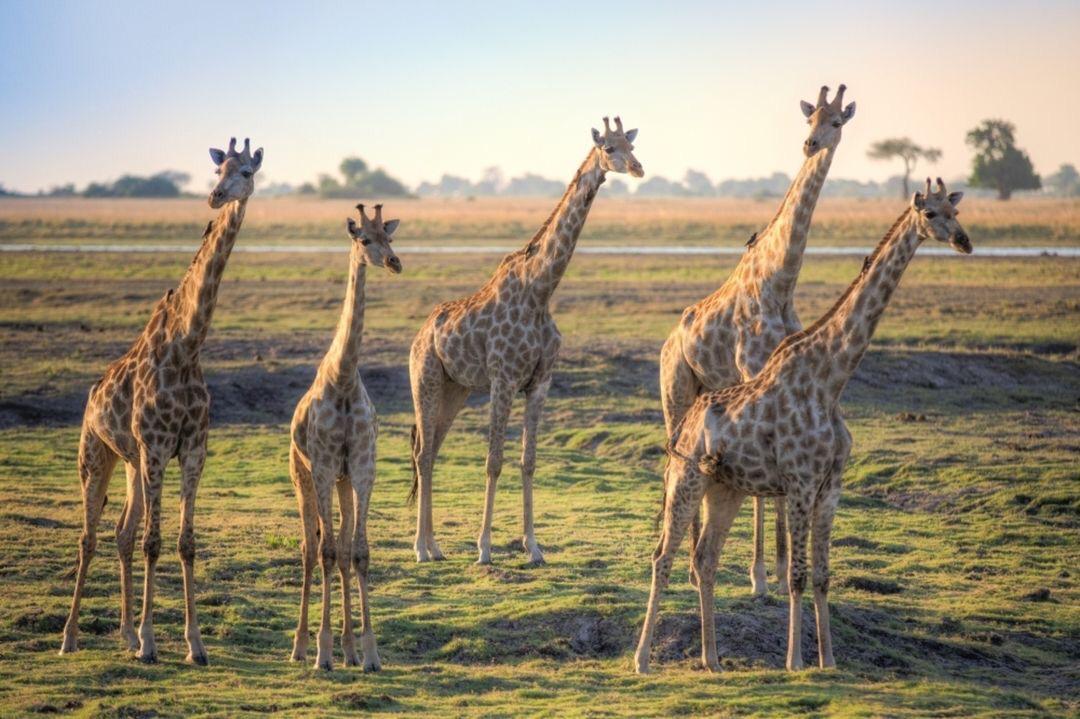
Unlocking the Ultimate Tanzanian Safari Experience: Your Itinerary Guide
Discover wildlife hotspots: explore tanzania's diverse landscapes and get up close with its incredible wildlife..
Janet & Ross - Guests from Norway
If your dream getaway involves the thrill of the wild and the magic of nature’s wonders, a Tanzanian safari should be at the top of your travel bucket list. Tanzania, with its diverse landscapes and rich biodiversity, promises an unforgettable safari experience. Let’s delve into the heart of the adventure and explore the wildlife hotspots that make up the perfect Tanzanian Safari itinerary.
Unveiling the Serengeti’s Natural Grandeur
Picture this: a vast expanse of golden savannah, stretching as far as the eye can see, interrupted only by acacia trees and a dramatic array of wildlife. Welcome to the Serengeti, where the circle of life unfolds in all its glory. Lions roam majestically, herds of wildebeest migrate in synchronized dance, and cheetahs showcase their incredible speed. This natural grandeur is the cornerstone of any Tanzanian Safari itinerary.
Ngorongoro Crater: A Natural Wonder
Descend into the Ngorongoro Crater, often referred to as the “African Eden.” This volcanic crater is a self-contained ecosystem, teeming with an astonishing concentration of wildlife. As you navigate its lush landscapes, encounters with rhinos, elephants, and zebras are not just possible; they’re inevitable. The Ngorongoro Crater offers a unique and compact safari experience, making it a must-stop on your Tanzanian Safari itinerary.
Tarangire National Park : Where Giants Roam
For a safari experience that revolves around giants, Tarangire National Park is your destination. Home to one of the largest elephant populations in Tanzania, Tarangire presents a spectacle of these gentle giants against the backdrop of ancient baobab trees. As you venture through the park, be prepared for close encounters with elephants, giraffes, and an array of bird species. Tarangire’s vast landscapes and impressive wildlife make it an essential stop on your Tanzanian Safari itinerary.
Crafting Your Tanzanian Safari Itinerary: A Symphony of Nature
Crafting the perfect Tanzanian Safari itinerary is akin to composing a symphony of nature. Each wildlife hotspot contributes its unique melody to the overall composition, promising a harmonious blend of adventure and discovery. Whether you’re captivated by the endless plains of the Serengeti, the natural wonder of Ngorongoro Crater, or the majestic giants of Tarangire, each destination adds a new note to your safari symphony.
In conclusion, a Tanzanian Safari is not merely a journey; it’s a symphony of experiences, a crescendo of wildlife encounters that will echo in your memory for a lifetime. As you plan your Tanzanian Safari itinerary, remember that each hotspot contributes to the harmonious melody of this extraordinary adventure. Get ready to be immersed in the wonders of nature, and let the safari symphony begin!
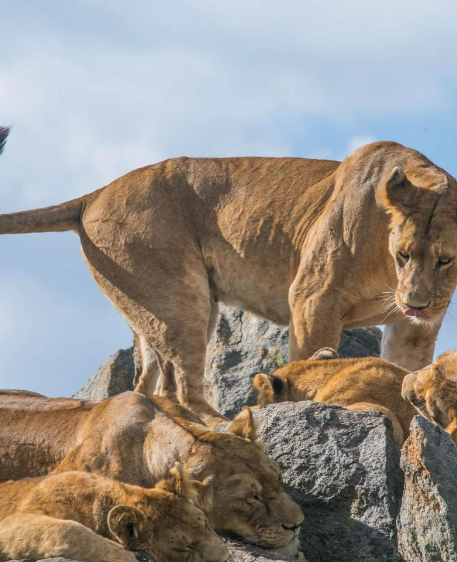
Group Safari Benefits: Uncover the perks of joining a group safari for a more enriching and social experience.
- Explore Arusha's Wildlife Photography: Discover Rare Bird Species in 80+ stunning shots!
Embarking on a Tanzanian safari is like stepping into a nature-themed treasure hunt. While solo adventures have their charm, there’s a unique thrill that comes with a group safari. Let’s dive into the perks and delights of choosing the camaraderie of a group for your Tanzanian safari itinerary.
1. Safari Stories Around the Campfire: Sharing the Adventure
Picture this: a star-studded African sky, the flickering glow of a campfire, and a group of fellow adventurers sharing tales of the day’s wildlife encounters. Group safaris bring people together, creating a tapestry of shared experiences that transform strangers into safari companions. As the flames dance, so do the stories of lions’ roars and elephants’ trumpets, making every night a celebration of the day’s Tanzanian safari itinerary.
2. Collective Wildlife Wisdom: Spotting More, Missing Less
In the vast landscapes of Tanzania, the more eyes, the merrier. Group safaris maximize your chances of wildlife sightings. While you’re focused on capturing that perfect lioness yawn, a fellow safari-goer might spot a leopard in the distance. It’s a collective effort, turning every game drive into a cooperative adventure where the group’s wildlife wisdom ensures that no majestic creature goes unnoticed.
3. Safari Snapshots: Capture Memories Together
Ever tried capturing a herd of elephants and a dazzling sunset in the same frame? With a group, you’ve got your back covered. Group safaris provide endless photo opportunities, and your fellow adventurers can help capture those breathtaking moments. From synchronized wildebeest migrations to the graceful dance of flamingos, having extra hands ensures your Tanzanian safari itinerary is visually documented from every angle.
Crafting Your Tanzanian Safari Adventure: Group Style
Crafting your Tanzanian safari itinerary in a group isn’t just about sharing the adventure; it’s about enhancing it. As you traverse the Serengeti, Ngorongoro Crater, and Tarangire National Park, the group dynamic adds an extra layer of excitement. Whether it’s collaborating on spotting elusive leopards or cheering each other on during a challenging hike, the group safari benefits make every moment richer.
In conclusion, a Tanzanian safari is not just a journey through wildlife wonders; it’s a shared adventure. The laughter around the campfire, the collective gasps at a cheetah’s sprint, and the collaborative effort to capture the essence of Tanzania’s landscapes — group safari benefits enrich your experience. So, when planning your Tanzanian safari itinerary, consider the joy of sharing the magic with fellow explorers. The wild is waiting, and it’s more enjoyable when you have a group to share the excitement!
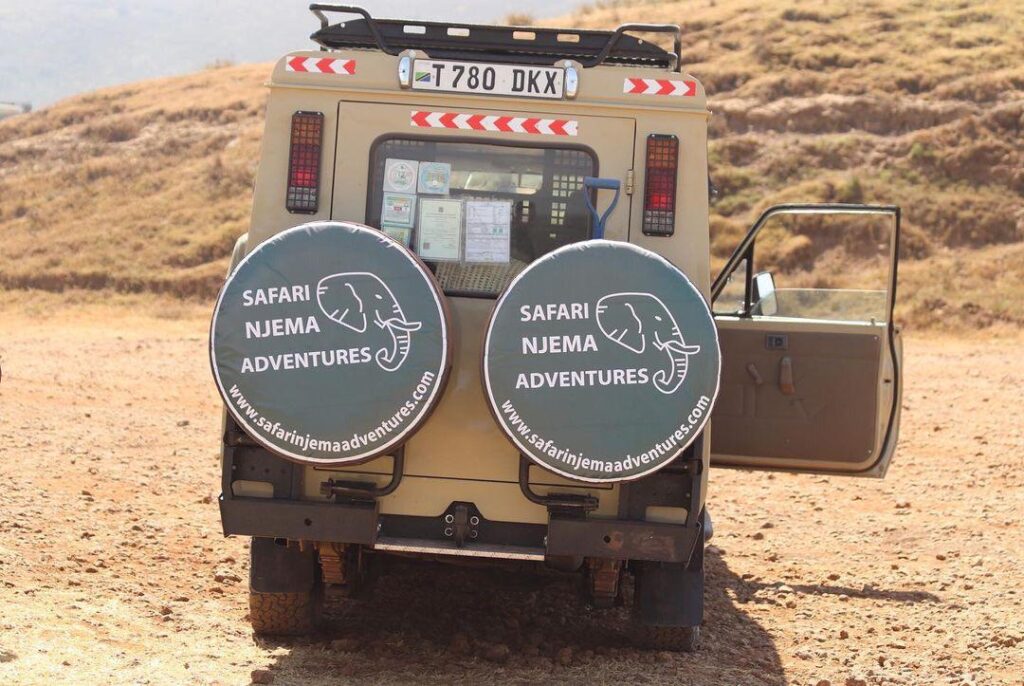
Lorem ipsum dolor sit amet, consectetur adipiscing elit. Ut elit tellus, luctus nec ullamcorper mattis, pulvinar dapibus leo.
Itinerary Pro Tips: Expert insights on crafting the perfect itinerary for an unforgettable adventure.
Embarking on a Tanzanian safari is like assembling the pieces of a wildlife puzzle to create an unforgettable adventure. To ensure your journey through the Serengeti, Ngorongoro Crater, and beyond is nothing short of magical, here are some expert insights on crafting the perfect Tanzanian safari itinerary.
1. Sunrise Serenades: Kickstart Your Day with Wildlife Wonders
Begin your Tanzanian safari itinerary with a splash of sunrise magic. The early hours offer the best lighting for capturing the majesty of the Serengeti’s inhabitants. Picture lions stretching after a night’s hunt or elephants meandering in the soft morning glow. Pro tip: Rise with the sun, and your safari adventure will unfold in a breathtaking symphony of wildlife serenades.
2. Ngorongoro Crater: The Crown Jewel in Your Itinerary
No Tanzanian safari itinerary is complete without a visit to the Ngorongoro Crater. This natural amphitheater hosts a stunning array of wildlife, from lions to rhinos. Pro tip: Schedule your game drive during the crater’s peak hours, and you’ll witness a wildlife spectacle like no other. It’s a Tanzanian safari highlight that deserves a prime spot in your itinerary.
3. Balancing Act: Wildlife, Culture, and Leisure
Crafting the perfect Tanzanian safari itinerary is a bit like planning a three-ring circus. Balance is key. Allocate time for game drives, but also embrace the local culture. Visit Maasai villages, explore vibrant markets, and savor leisurely moments to soak in the beauty of the landscapes. Pro tip: A well-rounded itinerary ensures your Tanzanian safari is an immersive adventure, offering more than just wildlife encounters.
4. Sunset Silhouettes: End Your Day with Photographic Perfection
As the Tanzanian sun bids farewell, seize the opportunity for sunset photography. Silhouettes of acacia trees against the warm hues of the evening sky create a mesmerizing backdrop. Pro tip: Choose a spot with a panoramic view, and let the sunset paint a perfect conclusion to each day of your Tanzanian safari itinerary. It’s a moment you’ll want to capture and cherish.
5. Flexibility is the Key: Nature Doesn’t Follow Schedules
No matter how meticulously you plan, remember that nature has its script. Be open to spontaneous moments. If a cheetah decides to cross your path or a herd of wildebeest starts a synchronized dance, embrace the unplanned. Pro tip: Build flexibility into your Tanzanian safari itinerary, allowing room for the unexpected. Sometimes, the most magical moments are the ones you didn’t see coming.
In Conclusion: Crafting Your Tanzanian Tapestry
Crafting the perfect Tanzanian safari itinerary is an art, and like any masterpiece, it requires a thoughtful blend of elements. From the crack of dawn in the Serengeti to the cultural richness near Ngorongoro Crater, each piece contributes to the larger tapestry of your safari adventure. So, heed these pro tips, let your itinerary unfold like a story, and get ready for a Tanzanian safari that will paint memories on the canvas of your heart.
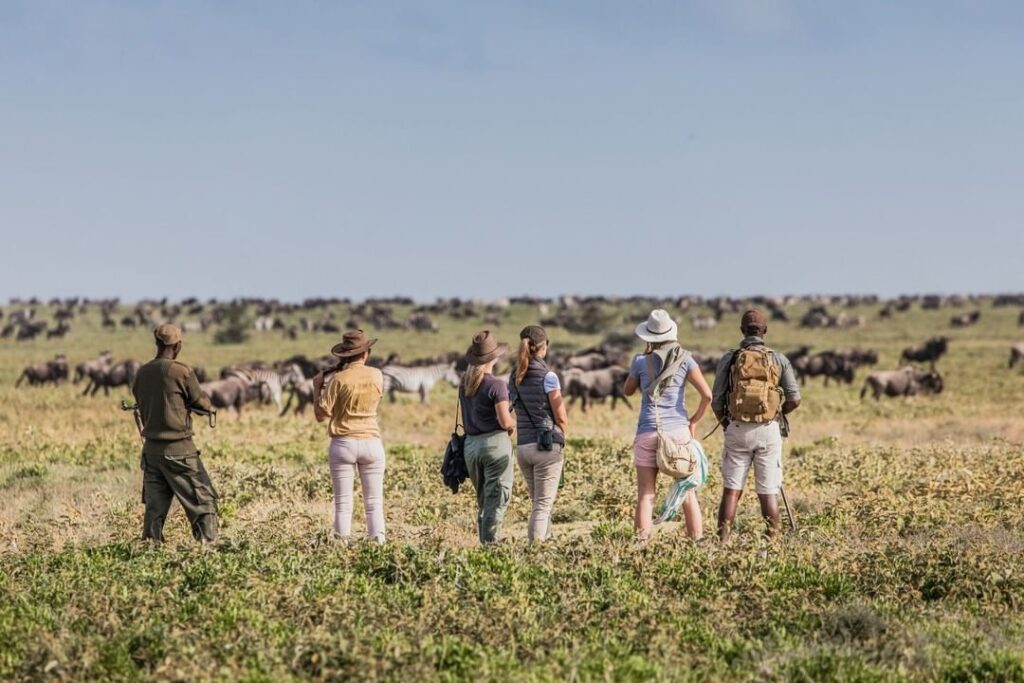
Wildlife Conservation Insights: Learn about the conservation efforts supporting Africa's unique ecosystems.
Embarking on a Tanzanian safari isn’t just about witnessing the incredible wildlife—it’s also about understanding and supporting the conservation efforts that sustain Africa’s unique ecosystems. Let’s delve into the heart of these initiatives, discovering the incredible stories behind the scenes.
1. Guardians of the Wild: Rangers and Their Tireless Vigilance
Meet the unsung heroes of Tanzania’s wildlife conservation: the rangers. These dedicated individuals work tirelessly to protect endangered species from poaching and habitat loss. Their commitment ensures that each lion’s roar and every elephant’s trumpet echoes through the savannah for generations. As you venture on your Tanzanian safari, take a moment to appreciate the vital role these guardians play in preserving paradise.
2. Community Conservation: When People and Wildlife Thrive Together
In Tanzania, conservation isn’t just about animals; it’s a shared responsibility with local communities. Sustainable practices, eco-friendly tourism, and community engagement initiatives are integral to the conservation narrative. Your Tanzanian safari itinerary contributes to these efforts, creating a harmonious balance where both people and wildlife thrive. It’s a win-win scenario that transforms your safari into a force for positive change.
3. Success Stories: From Endangered to Flourishing
Celebrate the victories in Tanzania’s wildlife conservation journey. Some species, once teetering on the brink of extinction, are now flourishing thanks to dedicated conservation initiatives. Witnessing a herd of black rhinos or a flock of vultures in flight isn’t just a safari moment; it’s a testament to the impact of conservation work. Your Tanzanian safari becomes a direct link to these success stories, showcasing the resilience and triumph of African wildlife.
4. Your Role in the Conservation Symphony: Responsible Safari Practices
As a safari enthusiast, your role in wildlife conservation extends beyond the lens. Embrace responsible safari practices that minimize your environmental footprint. Opt for eco-friendly accommodations, support ethical wildlife experiences, and adhere to conservation guidelines during game drives. By adopting these practices, your Tanzanian safari itinerary becomes a conscious contribution to the preservation of Africa’s natural treasures.
In Conclusion: A Tanzanian Safari with Purpose
Your Tanzanian safari isn’t just a vacation; it’s a journey intertwined with the spirit of conservation. From the watchful eyes of rangers to the collaborative efforts with local communities, every moment contributes to the preservation of Africa’s unique ecosystems. As you traverse the landscapes, remember that your safari isn’t just an adventure—it’s a commitment to safeguarding the wonders that make Tanzania a wildlife paradise.
Below are some of our highlighted tours and packages. If you are interested in the experience of a lifetime, please see more to book direct!
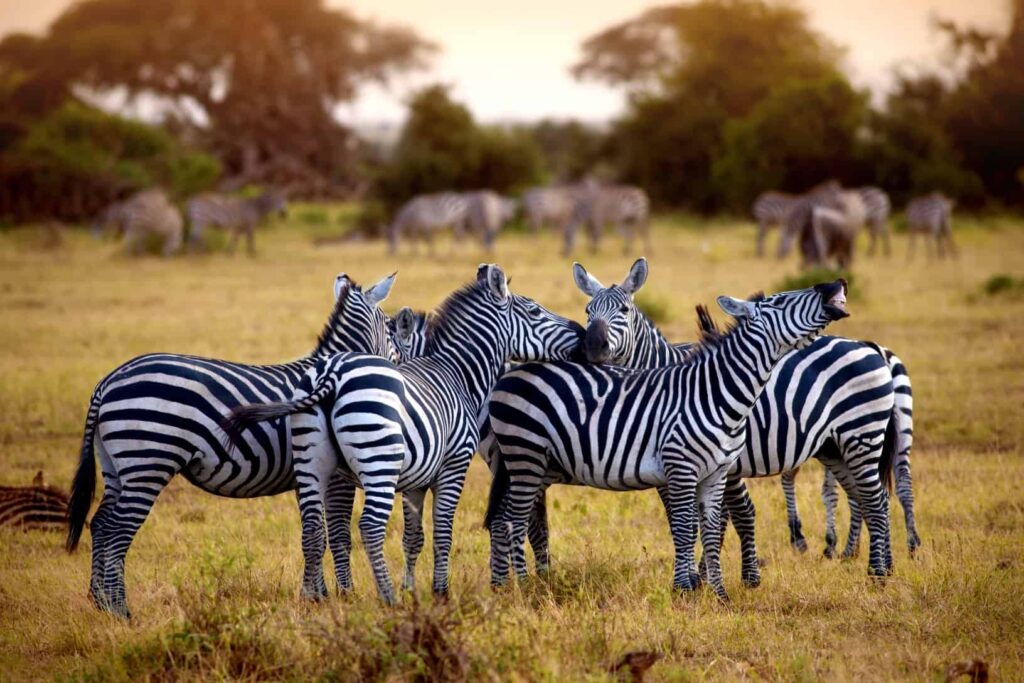
Related Posts:
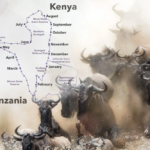
- Reset Password
VACATIONS YOU WON’T FORGET.
Safaris in tanzania.
Your long-awaited Safari is finally here, and it’s better than you could ever have imagined.
Embark on an unforgettable adventure with our tailor-made safaris in the heart of Tanzania’s breathtaking wilderness. From the majestic Serengeti to the iconic Ngorongoro Crater, immerse yourself in the wonders of Africa like never before.
We offer a range of customizable travel packages, designed to suit all budgets and interests. Whether you’re looking for a romantic getaway, a family vacation, or an adventure-filled trip
Why Choose Us?

Expert Guides :
Our team of experienced guides will lead you on an exclusive journey, sharing their in-depth knowledge of the local flora and fauna.
Luxury Accommodation:
Relax in style at our handpicked lodges and camps, offering unparalleled comfort amidst nature’s beauty.
Customized Itineraries:
Whether you seek thrilling game drives, serene bush walks, or cultural encounters, we design each safari to match your preferences.
Limited slots are available for the upcoming season. Don’t miss out on this chance to witness the wonders of Tanzania up close. Contact us today to secure your spot!
Book your adventure now, why go to tanzania.
Discover why Tanzania is the ultimate safari destination, boasting unrivaled wildlife sightings, stunning landscapes, and a rich cultural tapestry. Join us and explore the magic of Africa in its purest form.

Wildebeest Migration
Superb Game Viewing

Exclusive Lodge & Camps
Safari Destinations
Tanzania boasts top safari destinations including the serengeti national park, renowned for its annual wildebeest migration and diverse wildlife, ngorongoro crater, tarangire national park, and lake manyara national park., these destinations offer unparalleled opportunities for wildlife viewing and breathtaking natural landscapes in the heart of east africa., when to go .

Dry Seasons: Jan–Mar & Jun-Oct
The weather is usually mild and dry from January to March, and most of the safari crowds are absent. June to October is safari’s high season, and Tanzania’s major parks like the Serengeti, Ngorongoro Crater, and Lake Manyara are busy but weather conditions are fantastic.
It’s a great time to climb Mount Kilimanjaro and if it’s a tropical beach getaway you’re after, head to Tanzania’s coast, Zanzibar or other Indian Ocean island retreats between June and March.

Green Season: Nov–Dec
The ‘short rains’ season relieve the dry mid-year winter. Clouds build up in the mornings and break in spectacular, but generally short-lived, showers in the late afternoons. Migrant birds return from the northern hemisphere and resident plains game give birth, which means the predator action is thrilling. Landscapes are green and lush, which makes for the perfect photography conditions.

Migration Season: Dec–Sept
The herds usually cross the Grumeti River in the western Serengeti between about May and July. They then move towards the Mara River in the north to cross into the Masai Mara between about July to October.
November’s short rains trigger the herds to move back to the Serengeti to give birth during the calving season from January to March – a period renowned for bitter-sweet predator action.
How Much is a Tanzania Safari?
From usd 350 – $1,499.
Rates generally depend on timing (i.e. key travel seasons like holidays) and level of luxury (the type of amenities and exclusivity).
As a guideline, Tanzania safaris can range anywhere from approximately 450 USD per person per night in low season to over 1,499 USD at the finest lodges in high season.
Ready for your Tanzania Safari?
Contact us today to begin planning your dream adventure. let’s create memories together amidst the wonders of tanzania’s wilderness..

This is the Ultimate Safari Guide to Tanzania
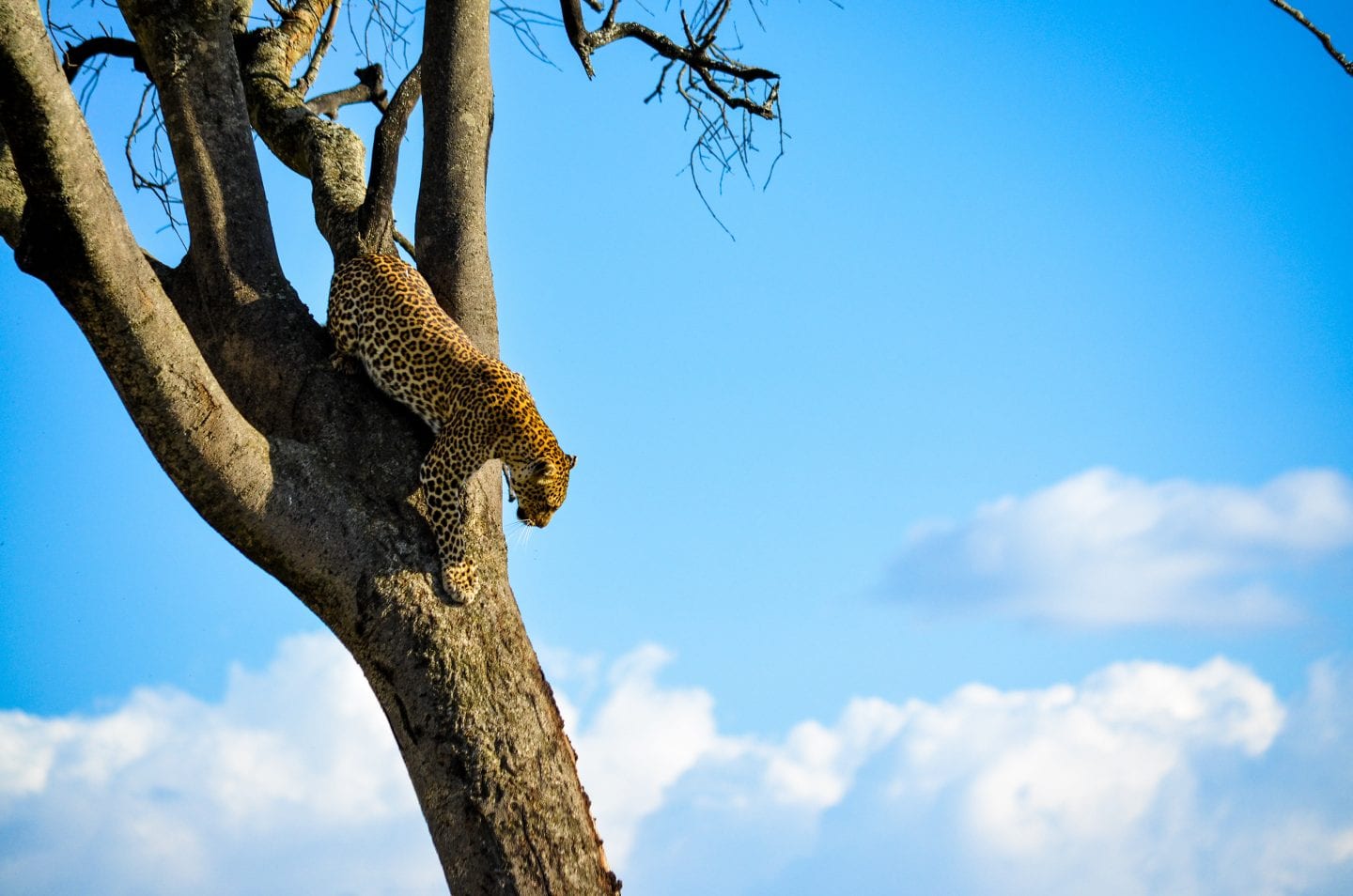
Tanzania’s natural beauty is world renowned. After all, countless documentaries and David Attenborough wildlife specials have been made about diving head first into this African wilderness and in Tanzania its beyond beautiful.
You just have to see it with your own two eyes to believe it.
The best way of observing Tanzania’s abundant natural beauty is by going on a safari. This will put you right in the middle of the action and allow you to see the animals in their natural environment ! However, before you set off on your safari adventure read this ultimate safari guide to Tanzania to ensure you get the most out of your trip.
THE BEST TIME TO VISIT TANZANIA
A post shared by Tom Archer 📷 (@tomarcherphoto) on Apr 11, 2018 at 10:52am PDT
The best time to visit Tanzanian national parks depends on a number of things: the Great Migration, the dry season that brings huge crowds and easily wildlife spotting opportunities and the wet season, an apparent lack of tourists and some of the best of nature.
- Best Season: Throughout the year (depending on preference)
- High Season: June-August
- Low Season: April- May
THE TOP THREE NATIONAL PARKS IN TANZANIA
A post shared by David Chen (@david_chen_76) on Apr 13, 2018 at 6:12am PDT
Ngorongoro Conservation Crater
This is downright the best safari destination for those visiting Tanzania. You get everything that you were hoping for, in one location. The Ngorongoro crater was formed millions of years ago, and for the longest time, the 600 meter tall walls acted as a natural border, making the flora and fauna within these walls thrive in a way inconceivable today.
The Ngorongoro Conservation Crater will give you the opportunity to observe some of the most exotic and endangered animals, and provide you with adventures enough to last a lifetime. It is also incredibly easy to access, so you do not have much to worry about!
- When to visit: All year
- Animal Sightings: Black rhino, wildebeest, elephants, gazelle, zebra, lion, spotted hyena, buffalo, cheetah, etc.
Serengeti National Park
From the moment we saw Lion King, a lot of us have been enamoured by the Serengeti, with its stunning fields, exotic animals, and the Great Migration. The Maasai were the one who named the place, referring to it as ‘the place where land moves on forever’. Serengeti National Park is one of the most ecologically diverse destinations in Africa, and a safari in Serengeti is a must-visit for those headed to Tanzania.
The most popular attraction in Serengeti is the Great Migration. The most stunning wildebeest migration usually starts around July-August. Besides that, the Serengeti National Park offers a number of special opportunities- world class safaris, hot balloon safaris, amazing hotels and camps, and so much more!
- When to visit: June-July, and January- February
- Animal Sightings: Wildebeest, gazelle, elephants, big cats, zebra, etc.
Mahale Mountains National Park
Mahale Mountains National Park is the best place for those who want an off-beat destination that is overlooked by most other tourists. It can be quite an adventure just getting to Mahale, as it is tucked away, and does not fall within the more popular parks circuit. There is also limited admittance into the park.
However, once you get to the park, you will get to explore human’s closest relative, the chimpanzee, in a way that is impossible elsewhere. The park boasts of stunning natural beauty and incredible views. Moreover- it is the best park for those who want the safari experience combined with Tanzania’s beautiful sand beaches!
- When to Go: May- October
- Animal Sightings: Chimpanzee, blue monkey, red-tailed monkey, red colobus monkey, leopards, warthog, antelope, bushbuck, etc.
TIPS AND TRICKS TO HELP YOU PLAN YOUR TANZANIA SAFARI
A post shared by South African Tourism (@visitsouthafrica_uk) on Apr 13, 2018 at 3:09am PDT
Here are some tips and tricks that will definitely help you plan and enjoy your holiday better.
Before you go:
- Go through the Tanzanian government’s visa requirements at least 3 months prior to your trip to get everything in order.
- You can also apply for the visa after landing in Tanzania (depending on your nationality).
- Those entering Tanzania would have to get a yellow-fever inoculation, and several other booster shots. Please go through the official list, and get all your vaccinations in order before visiting.
- Decide whether you want to explore Tanzania in style, or on a budget. There are great safari offerings for all budgets!
- Think about when you want to visit. If you want to see the great migration, you should visit between May-October. If you want to avoid the dry weather and wish to enjoy some solace, you should visit between November-March.
- Purchase sturdy walking shoes. It is possible to explore the safaris directly from your car, but this will not give you the full safari experience. It is highly recommended that you walk as much as you can between your destinations.
- Choose multiple national parks to visit. This way, you can explore the natural variation within the country.
- If you have internal flights within Africa, check the baggage limit, and pack accordingly. Some of the flights are rather small and have limited luggage capacity.
Whilst on safari:
- Every park has multiple safari offerings, so you should plan ahead. There are jeep safaris, boat safaris, group offerings, private tours, etc. Choosing between these will help you find the right safari for yourself, and book the tickets early.
- Private safaris are great for people who want a tailor-made vacation, whereas large safaris are good for those who want to explore all of Tanzania’s tourist offerings in one go.
- You can even opt for a flying safari, which will be the best way to spot the wildebeest running, but it won’t offer the best view of the animals during the rest of the year.
- Think about your accommodation options as well- Tanzania offers great opportunities for those who want to live in mobile camps, so do consider that option.
- When on the safari, avoid dark blue or black clothes, as they can attract disease carrying flies.
- Always carry an insect-repellent with you.
Have you been to Tanzania? Do you have any helpful tips to share? Leave your suggestions in the comments below.
Featured image CC Flickr Esin Üstün


Tanzania Safari 2024

We use only new Land Cruisers produced in 2016-2023 and fitted with a fridge, Wi-Fi and sockets
Our team of qualified safari experts knows how to tailor your adventure to your individual travel style
Annually approved for tour operating activities by the Ministry of Natural Resources and Tourism
We personally inspect every lodge and park before they land on your travel itinerary
Wildlife Safaris in Tanzania
Tanzania, Africa's safari gem, is a wildlife enthusiast's paradise. Imagine exploring the majestic Ngorongoro Crater and the vast Serengeti National Park. The country is home to the legendary Big Five and countless other species. From graceful giraffes and playful hippos to stealthy caracals, African wild dogs, and a myriad of other lesser-known animals.
On a Tanzanian safari, you're not just observing. You're part of the scene. Animals roam freely, offering a genuine glimpse into their daily lives. As dusk falls, the adventure doesn't end. You'll relax in comfortable lodges, the unique sounds of the savannah as your lullaby.
The country's landscapes are as diverse as its wildlife, from the Serengeti's dry plains to Ngorongoro's lush forests. Every corner of Tanzania offers a different slice of nature, promising a rich and unforgettable wildlife journey.
Get a glimpse into Tanzania safari from our short video
What happens on a safari in tanzania.
Picture yourself in a vehicle with a pop-up roof, offering stunning 360-degree views of the scenery. Animals often approach close enough for fantastic photo opportunities.
As night approaches, you'll settle into a safari lodge or mobile tented camp for dinner and rest. Your journey continues the next day, immersing you further into Tanzania's natural wonders. The country's breathtaking landscapes and rich wildlife have appeared on Hollywood screens in classics like "Hatari!" and inspired Walt Disney's “Lion King”.
But an African safari in Tanzania is more than just wildlife; it's a cultural journey too. You can visit Maasai villages to experience local traditions, and explore amazing historical sites like the Olduvai Gorge – the “Cradle of Mankind”.
For a unique perspective, try a walking safari through the savannah for close encounters with nature. Feeling even more adventurous? Soar above in a hot air balloon and enjoy scenic beauty from bird's-eye view. Altezza offers these and other off-the-beaten-path experiences to enrich your safari adventure.
Tanzania Safari tours
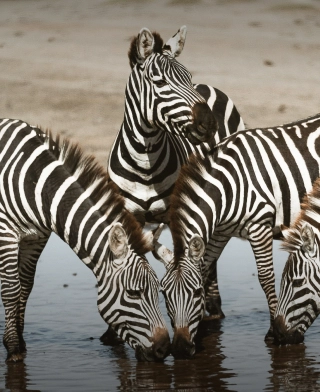
What to expect on our safari in Tanzania? Watch this short video

What animals you will see on Tanzania safari?
In Tanzania, the allure of spotting the 'Big Five' — lions, leopards, buffaloes, rhinos, and elephants—draws many to its safaris. While rhinos are rare in East Africa, they can still be spotted, especially in the Ngorongoro Crater. The other Big Five members are plentiful, promising exciting sightings.
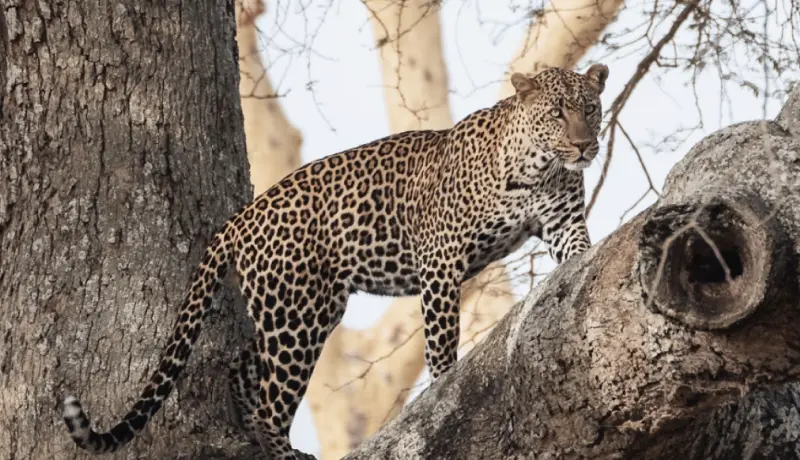
But there's more than the Big Five. Tanzania teems with wildlife like cheetahs, wildebeests, zebras, and monkeys. Bird lovers will be thrilled by the 1,156 bird species, including over 800 resident and hundreds of migratory species, best seen from December to April. At Altezza Travel, we have many passionate birders who are absolutely delighted with the diversity of avian life in Tanzania.
Tanzania Safari vehicles
During your safari, expect to spend significant time in vehicles for game drives, typically 5-8 hours daily. Sometimes, there are opportunities for walking safaris. You can also choose to have rest days at lodges, enjoying a more relaxed pace and lodge amenities.
The choice of a tour company with comfortable, well-equipped vehicles is essential for a great Tanzania safari experience. Our fleet includes customized Land Cruisers made in 2016-2023. Each vehicle is outfitted with amenities like Wi-Fi, a fridge, comfortable seating, and charging stations, making even long drives enjoyable.
We take vehicle maintenance seriously, ensuring each car is thoroughly checked and in top condition before every safari. This attention to detail ensures smooth travel to various national parks, minimizing the chances of any issues during your journey.
Learn more about our Safari vehicles in this video
You may also read more about our safari vehicles in this article .
Tanzania Safari guides
A skilled safari guide greatly enhances your experience. They will tell you fascinating facts about what you see. For example, why zebras rest their heads together, which animals intimidate lions, or why elephants flare their ears when alarmed.
Beyond wildlife expertise, guides are vital cultural intermediaries. They help to bridge language barriers with locals, such as when interacting with the Maasai.

At Altezza, we meticulously select our driver-guides, ensuring they excel in wildlife knowledge and driving in the wilderness. We attract top talent by offering competitive salaries and comprehensive benefits.
Tanzania Safari camps and lodges
Tanzania safaris are not just about wilderness adventures. The lodges where you stay play a big part in the experience too. Picture enjoying a drink on a terrace, overlooking the sprawling savannah – it's quintessential safari.
At Altezza, choosing the right lodges for our Tanzania safari tours is key. We scrutinize everything from room quality to staff professionalism and menu variety. Our team personally visits each lodge to ensure they match our high standards.
The location of lodges is vital. We pick lodges and camps for their stunning views, both from guest rooms and communal areas. Whether in the Serengeti, near the Ngorongoro Crater, or by Lake Manyara, you'll always feel immersed in the savannah's spirit.

Luxury Tanzania Tours
A luxury Tanzania safari offers a lavish twist on the classic adventure. These safaris stand out with their exceptional lodges. Akin to Europe's finest hotels they feature impeccable service and gourmet dining. At these lodges, you can indulge in an exquisite culinary journey, featuring luxury gourmet foods from Europe and beyond, alongside top-notch local organic dishes. This includes high-end wines and champagnes, an array of gourmet cheeses and cured meats, and much more. The rooms in these lodges exude luxury, offering spacious interiors elegantly furnished with handcrafted pieces. This level of opulence makes them a favored choice among celebrities and discerning travelers.
Booking early is key. Especially during peak seasons from late December to early March and late June to mid-October, when these lodges fill up fast. To secure your spot, we recommend reserving 3-4 months in advance.
We collaborate with prestigious hotel chains like Four Seasons, Singita, One Nature, and others, ensuring a premium stay for our guests. Additionally, we provide tailored charter logistics between parks and lodges, offering private jet transfers for an exclusive and seamless travel experience. This service is particularly advantageous during the peak season.
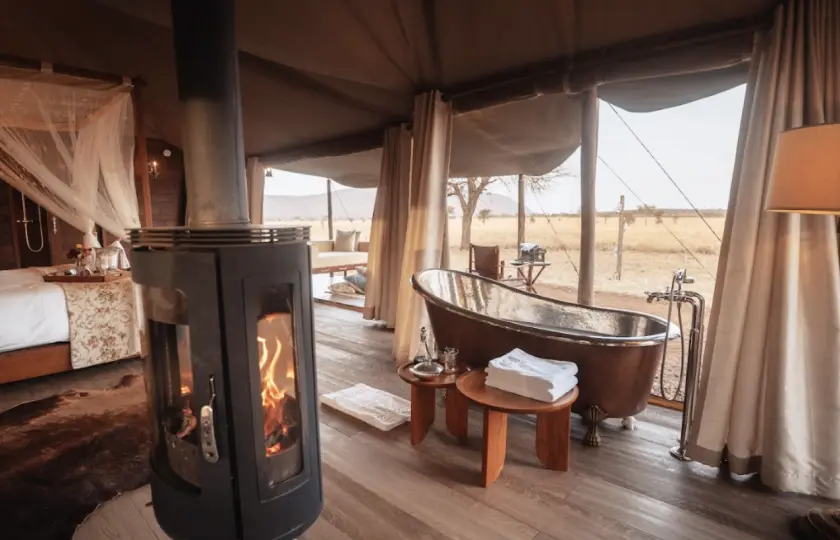
Hot air balloon flights
Experiencing a hot air balloon ride is a highlight of any luxury safari. Floating above Tanzania's savannah, it provides a breathtaking vantage point for spotting wildlife. Available in the northern regions – Tarangire and Serengeti National Parks, this is undoubtedly one of Africa's most unforgettable experiences. Many of Altezza Travel's clients were delighted to add air safari to their itineraries.
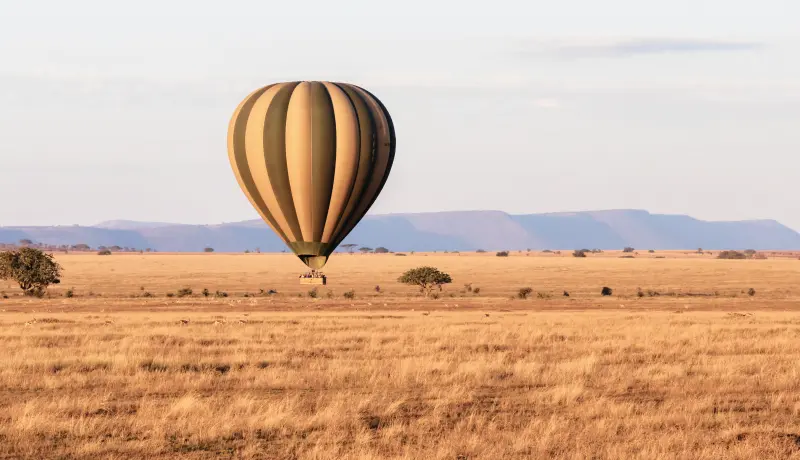
Bush aviation
Air travel significantly streamlines safari itineraries. Flying can turn the lengthy 8-9 hour drive from Arusha to the distant areas of the Serengeti into a convenient 2-hour flight. This quick transition means you can start your wildlife adventure almost as soon as you land, maximizing your time for wildlife viewing. Altezza Travel managers can easily add convenient air flights to your safari itinerary.
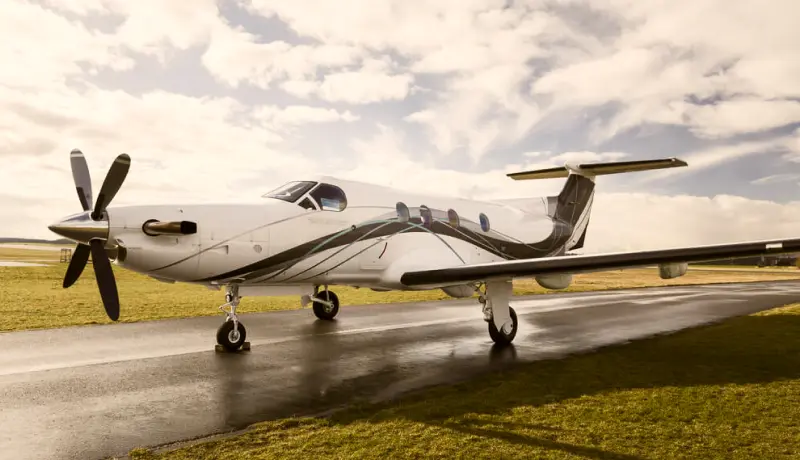
Which Tanzania Safari parks are best to visit?
Tanzania's most popular parks are undoubtedly in the Northern safari circuit. However, seasoned visitors or those looking for something different should consider venturing to the southern and western parts of the country. There, more exotic and less frequented experiences await.
Northern Parks
The Northern safari circuit is ideal for those who visit Tanzania for the first time or who haven't yet experienced all of its northern parks.
Serengeti National Park, is famed for its vast landscapes and rich wildlife. Central Serengeti is an amazing wildlife hotspot all year round. In July-August, the Northern Serengeti river crossings become the stage for the Great Migration's most dramatic moments, a must-see spectacle. The endless plains of Southern Serengeti come alive in January-February when thousands of wildebeests give birth. Meanwhile, the Western Serengeti offers a contrasting landscape of dense bush and forests, perfect for wildlife photography.
The Ngorongoro Conservation Area is another UNESCO World Heritage site alongside Serengeti National Park. The famous crater formed by a colossal volcanic eruption is a highlight of Tanzania's Northern Circuit safaris. The Ngorongoro Crater today resembles a scene from Sir Arthur Conan Doyle's 'The Lost World.' It boasts the world's highest animal density and is is a must-visit for an unforgettable safari experience.
Lake Manyara National Park is famous for the stunning sight of thousands of pink flamingos flocking along its shores each year. Lake Manyara National Park boasts a rich variety of animals. The lake itself adds a beautiful, serene backdrop, setting it apart from other parks.
Tarangire National Park is a must-see for anyone on a Tanzanian safari. It's a place where you can find towering baobabs, big prides of lions and herds of elephants roaming around, along with giraffes, zebras, wildebeests, hippos, and antelopes. Rare scenes of tree-climbing lions can also be spotted in Tarangire National Park.
Arusha National Park is another popular kick-off point for Tanzanian safaris. It's perfect for those with limited time since Arusha NP can offer a great one-day safari experience. This wildlife park is unique as it allows walking safaris, letting travelers who visit Tanzania get up close to wildlife.
Southern Parks
The Northern parks of Tanzania often steal the spotlight in safari itineraries. However, one shouldn't be overlooking the southern Tanzania circuit. These lesser-known Tanzania safari destinations will be particularly interesting for those on their second visit to Tanzania.
Ruaha National Park in Southern Tanzania is the country's second-largest national park. It is home to the largest population of elephants in Africa. Ruaha is a wildlife enthusiast's paradise, teeming with lions, leopards, cheetahs, giraffes, and a variety of antelopes. It’s a great choice if you’re looking for more off-the-beaten-path safari experience.
Nyerere National Park, formerly known as Selous Game Reserve, is Tanzania's largest national park and perfect for those seeking quieter safari trails. After the area received national park status, all hunting was prohibited. Now Nyerere NP is an amazing destination for peacefully observing animals in their natural habitats.
Western parks
Remote parks of Tanzania's west are accessible primarily by air. These parks are an excellent choice for those who have already explored other regions of Tanzania or are on an extended trip looking to maximize their experience.
Mahale Mountains National Park, located near Lake Tanganyika, is one of Tanzania's most remote parks. The presence of Lake Tanganyika creates strikingly different landscapes compared to the northern parks. Mahale Mountains NP is a top spot for seeing chimpanzees, yellow baboons, red colobus, as well as blue, red-tailed, and vervet monkeys, among other primates.
Situated in the western region of Tanzania, Katavi National Park is a pristine wilderness sanctuary. It is known for the world's largest herds of buffalo. This relatively unexplored park features a very diverse range of habitats. From reed-filled floodplains teeming with hippos and crocodiles, to woodlands, expansive grasslands, dense forests, and crystal-clear seasonal lakes.
Gombe Stream National Park, nestled by Lake Tanganyika, gained fame through Jane Goodall's groundbreaking chimpanzee research. The park is a hotspot for chimpanzees. it's also home to other primates like blue monkeys, olive baboons, and various colobus monkeys. In addition, here you can see various birds, bush pigs, hippos, and even leopards, the top predators of the park's monkeys.

Popular questions about Tanzania Safari
To really soak in Tanzania's safari wonders like Ngorongoro Crater, Serengeti, and Tarangire National Park, aim for a 5-7 day trip. This will give you enough time to explore the northern circuit and see the Big Five and other key animals. For those who can stay longer, there are incredible safari journeys lasting 20+ days!
If you're short on time, a quick safari covering Arusha and either Tarangire or Lake Manyara National Park can be done in 1-2 days. It's a great snapshot of Tanzania's wildlife. And, if you're keen on the Serengeti but pressed for time, flying directly there is a good option.
Choosing the right time for a safari in Tanzania really depends on your preferences. The dry season, spanning June to October and January to March, are ideal for wildlife spotting as animals gather around water sources. You'll enjoy sunny days, but expect crowds, especially during the Great Migration and the birthing seasons of zebras and wildebeests.
On the other hand, the rainy season, in April-May and November-December, offers a lush landscape with fewer visitors and potential discounts at lodges. Transition periods like late March, early June, late October, and November are perfect for a more peaceful experience, balancing good weather with fewer tourists.
You can learn more about the best time for a Tanzania safari and the recommendations of Altezza Travel team in this article .
The Great Wildebeest Migration is a mesmerizing natural spectacle for wildlife lovers, featuring over a million animals traversing the Serengeti-Mara ecosystem. Starting with calving in the southern Serengeti, near the Ngorongoro Conservation Area, they wind through the Serengeti towards Kenya's Masai Mara, returning by year's end. One of the most dramatic parts of this migration is the Mara River crossing. Here, the migration herds face the challenging currents and hungry predators lurking in the waters. Watching thousands of these animals navigate the Mara river is a highlight for many travelers.
The Great Wildebeest Migration in the Serengeti offers year-round drama, peaking with the wildebeest calving season in February-March and dramatic river crossing in May-August, before moving to Kenya's Masai Mara National Reserve from August to October.
Kilimanjaro International Airport is the gateway to northern Tanzania national parks like Serengeti and Ngorongoro Crater, and is close to Mount Kilimanjaro. For the southern parks, Dar Es Salaam International Airport is the go-to entry point.
For a safari, choose shirts and pants in neutral colors like khaki or gray to blend in and hide dust. Avoid white, blue, and camouflage clothing. Blue attracts tsetse flies and camouflage is restricted for civilians. Dresses are great for lodges but pants are practical for drives. Remember sun protection: a wide-brimmed hat, sunglasses, and sunscreen. For footwear, sandals are fine for lodges, but closed shoes are better for drives. Pack a warm jacket for chilly mornings and evenings, especially in high-altitude areas. Learn more in this article .
Two countries in East Africa provide remarkable safari experiences: Kenya & Tanzania. However, Tanzania frequently stands out. Many prefer it for its less crowded parks and abundant wildlife, which includes unique animal sightings. The extended Great Migration period in the Serengeti National Park is also a major attraction. Additionally, the country offers the opportunity to climb Mount Kilimanjaro , Africa's highest mountain.
Leaving the car on a Tanzania safari is allowed in designated areas only. Leaving a car right in the middle of the national park isn’t allowed because of safety considerations.
Regular visitors are not permitted to operate drones in Tanzania's national parks. However, special permissions can be obtained for filming projects. This process typically takes 3-4 months and incurs additional costs. Bringing a drone into Tanzania without the necessary permissions risks confiscation by customs officials upon arrival. You may read more about drone filming .
Wi-Fi is available in our safari vehicles. However, please note that in the more remote areas of national parks, coverage might be limited. You can also expect Wi-Fi in hotels and lodges across Tanzania. The connection in those locations can sometimes be intermittent too.
What else can you do in Tanzania?
Climb mount kilimanjaro.
Tanzania's allure isn't just its wildlife safaris. The challenge of climbing Mount Kilimanjaro also draws many. This climb demands thorough preparation, typically taking about 7 days. Other fantastic hikes like Mount Meru are also available. They may help to prepare for Mt Kilimanjaro, if you have the extra time.
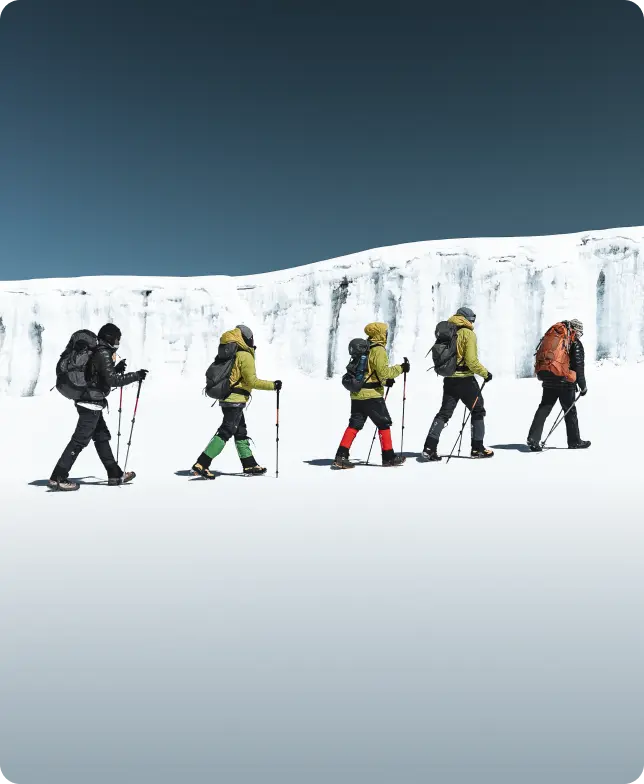
Visit Zanzibar and other Indian Ocean islands
Tanzania offers more than just mainland adventures. It's also the gateway to the Indian Ocean's enchanting islands like Zanzibar, Pemba, and Mafia Island. The Zanzibar Archipelago is a favorite for its historical charm and beautiful beaches. Relaxing on its beaches and exploring Stone Town is perfect for unwinding post-safari. The lesser-known Pemba and Mafia islands provide pristine coral reefs, amazing diving, and a tranquil escape.
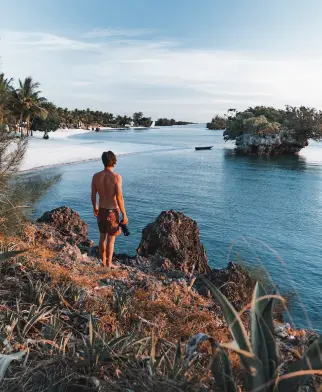
Our Reviews
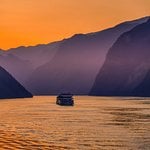
The ultimate safari guide for Tanzania – Everything you need to know
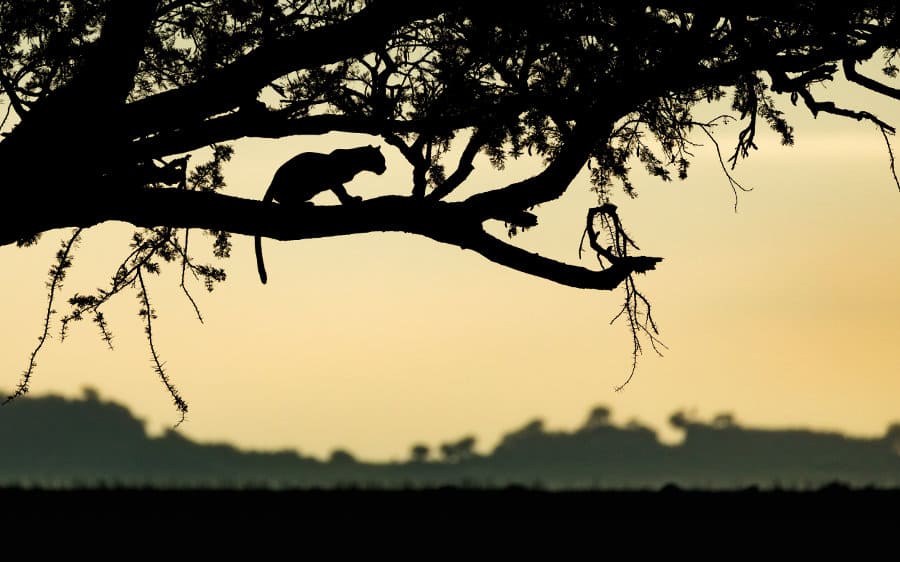
Perhaps you already know where you want to go for your safari experience, whether it is the North or South of Tanzania.

For most of us though, the first step is figuring out just what type of safari we are interested in, where we want to go , and what we want to see .
This ultimate Tanzania safari guide will help you properly prepare for the best possible adventure.
Picking Your Perfect Tanzania Safari Location
So the first thing you want to do is ask yourself the following questions to narrow down the choice of your perfect safari location .
- What do I want to see?
- What safari activities interest me?
- What time of year can I travel?
- Who am I travelling with?
- What can I afford?
What Do You Want to See?
If this is your first time going on a Tanzania safari, ticking off the Big Five is an absolute priority. The Big Five refers to the most iconic large mammals of Southern and East Africa – which includes lion , leopard , buffalo , rhino and elephant .

For the highest chance of seeing the Big Five, consider booking your safari at a Tanzania safari lodge in the Serengeti National Park or the Ngorongoro Conservation Area , both in the northern circuit. Ruaha National Park , in the southern circuit of Tanzania, is a great alternative option.
If you would like to watch predators in action – East Africa’s annual Great Migration river crossings is a good bet, as the vast herds of migrating wildebeest and zebra attract hungry predators.
What Safari Activities Interest You?
Traditional morning and afternoon game drives are offered in all of Tanzania . The northern circuit is known for its classic safari experiences, with early morning and afternoon game drives being the norm.
Walking safaris and night drives are permitted in Tarangire and some parts of the Serengeti, but they are far less common.
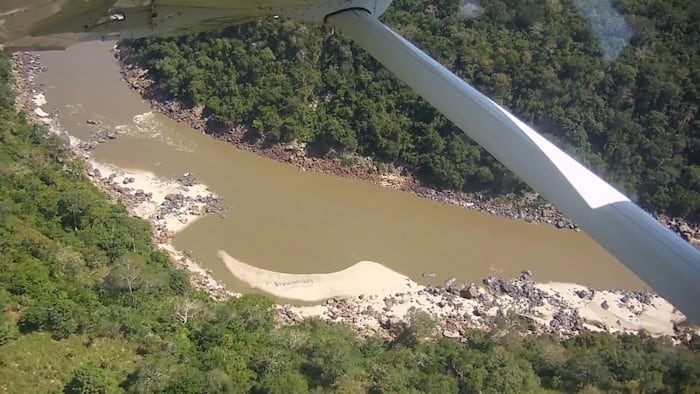
Morning and afternoon game drives, walking safaris with expert guides, and night drives are all standard in both Ruaha and the Selous Game Reserve . Selous specialities include boat trips down the mighty Rufiji River and fly camping expeditions.
Who Are You Travelling With?
If you are looking for a location that caters for honeymooners , couples or single travellers – Tanzania is a great option.

However, if you’re travelling with kids you might want to look for an area in Tanzania that caters to children and has more kid-friendly activities .
What Can You Afford?
There are a lot of factors that go into a Tanzania safari cost, such as location , time of year , and level of comfort – but there are some general guidelines to follow for your Tanzania safari budget.
Attempting to plan your safari on your own is not always less expensive or even possible. For your itinerary, you will need your agent’s specialized knowledge of ground handlers, light aircraft schedules, and transfer companies in many places.

- When you use an agent, you get a single ‘all-inclusive’ price. Your agent will have access to room availability, special deals, and other factors that will enable him or her to create an entire itinerary and the perfect Tanzania safari guide – including international flights – with a single cost, eliminating any “surprises.”
- The more privacy and exclusivity you desire, the more money you will spend. But you can still have a good time in a less opulent setting; this is where your agent’s knowledge and experience come in handy.
- Overland travel is one of the most cost-effective ways to see Africa. You spend a lot of time on the road and must travel in groups, but many overland trips provide comfortable lodging in no-frills lodges.
- Package deals are not always less expensive. A Tanzania safari tailored to your personal budget will allow you to save and splurge where you and your agent believe it is necessary. A package deal or scheduled departure tour binds you to a specific itinerary and a fixed price.
- Because of the favourable rand-dollar exchange rate, South Africa remains one of the most affordable safari destinations. The rainbow nation is an excellent ‘introduction’ to safari for first-time visitors to Africa. However, it also provides excellent rewards for seasoned safari-goers.
Should You Do the Northern or Southern Circuit of Tanzania?
You will not have a worse or better experience depending on which circuit you choose on your African safari. Both Tanzanian itineraries are fantastic safari destinations, and each has something to offer everyone.
In the end, it all depends on what one wants to take away from their Tanzania holiday experience. So here is the ideal Tanzania safari guide on which circuit you should choose.
Northern Circuit – Pros
The majority of the well-known game viewing Tanzania safari tours and safari camps are located in the north . Such as the Serengeti National Park, and maybe even the Ngorongoro Crater.
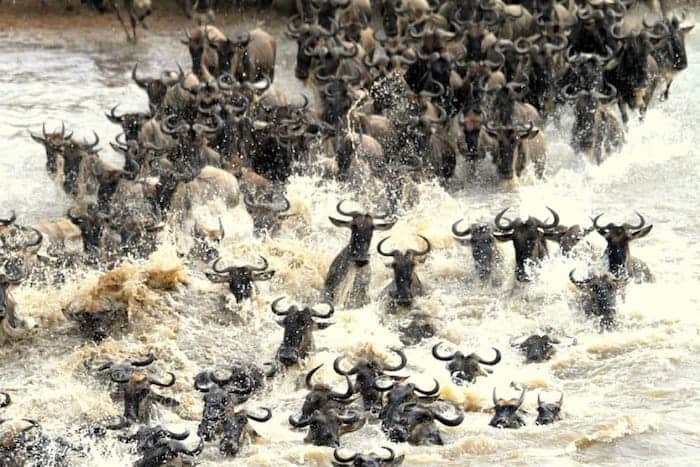
Tarangire and Lake Manyara National Parks are also part of the Northern game-viewing circuit.
The great wildebeest migration – which includes over 2 million wildebeests and zebras – is in full swing here, following the rain for nutrient-rich grass.
In the northern circuit also lies Ngorongoro Crater, the world’s largest natural caldera , with an ecosystem that includes open savannah , wetlands, and a forest.
Northern Circuit – Cons
Depending on the time of the year and chosen area of visit, one is likely to get traffic from other safari vehicles in the same region.
Serengeti is super popular, and attracts plenty of tourists on a Tanzania safari, so it might get a bit crowded .
Depending on the sighting, you can expect to share your experience with quite a few other people.
Southern Circuit – Pros
The Southern Circuit is not as busy as the Northern Circuit. The very positive side of this is that one gets to share their Tanzania safari experience with much fewer tourists, providing a greater feeling of exclusivity .
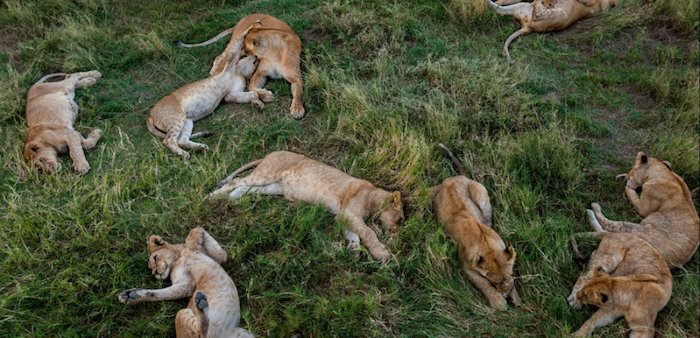
The South also offers excellent connections to the Main hub Dar es Salaam, making it a lot easier to connect to international flights.
Southern Circuit – Cons
The downside is that you won’t find wildlife in the same large numbers as in the Serengeti, making it more challenging to find the big five animals in one area.
One would have to travel to other places to see that, which is why we don’t recommend it for someone who hasn’t been on safari yet and still wants to see the big five.

The Southern Circuit is the best experience for someone who has seen the big five and knows what animals they would like to see.
If you’re visiting Tanzania for the first time, or even if you’ve never been on a safari before, we highly recommend the Northern Circuit . Wildlife expectations are much higher here, including the big five animals, predator cats and more, immersed in world-famous national parks.

If you’ve been to Tanzania before or want to experience a Tanzania safari in less crowded areas, the southern circuit is the obvious choice.
Tanzania is a beautiful country to explore and go on safari. It is undoubtedly one of our favourites . You will have the time of your life, whether it is your first safari or even your ninth.
Best Time to Visit Tanzania
There is no best time for a safari in Tanzania! The Serengeti is surrounded by the Great Migration, which can be easily followed.
The Mara River crossing takes place in June and July , and the dry season brings more animals to the waterholes.

After the rainy season, January to February brings fewer cars and greener landscapes; wildebeest give birth and predators are plentiful.
The cooler months of June to August are perfect for those looking to escape the sweltering African sun.
Mount Kilimanjaro is icy all year, but the Indian Ocean coast is warm, so you can escape there to warm up.
Best Tented Camping Options in Tanzania
A big part of planning the best safari in Tanzania is obviously booking the best accommodation. Here’s 4 of our favourite tented camps in the country .
- Asanja Grumeti
Asanja Grumeti is a luxury tent camp located in Serengeti’s western corridor, which hosts the most incredible wildlife spectacle in East Africa.
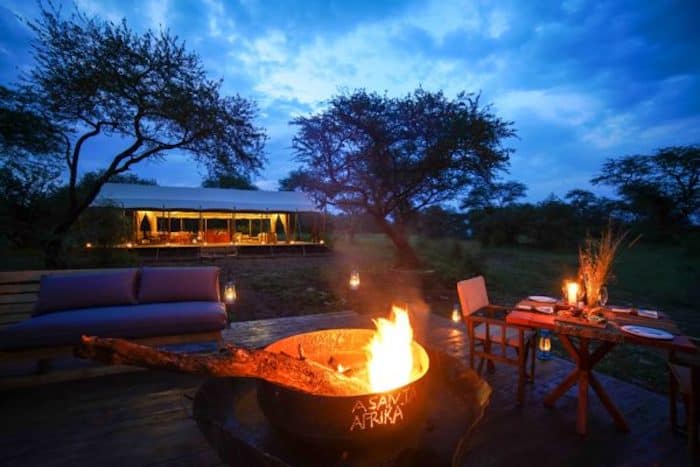
The Asanja Grumeti camp is open all year . This area attracts spectacular wildlife, including a lion pride that stays close to the camp.
- Serengeti Safari Lodge
Serengeti Safari Lodge in Banagi, 3.7 minutes from shop, has a sun terrace. The property is 3.1 minutes away from Ballon House (After Hours). On-site private parking is available for a fee.

Guests can dine at the on-site restaurant . The hotel also provides packed lunches.
- Ole Serai Luxury Camp
Ole Serai Luxury Camp, located in Serengeti National Park between Rongai Hills and Nyaroboro Hills, provides free WiFi. Hikes and game drives are available to guests. The accommodation has a spa, a lounge, and a fully stocked bar.

A fan is provided in each guest room. Each unit has a seating area, a private entrance, private veranda, and a viewing platform.
- Zawadi Camp
Zawadi Camp offers accommodation with a sunset view restaurant and bar, free WiFi, and a 24-hour front desk in the heart of the Serengeti National Park, 15 minutes from Serengeti Visitor’s Center Seronera.

Each of the six tented camps has its own private bathroom with hot water. Breakfast is served either continentally or à la carte at the tented camp.
Dinner barbecue is also available at Zawadi Tented Camp. This property has a shared lounge, and guests can go on a Tanzania safari experience nearby.
The camp is situated in the Kemarishe Hills , right next to the great animal migration, and is only a 30-minute drive from Seronera Airstrip and 3.7 miles from Retima Hippo Pool.
We hope you enjoyed our ultimate Tanzania safari guide, and that you feel much more prepared when planning your next African safari.
About The Author
Discover Africa
Related posts.

“Robbed” by an elephant (iPhone story)

How Tanzania chose me as an ambassador
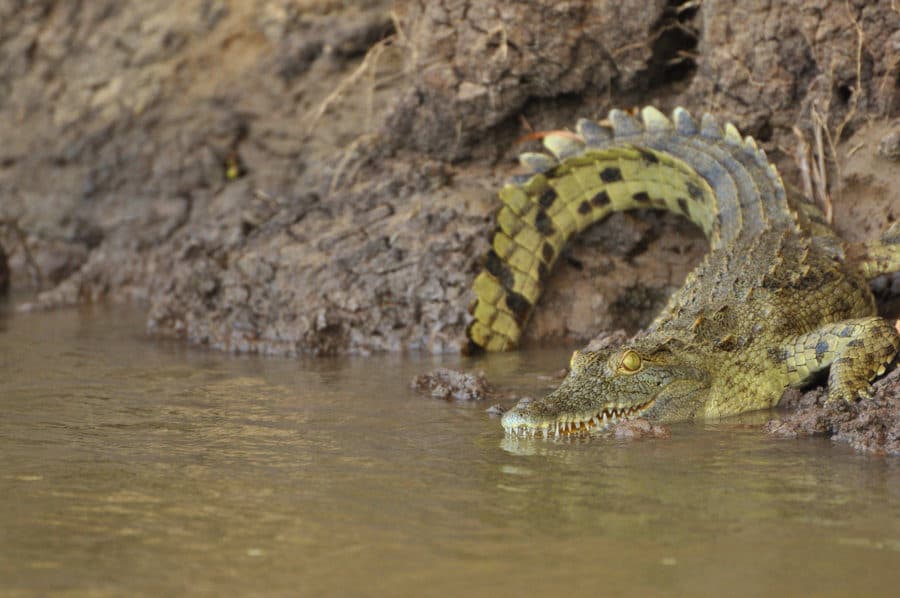
Katavi National Park: Tanzania’s best kept secret
Leave a comment cancel reply.
Your email address will not be published. Required fields are marked *
- Travel Guides Plan your adventure
- Destinations Our favourite places
- Tours Book a trip
- Travel Companies Independent specialists
- Travel Guides
- Destinations
- Travel Companies
How to book a Tanzania safari
An essential guide to planning and booking a safari in tanzania.
Heather Richardson
- In this guide
- How to book
- Tanzania beyond safari
- Need to know
- How many days
- Where to stay
- Private vs group tours
- How to choose
- What to expect
- What to pack
There's no denying it, a safari anywhere is an expensive trip – and a safari in Tanzania is at the pricier end of the spectrum. When you're coming this far and spending this much, you'll want everything to be just right.
But with so much to weigh up (and with much dubious advice to be found online), planning and booking a safari can feel a little daunting. Start by deciding where and when you want to go, then you can drill down into the finer details.
Camping safari or lodge? Group vs private tour? National park or private reserve? A lot of these questions are a function of your budget, but feat not, we've got you covered – read on.
Featured Trips
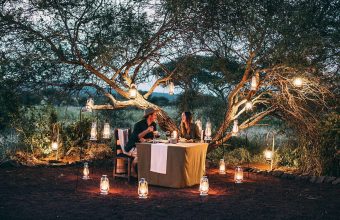
Tanzania Classic
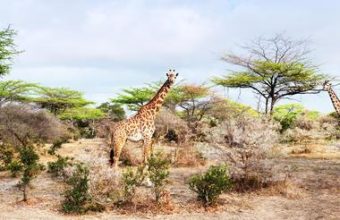
Southern Tanzania Adventure
Safari adventure in nyerere national park and ruaha national park.
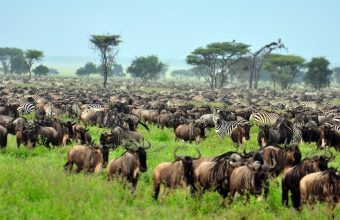
Tanzania Migration Safari
A complete tanzania safari in 8 days.
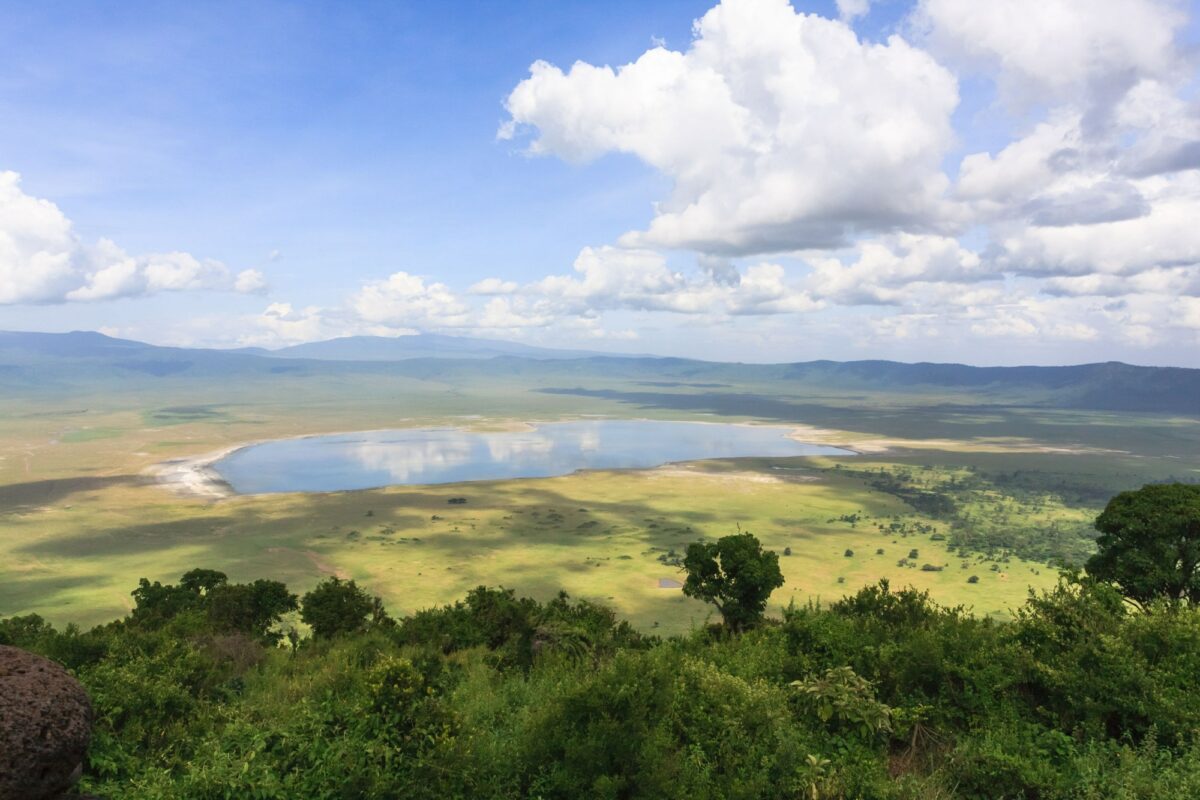
The classic view of Tanzania's Ngorongoro Crater
How to book a safari in Tanzania
Everything you wish you'd known before you booked, how many days do you need for a tanzania safari.
If you’re travelling from Europe or further afield, aim for at least a week. A typical two-stop safari trip might be three nights in the Serengeti and three nights in the Ngorongoro Conservation Area – three nights tends to be more relaxed than two which only gives you one full day at a camp. Account for a possible overnight in Nairobi or Dar es Salaam, depending on your international flights.
Ten days to two weeks is a good amount of time if you’d like to add on a beach break in Zanzibar and if you’re thinking of travelling further afield around the country – for example, combining the north and the south, or adding a chimp trekking experience.
For a Kilimanjaro summit, you’ll need at least a week factoring in arrival and departure days, and up to 12 days depending on the route you take – remember the shortest routes can be risky due to lack of time to acclimatise to the altitude. If you add a two- or three-night safari, you’re looking at around two weeks. Make it three weeks for the full Kili climb, safari and Zanzibar beach package.
How much does a Tanzania safari cost?
For all-inclusive safaris, consider a starting point of USD $4,000 per person for a seven-day trip, and upwards from there for more days or more luxury. If you do not mind longer drives and low- to mid-range accommodation, you may be able to drive that down to $2,500.
You can reduce costs by travelling out of season. Head to the Serengeti outside peak season (July to September) and you’ll find reduced rates on safari packages and a less crowded experience.
The more you spend on your safari, the more exclusive and diverse your experience tends to be. Fancy accommodation is not necessary, but the more expensive properties often offer a broader range of activities such as night drives and walks if they’re in a private reserve as opposed to a national park—which also means fewer other tourists—and excursions such as community visits.
Bear in mind that camps and lodges book up quickly, particularly during the peak river crossing months of July and August. It’s best to book your accommodation a year ahead if you want to see the river crossings.
Where to stay on a Tanzania safari
Park or reserve.
National parks are run and owned by the government, whereas private reserves are privately owned and managed. Typically, staying in a private reserve will be more expensive.
One of the main differences from a tourism point of view is exclusivity, as private reserves are not usually open to day-trippers.
Private reserves also usually have strict rules about the amount of vehicles around an animal sighting – usually a maximum of three. In a park like the Serengeti, you could find dozens of vehicles packed around an animal sighting.
However, national parks are generally much larger with a broader range of terrain and you can often self-drive.
National parks have more rules: access only between sunrise and sunset, often no walking safaris. Whereas a private reserve makes their own rules, so you can usually do activities such as night drives and bush walks, and you might be able to drive off-road to get closer to a sighting.
A game reserve like the Selous may be also managed by the government, but it’s specifically for sustaining game and there are usually fewer rules than national parks – often this is because of hunting activity.
Camping safari or lodge?
Generally, camps refer to tented structures, whereas lodges are permanent buildings.
Camps range from very basic fly camps, as used on multi-day walking safaris, to luxury camps with large, canvas-tented en-suites, four-poster beds and private plunge pools. There will usually be a main mess tent or a building where meals are served, possibly with a communal lounge area.
In the Serengeti, it’s common to find mobile camps that move with the wildebeest migration – they’ll be a little simpler, without any permanent structures, such as pools, but many of the top-end ones are still remarkably luxurious.
Many people prefer camps for a more ‘authentic’ safari experience and being able to hear hyenas whooping or lions roaring in the night (canvas tents are perfectly safe: it’s extremely rare for any large animal to try to enter a zipped-up tent).
For those who might be a little nervous, a lodge with proper walls may feel more secure. Lodges also tend to come with more luxuries; a gym, swimming pool or a spa, though there are plenty of basic mid-range ones, too.
Private safari vs group tours
In Tanzania, there are many available options for group tours and private safaris, depending on your travel style and budget. You can also self-drive in some parks, but you may miss out on a lot of information and insider knowhow without a guide.
The main difference between a private safari and a group tour is exclusivity. In a group safari vehicle, especially the less comfortable and more cramped minibuses, you sometimes have to fight for space and compete with the demands and interests of other safari-goers. However, it is significantly less expensive and you’ll be with like-minded travellers with whom you can share your safari experience.
In a private safari vehicle, either self-guided or with a guide, you can design your own programme and stop wherever you want, for however long. Your guide will be able to give you a much more intimate experience, answering your questions and trying to meet your specific requests, whether that’s looking for a certain animal or simply lingering longer at a viewpoint. With so much to see and experience, you might find it’s worth the extra money.
Good to know
One thing to note is the lack of guiding regulation in Tanzania: there’s no official organisation to grade and certify safari guides as in other countries. If you’re hiring a private guide, it is worth checking out some online reviews first.
How to choose a safari operator and accommodation
With thousands of companies out there, choosing a safari operator or camp can be overwhelming.
You can book everything yourself or through a tour operator or travel agent who will package the whole thing up for you, including transfers and flights. It might end up costing you more with their service fees, but for many it will be worth it, as safaris with multiple camps can be logistically complex.
Choosing your accommodation will certainly be easier if you book with a tour operator or travel agent who has visited the camps and can offer first-hand information about the properties. But there’s also a wealth of information online if you do your own research and know what to look for.
Many people opt for word-of-mouth recommendations. There are dozens of websites that list safari trip reviews, but also look to family and friends who will give you an unbiased assessment. Don’t pay too much heed to glossy magazine award lists; these are usually linked to PR budget or the connections of the owner.
Look at an operator or camp website and try to find some information on the company – for example, do they value sustainability and responsible travel? If they do, it should be stated on their site with some explanation. Do operators work exclusively with eco-friendly camps and lodges (and how do they assess that?); do they invest a portion of their profits in communities around national parks? Do camps use solar power and employ local workers? One thing you may want to consider is whether the camp or operator is locally owned to support Tanzanian entrepreneurs and business owners.
Then the practical considerations: If you’re booking a group trip, find out how many other people you'll be travelling with. If you’re staying at a camp, ask if the safari vehicles are private or if you’ll be sharing with other guests (if you have children, you may have to book a private vehicle). Is the vehicle closed (these are common in Tanzania) or open-sided? If you need to work or connectivity is a must, do they have WiFi?
Then the bottom line: Find out exactly what’s included – the top camps will include everything excluding tips and top-shelf alcohol; at others, you may have to pay for all your drinks. Find out what their payment policies are, including deposit, cancellation and refund terms and conditions. Factor in tips, which are ideally paid in cash (it differs depending on camps, but most mid- to high-end camps suggest tipping your guide around $10-20 per person per day and camp staff collectively $5-10 per person per day).
What to expect on safari
A typical day on safari will start early, before sunrise. After a coffee or maybe breakfast, you’ll head out on the morning game drive – there are two game drives a day, one in the morning, one in the late afternoon when animals are more active. Drives usually take around three hours, possibly more. Some camps even prepare a packed lunch so guests can stay out all day. It’s common to stop for a coffee break in the bush – a welcome chance to stretch the legs.
Back at camp, you’ll have breakfast or brunch and then you’ll have some hours to relax – read a book, swim in the pool if there is one, take a nap, have some lunch, before afternoon tea around 4PM and the evening game drive.
It’s common to have sundowners (a gin and tonic is the classic) in the bush as the sun is setting. Then it’s back to camp for drinks around the fire and dinner. Many camps have communal dining, with guests sitting together, often with a guide or host. Most people tend to hit the hay early in preparation for another sunrise start.
Tanzania safari FAQs
What passport/visa documents will I need?
At the time of writing, a visa on arrival is available at the Tanzanian border for UK citizens; you can also use their e-visa service to apply in advance, which you’ll need to use if you require a multi-entry visa. All people travelling to Tanzania require a passport that’s valid for six months beyond the intended length of stay. The entry requirement for any traveller entering Tanzania is a minimum of two blank pages in their passport. Don’t forget to bring your yellow fever vaccination certificate as they may check it at the border if you’ve recently been in an affected country. Always check with the appropriate authorities before travelling, as requirements can change.
Am I guaranteed to see the migration in action?
Nothing is guaranteed on safari and it’s best to go with low expectations, so everything you do see is a welcome surprise. The herds migrate around the Serengeti and Kenya’s Maasai Mara throughout the year, but most people think of the migration as the river crossings that take place between roughly June and October, depending on the rains. It’s worth noting that herds are known to gather on the river banks for hours or even days before they make a move – so, as with most safari sightings, it’s very much about being in the right place at the right time. The best advice is to not make the river crossings a sole reason for travel, but rather an added bonus if you do see one.
Do safari camps/lodges have water and power?
No matter where you stay, there will always be access to water and usually electricity. If you’re in a luxury lodge you have nothing to worry about, and even the most remote mobile bush camps have surprisingly sophisticated setups. The tent might be equipped with a simple ‘bush shower’, consisting of a shower bag, but the water can be heated.
Bush camps are often run by a generator that is turned off at night, so it’s a good idea to charge your batteries before going to bed. Many safari vehicles have chargers, giving you the chance to top up your batteries during the game drives.
In Tanzania, the power sockets are type D and G. The standard voltage is 230V and the standard frequency is 50Hz.
What are the vehicles and guides like?
Safari vehicles differ slightly in East Africa to Southern Africa in that they are not all open-sided Land Cruisers or Land Rovers. You’ll see many closed 4x4 vehicles, which are more suited to driver-guides who need to drive on roads outside national parks; they often have a pop-top, so you can stand up. The higher-end camps will usually have a fleet of open-sided vehicles that stay in the parks, which are much better for safari.
Most of the drivers are full-time safari guides – but note there is a not a standardised safari guide qualification in Tanzania. However, some of the top safari companies do have their own safari guide training programme in lieu of an official certification. Generally though, guides will be familiar with the routes, wildlife and knowledgeable of the area’s geography. Don’t be afraid to ask questions – it’s a good way to get to know your guide and for them to gauge what you’re interested in.
Will I have a chance to interact with local people?
Many tour operators and accommodations provide opportunities to visit local villages. For a relatively small fee you can go on a half-day tour, often with a local guide who can explain the culture and act as a translator for your questions. Included in the fee is also the opportunity to take pictures, but you should always ask permission first.
Be aware: Many of these excursions feel like being on a ‘human safari’. Be respectful and ask yourself if you would enjoy foreigners walking around your hometown taking photos of you or your children. These visits can be a good way to support people financially, so try to buy any handicrafts on sale, such as jewellery.
Often a less awkward way to learn about a culture is to take part in an activity – for example, honey hunting with the Hadza, which some camps help organise, or taking a bush walk with your Maasai guide.
Can I take my children on safari?
A family safari is a wonderful way to learn together, though it’s probably not best suited to babies or toddlers. Always check with your lodge or camp before booking, as some of them do have age limits or may ask you to book a private vehicle. Camps that are family-friendly may have babysitting services or specific activities for children. Bush walking is usually for over-16s only.
Will I have to carry lots of cash?
On safari, almost all expenses (meals, activities and often drinks) are covered in the cost of accommodation, which you’ll usually have settled before travelling. If you do need to pay on site, Visa and Mastercard are usually accepted but check before you travel. Tips are usually paid in cash – ideally in the local currency, but US dollars and sometimes Euros are accepted (and easier to get prior to travel).
Are safaris dangerous?
Generally, no. The wildlife you’re likely to encounter on safari will be habituated to the sound and appearance of safari vehicles. You’ll be given a briefing before your first game drive – be quiet around the animals, don’t stand up or get out of the vehicle unless your guide says it’s safe to do so. Though wild animals can never be entirely predictable, attacks on humans are extremely rare on safari. At reputable camps and lodges, the guides are trained to read animal behaviour and on a walking safari, they’ll be armed – though this is a last-ditch precaution and very rarely needed.
At your tented camp or lodge it won’t be uncommon for wildlife to wander through, as there are usually no fences, so never venture outside your tent or room when it’s dark without your guide.
Are antimalarials and vaccinations required in Tanzania?
Probably the most important health consideration is malaria. It’s recommended that medication be taken as a preventative measure (ask your doctor or at your local travel clinic), but don’t forget to wear long trousers and sleeve shirts especially at dawn and dusk. Camps usually have mosquito nets and bug repellent, but it doesn’t hurt to bring some of the latter with you as well.
Recommended vaccinations include Hepatitis A and tetanus (ask your doctor, health advice may change according to the individual). You may need a yellow fever vaccination certificate if you’ve recently been in a country with a risk of transmission.
Medical facilities are limited and medical care can be expensive, so make sure you have adequate health insurance.
What food is served on a safari?
Food is a central element to the safari experience – prepare to eat a lot.
The food served at most up-market safari lodges and camps is of high quality, some with set menus that wouldn’t look amiss at fine-dining restaurants, plus fresh bread and pastries, soups, salads and ice cream.
At most camps, the day starts with tea or coffee and biscuits, with breakfast or brunch before or after your game drive – expect cereals, fruit, bacon, eggs, sausage and toast to be offered. Lunch will likely be a light(ish) meal: chicken and salad or maybe quiche. Before your afternoon activity, there will be some light sweet and savoury snacks, maybe samosas and brownies. Dinner will usually be a three-course affair, with a starter followed by a meat, fish or pasta dish, and something like a slice of cake for dessert.
Is the water safe to drink in Tanzania?
Camps will have purified water for you to drink, either in sealed plastic bottles or, preferably, filtered water in reusable glass bottles. Don’t drink the tap water, though using it to brush your teeth will be fine for most people.
Is there internet access while on safari?
Internet access is now available at many lodges and camps, sometimes for a small fee. Expect it to be slow and potentially unreliable. When on game drives you’re not likely to get a signal, but your guide will be able to communicate with the lodge using their radio. Think of a safari as a chance to unplug.
What to pack on safari in Tanzania
Keep it minimal, especially if you’re travelling on light aircraft flights that have strict weight limits (usually around 15kg per person in a soft-sided bag).
Keep in mind that the midday sun can be brutal, but the early morning game drives can be very chilly. It’s important to bring layers. Pack light, loose clothes that are comfortable. Earth-toned colours are preferred, as brighter hues and stark whites can startle some animals—the aim is to blend in with the environment.
Wide-brimmed hat or baseball cap: A good sunhat or cap that keeps the sun off your head and face is very important, especially when spending so long outdoors.
Light, long sleeve shirts: Great for keeping you warm on an early morning safari and for protecting you from both the sun and mosquitos.
Walking shoes: A sturdy pair of shoes or trainers that can survive a bush walk are well worth investing in. Make sure you break them in before using.
Rain jacket: Bring a light waterproof jacket, especially if you’re travelling in the rainy season.
Binoculars: Although your guide will have a pair, it’s nice to have your own to ID a mysterious shape on the horizon or if you’re into birding.
Other essentials:
- Sunscreen and toiletries (though many camps will have the basics)
- Insect repellent
- Camera and extra memory cards
- Electrical converters and chargers
- Flashlight/head torch
- Painkillers and malaria medication
- Cash: US bills newer than 2006, Euros, or use an airport ATM to get local currency on arrival
- Fleece layer/down jacket
- Long trousers in earth tones
- T-shirts and tank tops
- Casual evening wear
What to do in Tanzania besides safari
About the author.
Heather is an award-winning journalist and editor based in Cape Town, South Africa. She writes for the BBC, Sunday Times , National Geographic , Lonely Planet, Departures Magazine , among others.
Featured tours
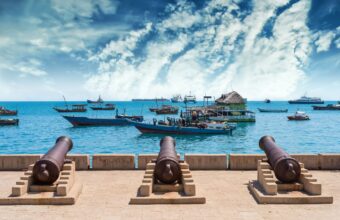
Tanzania Safari & Zanzibar
Experience tanzania’s mesmerising beauty in 11 days.

Northern Tanzania Adventure
Arusha national park, karatu, seronera and matemwe.

Featured tours View all

Why Horizon Guides?


Impartial travel guides
Our guides are written by the leading experts in their destinations. We never take payment for positive coverage so you can count on us for impartial travel advice.

Expert itineraries
Suggested itineraries and routes to help you scratch beneath the surface, avoid the tourist traps, and plan an authentic, responsible and enjoyable journey.

Specialist advice
Get friendly, expert travel advice and custom itineraries from some of the world's best tour operators, with no spam, pressure or commitment to book.
Our guides are 100% impartial and are written by independent, professional travel journalists. We make money by charging carefully-screened travel companies to list their business on our website. Our advertisers have no influence on our editorial content and we never accept payment for positive coverage.
Read more about how we work and what we believe in here .
- Travel guides
- Work with us
Sitemap , Privacy Copyright © 2024 Horizon Guides
- +256 (0) 779 820 753
- +250 (0) 790 089 902
- [email protected] | [email protected]

An Insider’s Safari Guide to Tanzania: According to a Local
An Insider’s Safari Guide to Tanzania: According to a Local. Our Tanzania Safari Guide shows you when to go to Tanzania, how to combine the best safari destinations , and how to get the best value for money. An excellent Tanzania Safari Guide will enable you to make an active and educated decision when organizing your Tanzania safari, but it won’t replace the guidance and support of one of our Africa Safari Experts.
In this Beginner’s Safari Guide to Tanzania, we focus on the tips and insights that will help you make the most of your time and money.
What happens on a Safari in Tanzania
Imagine riding in a car with a roof that pops up and lets you see the view from all sides. Animals often get close enough for great photo chances.
You’ll spend the night in a safari house or a mobile tented camp, where you’ll eat and sleep. The next day, your trip continues, taking you deeper into Tanzania’s natural beauty. Hollywood classics like “Hatari!” and Walt Disney’s “Lion King” were both based on the country’s beautiful scenery and diverse wildlife.
There is more to an African safari in Tanzania than just animals. It’s also a cultural trip. You can learn about Maasai traditions by visiting their villages and see amazing historical places like the Olduvai Gorge, which is known as the “Cradle of Mankind.”
For a different view, go on a walking tour through the savannah to get close to nature. Want to go on an even bigger adventure? Take off in a hot air balloon and see beautiful scenery from above. Kabira Safaris offers these and other unique activities that will make your trip more memorable.
Wildlife Safaris in Tanzania
Tanzania, located in Africa, is a haven for wildlife enthusiasts. It is renowned for its stunning natural beauty and abundant wildlife. Visitors can experience the awe-inspiring Ngorongoro Crater and the expansive Serengeti National Park, which are home to the famous Big Five and numerous other species. From elegant giraffes and playful hippos to elusive caracals, African wild dogs, and various other lesser-known animals.
A Tanzanian safari offers more than just observation; it allows visitors to become part of the natural environment. Animals roam freely, providing an authentic glimpse into their daily lives. Even after dusk, the adventure continues as guests relax in comfortable lodges, serenaded by the unique sounds of the savannah. Tanzania’s landscapes are as diverse as its wildlife, ranging from the dry plains of the Serengeti to the lush forests of Ngorongoro. Every corner of the country offers a distinct natural experience, ensuring a rewarding and unforgettable wildlife journey.
Why We Love Tanzania
It’s easy to fall in love with Tanzania’s rich cultures, big game attractions and natural beauty. As safari experts, what we value most about this country is the old-school service, the authentic safari style and the level of luxury you’ll experience here. Not to mention the incredible game viewing in Tanzania’s heavyweights like the Serengeti!
Tanzania Safari Packages
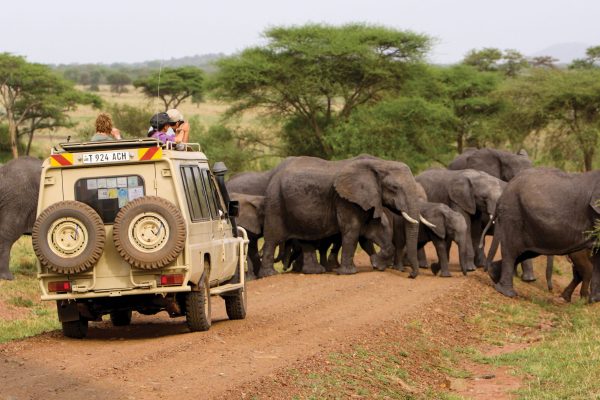
Luxury Tanzania Tours An opulent take on the traditional safari is available on a Tanzanian luxury safari. The outstanding resorts on these safaris are what really set them apart. Their excellent food and attentive staff are reminiscent of the best hotels in Europe. Luxurious gourmet cuisine from around the world, as well as the best organic produce from the area, are available at these lodges for your indulgent dining experience. A wide variety of gourmet cheeses, cured meats, and wines are all part of this. Elegantly adorned with handcrafted furnishings, the rooms in these lodges radiate luxury with their vast interiors. A lot of famous people and affluent tourists like them because of how luxurious they are.
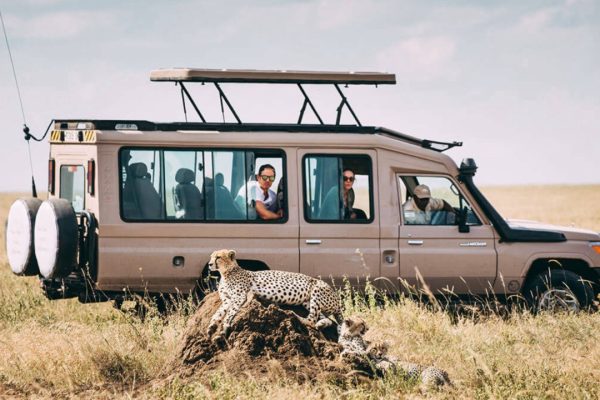
Budget Tanzania Safaris Safaris in Tanzania are on the list of must-dos for many tourists, and with good reason. Some of the world’s most famous sights, traditions, and animals call this nation home. It can be overwhelming to think about all the options for safaris and how to begin making plans. So, to help you find the perfect Tanzania safari for your budget, the experts at Tanzania Budget Safaris have compiled this comprehensive guide. We can assist you in organising the ideal vacation, whether you are seeking a tranquil lodge stay or an exciting camping excursion. Following is a list of our favourites!
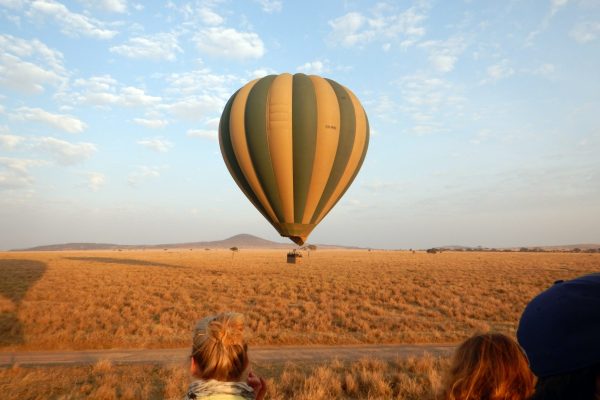
Hot Air Balloon Flights A luxury safari wouldn’t be complete without a hot air balloon trip. It offers a spectacular vantage point for seeing animals as it floats above the grasslands in Tanzania. You can have this once in a lifetime experience at two of Africa’s most famous national parks—Serengeti and Tarangire—in the country’s northern regions. Air safaris were a hit with many of Kabira’s customers.
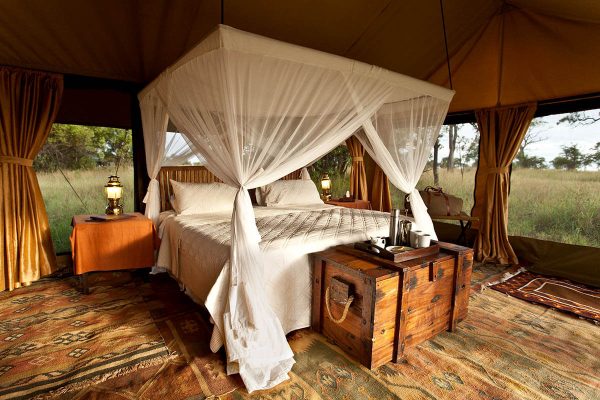
Camping in Tanzania Marvel at the Great Rift Valley’s breathtaking scenery while seeing animals roam freely throughout the savannah. You will go to the Serengeti under the guidance of an accredited safari guide in pursuit of amazing wildlife in its native environment. You may get a better look at the local wildlife and learn about the culture quickly and affordably at full-service campgrounds. Our compact safari vehicles cut down on travel time and increase the likelihood that you’ll get a picture-perfect sight of one of the “big five.”
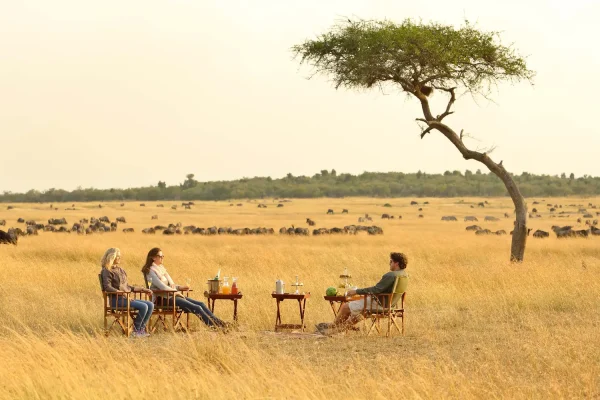
Tanzania Guided Group Safari Enthralling big game views, iconic landscapes, and cultural notes are all part of this seven-day safari that combines Tanzania’s “must-see” northern game reserves onto one uncomplicated itinerary. While journeying through the homeland of the traditional Maasai herders and their towns, you will have the opportunity to explore game reserves and be amazed by a variety of sights, such as large herds of wildebeest and big cats, as well as enormous volcanic craters and lakes that are illuminated by sunsets.
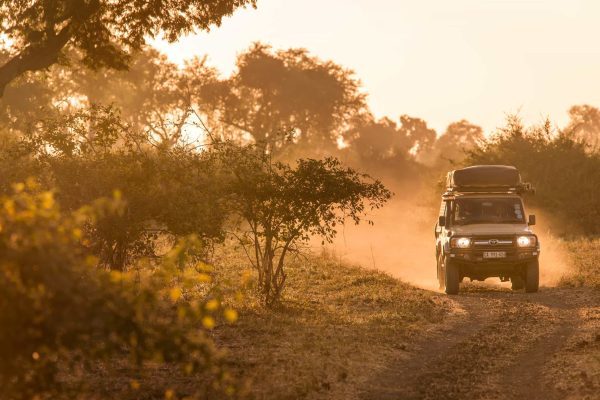
Self-drive Tanzania Safari If this is a once-in-a-lifetime opportunity for you, Kabira Safaris can craft an exciting and varied schedule for your vacation to Tanzania. Get in touch with us if you need assistance organising your rental car, park permits, and lodging for a well-planned road trip. You can opt for a self-guided tour or hire a local driver-guide for a more personalised experience. Rest your head at one of the many picturesque lodges or campgrounds that are part of our self-drive excursions after a day on the road. We take special care to seek out remarkable locations, and we give preference to eco-friendly boutique hotels that offer the most value for money.
Location: Where is Tanzania?
Tanzania is the second largest country in East Africa and one of the continent’s stalwart safari destinations. It lies on the idyllic Indian Ocean coast and shares borders with other incredible safari destinations like Kenya, Uganda, Rwanda, Zambia, Malawi and Mozambique.
Top Experiences in Tanzania
1. excellent year-round game viewing.
Tanzania is home to a great diversity of wildlife, fascinating cultures and natural, scenic beauty. It’s a dream destination from the classic, sweeping savannah of the Serengeti to the flamingo-lined shores of Lake Manyara, world wonder Ngorongoro Crater and Mount Kilimanjaro (Africa’s highest mountain).
It also offers bucket-list experiences that like chimpanzee trekking in the rainforests of Mahale and Gombe, and game viewing in the far-flung wildernesses of Katavi, Ruaha and Nyerere National Park (Selous).
Tanzania’s best wildlife safari destinations are:
- Serengeti National Park : Witness the Wildebeest Migration, High density of big game like elephant, buffalo, lion, leopard and giraffe
- Mahale Mountains National Park : Trek for chimpanzee in remote mountains, Sunset boat cruises on Lake Tanganyika
- Nyerere National Park (Selous) : Remote, raw and phenomenally wild, See animals in very large numbers – elephant, buffalo, hippo and giraffe, Home to rare wild dog
- Ruaha National Park : Undiscovered and off the beaten path, See the biggest elephant herds in East Africa, Superb predator sightings, especially wild dog
- Lake Manyara National Park : Boat safaris, Excellent bird watching, especially flamingos, Spot tree-climbing lions
- Tarangire National Park : See huge numbers of elephant, buffalo and giraffe (June to October), Fantastic bird watching – over 550 species
- Ngorongoro Crater: Best place in Tanzania to see the Big 5, Incredible cliff-top lodges
It’s worth noting that Tanzania combines beautifully with other safari destinations in East Africa like Kenya (home to the Masai Mara), and Uganda and Rwanda (exhilarating gorilla trekking adventures).
2. The Wildebeest Migration
Without a doubt, Tanzania’s greatest wildlife attraction is the annual Wildebeest Migration , which sees almost two million wildebeest and zebra follow seasonal rains across the Serengeti-Mara Ecosystem each year. Tanzania hosts the lion’s share of the Migration – two main events take place in the Serengeti:
- The mass calving season when almost a quarter of a million babies are born in the southern Serengeti.
- The dramatic Grumeti River crossings.
If witnessing the Migration is on your bucket-list, then knowing when to go is all-important:
3. Bush-and-Beach Holidays
Tanzania offers superb safari-and-beach combinations, thanks to its long tropical coastline and coral-fringed islands. You can easily fly from a safari camp after breakfast and be on a powder-soft beach in time for sunset cocktails.
Tanzania’s top tropical islands are:
- Zanzibar – one of the world’s most romantic honeymoon destinations.
- Mnemba Island – a private island holiday paradise.
- Pemba Island – among the world’s best diving sites.
- Mafia Island – swim with migrating whale sharks (about October to April).
Which Tanzania Safari parks are best to visit
Those taking a safari in northern Tanzania will surely visit the country’s most famous parks. The south and west of the nation, on the other hand, are worth exploring for seasoned tourists or those seeking variety. Experiences that are less common and more exotic await you there.
Northern Parks
Anyone visiting Tanzania for the first time or who hasn’t had the chance to explore all of the northern parks should do the northern safari circuit.
Serengeti National Park:
The expansive vistas and abundant wildlife of Serengeti National Park have brought it fame. The Central Serengeti is a fantastic place to see animals at any time of year. A must-see event, the Great Migration’s most dramatic moments take place in July and August at the Northern Serengeti river crossings. Thousands of wildebeests give birth in January and February, bringing life to the seemingly endless plains of the Southern Serengeti. The Western Serengeti, on the other hand, is ideal for wildlife photography due to its contrasting terrain of thick vegetation and woods.
Ngorongoro Crater:
Along with Serengeti National Park, the Ngorongoro Conservation Area is a UNESCO World Heritage site. The famous crater formed by a huge volcanic eruption is one of the best parts of safaris in Tanzania’s Northern Circuit. The Ngorongoro Crater looks like a scene from Sir Arthur Conan Doyle’s “The Lost World,” and it is a must-see for an unforgettable safari experience.
Lake Manyara National Park:
Thousands upon thousands of pink flamingos come to the beaches of Lake Manyara National Park every year, creating a breathtaking sight. The wildlife of Lake Manyara National Park is quite diverse. It stands out from other parks because to the lake, which provides a picturesque and tranquil backdrop.
Tarangire National Park:
Every safari traveller to Tanzania should make time to visit Tarangire National Park. There are a variety of animals that inhabit this area, including antelopes, giraffes, zebras, wildebeests, hippos, and large prides of lions and elephants. Tarangire National Park also offers the rare opportunity to see lions scaling trees.
Arusha National Park:
Safaris in Tanzania often begin in Arusha National Park. Arusha National Park is ideal for individuals who are short on time because it provides an excellent safari experience in a single day. Visitors to Tanzania can experience a one-of-a-kind animal encounter at this park thanks to its walking safaris.
Southern Parks
Safari itineraries frequently highlight Tanzania’s northern parks. One must not, however, ignore the circuit in southern Tanzania . Those returning to Tanzania for a second time may find these lesser-known safari locations very intriguing.
Ruaha National Park:
The second-largest national park in Tanzania is located in the southern region, and its name is Ruaha. The majority of Africa’s elephants call this area home. With its abundance of giraffes, cheetahs, leopards, lions, and antelopes, Ruaha is a wildlife lover’s dream. If you’re seeking a safari that is less touristy, it’s a fantastic option.
Nyerere National Park:
The largest national park in Tanzania, Nyerere (previously Selous Game Reserve) is ideal for safari goers looking for less crowded paths. The region was declared a national park, and all hunting was subsequently banned. Peacefully seeing animals in their own environments has never been easier than at Nyerere National Park.
Western Parks
The only way to reach the remote parks in western Tanzania is via plane. These parks are perfect for people who have been to other parts of Tanzania or who are taking a long vacation and want to make the most of their time there.
Mahale Mountains National Park:
One of the most isolated parks in Tanzania is Mahale Mountains National Park, which is close to Lake Tanganyika. The landscapes in the southern parks are drastically different from those in the north due to the presence of Lake Tanganyika. For a chance to observe a wide variety of primates, including colobus, vervet, blue, and red-tailed monkeys, yellow baboons, and chimpanzees, Mahale Mountains National Park is an excellent choice.
Katavi National Park:
The unspoiled natural haven of Katavi National Park lies in Tanzania’s western region. Its biggest herds of buffalo are its claim to fame. A wide variety of habitats can be found in this mostly uncharted park. Woodlands, vast grasslands, deep woods, and seasonal lakes with a pristine clarity contrast with reed-filled floodplains inhabited by hippos and crocodiles.
Gombe Stream National Park
Gombe Stream National Park, located adjacent to Lake Tanganyika, achieved renown due to Jane Goodall’s pioneering chimpanzee study. The park is a popular location for chimpanzees. Additionally, it harbours additional primate species such as blue monkeys, olive baboons, and numerous colobus monkeys. Furthermore, this location offers sightings of several avian species, bush pigs, hippos, and even leopards, who are the primary predators of the park’s monkey population.
What else can you do in Tanzania
Climb mount kilimanjaro.
The appeal of Tanzania extends beyond its wildlife safaris. Many are also attracted by the challenge of ascending Mount Kilimanjaro . This ascent requires meticulous preparation, usually lasting approximately 7 days. Additionally, there are other remarkable hiking options, such as Mount Meru. If you have additional time, they can assist you in preparing for Mt Kilimanjaro.
Visit Zanzibar and other Indian Ocean islands
Tanzania provides a variety of experiences beyond those found on the continent. Additionally, it serves as the entrance to the captivating islands of the Indian Ocean, such as Zanzibar, Pemba, and Mafia Island. The Zanzibar Archipelago is highly regarded for its rich historical allure and stunning coastlines. Indulging in the tranquil beaches and discovering Stone Town is an ideal way to relax after a safari. Pemba and Mafia islands, which are not as well-known, provide unspoiled coral reefs, exceptional diving opportunities, and a serene getaway.


[read_meter]
- August 30, 2023

Share This Post
Table of contents, introduction.
Tanzania Safari FAQ
Tanzania is one of the best places to go on a wildlife safari. It is home to some of the most spectacular national parks in the world. Whether you are a first-time Tanzania safari visitor or an experienced adventurer, getting ready for this amazing adventure may leave you with many questions. In this handy guide, we’ve answered the most commonly asked questions about Tanzania so you can plan your Tanzania safari with peace of mind.
Preparing for a Safari
Understanding safari and game drives.
Tanzania’s national parks are home to a wide variety of wildlife. A safari, which means “tour” in Swahili, is an excursion that takes you on a safari-like journey through the wilderness of Tanzania. Most safaris take place in the national parks, where you’ll travel in a custom-made 4×4 vehicle that allows you to explore comfortably. You’ll start your safari adventure in one of the following national parks: Serengeti Ngorongoro Tarangire Arusha Lake Manyara Rubondo Mkomazi Saadani Safaris can also be organized in lesser-known but equally fascinating parks.
Embracing the Lodge Experience
Lodges are small hotels situated in or close to national parks. You’ll be able to stay in a detached bungalow or tent in the middle of the African savannah. Lodges provide a sense of seclusion and exclusivity. Many of the lodges feature traditional local architecture and comfort levels that will make your safari an unforgettable experience.
Essential Items to Pack for a Safari
It’s important to pack light, comfortable clothes for the day, and warmer clothes for the cooler nights, particularly in the north of the country’s highlands. You’ll also want to pack comfortable walking shoes, especially if you’re planning on walking around the parks.
Don’t forget your hat, sunglasses and sunscreen, as well as insect repellents to keep you safe.
For more information on packing safari essentials, see our article on
“ What to Take on a Tanzania Safari? “
Age Restrictions and Park Visits
Age restrictions are not applicable in Tanzania’s national parks, however, it’s important to note that game drives are very long and can last up to a full day. This can be very tiring for young children, so we strongly recommend avoiding safaris with children under the age of 2. However, you can tailor game drives to your needs in terms of length and there are plenty of picnic spots in the parks where you can relax and soak up the beauty of the bush.
Tanzania Safari FAQ: A Unique Experience
There are two main reasons why Tanzania is an outstanding safari destination. First, hunting is banned in all national parks. As a result, Tanzania has a higher wildlife density than other African countries. Second, Tanzania’s higher park fees help keep the number of visitors relatively low, making the safari experience more exclusive and authentic. Unlike some countries, where you’ll often see small family cars on safari, in Tanzania you’ll only see off-road vehicles.
Safaris in National Parks and Game Reserves
Duration of a safari.
The length of your safari is entirely up to you. You can go for a one-day game drive in a nearby park, or you can go on a multi-park safari, which can last for two weeks or longer. A typical day’s game drive lasts from 4 to 8 hours, after which you can relax in your lodge for the remainder of the day. All lodges offer comfortable accommodation with Wi-Fi (though it may not always be available), delicious food, and most of the time a swimming pool.
Ideal Safari Start Times
We suggest starting your game drives around 6:30 to 7 AM. Here are a few reasons why:
Mornings are cooler, so you’ll be more comfortable.
Animals are at their most active in the early morning.
You’ll be able to beat the morning crowds and fully immerse yourself in the wilderness before heading back to your lodge.
Our experienced guides put your satisfaction first and are very flexible with scheduling, so you can tailor your safari to your needs.
Safari Vehicles: Your Ultimate Companion
Shiri adventures provides a fleet of customized 2016-2020 Toyota Land Cruiser 4×4 vehicles for your safari adventure. These vehicles offer ergonomic seats, fridges for cold drinks and snacks, electrical outlets for device charging, binoculars, and first-aid kits. The pop-up roofs allow you to stand and observe the wildlife comfortably, making it easier to capture breathtaking photos and videos.
A Culinary Journey in the Wild
Full-board meals are included in all Shiri adventures safaris packages. Breakfast is served at the lodge. Lunch is served in packed lunch boxes and can be enjoyed at picnic sites within the park. Dinner is served in the lodge. All Shiri safari vehicles are equipped with water, soft drink, tea, coffee and snacks. All of this is included in the Shiri safari tour price.
Seamless Transfers Between Parks
The national parks in the northern region of Tanzania are relatively close to each other, resulting in 2 to 3-hour drives between parks. This allows for efficient transfers and maximizes your time spent exploring the parks and encountering wildlife.
Exploring Nature: Park Regulations
Tanzania’s national park rules strictly state that visitors are not allowed to leave their vehicles inside the national parks. This is to ensure the safety of visitors and the health of the local ecosystem.
However, all the national parks have rest and picnic areas where visitors can relax, take a walk, and enjoy a bite to eat in the African bush.

Tailored Safaris: Private or Group
The type of safari group you choose will depend on the type of safari tour you’re planning to take. Joined safaris include people from different bookings. This means you’ll have the chance to meet and converse with other travelers during your safari.
On the other hand, if you’re looking for a more intimate experience, you can choose a private tour. Here, the only person in the vehicle is your English-speaking driver/guide. This allows for a more personal and intimate safari experience.
Unveiling the Role of Safari Guides
The role of your safari driver is crucial in keeping you safe, comfortable, and content throughout the entire safari.
Shiri adventures drivers not only know how to navigate the African wilderness, but they are also expert wilderness guides.
They know all the plants and animals in the area, making your safari even better.
Capturing Memories: Photography and Videography
Tanzania’s national park rules allow visitors to photograph and video without restriction as long as you don’t use any special equipment. You can use any standard camera for your safari photos and videos. However, you’ll need a permit if you plan to use your footage for commercial purposes. Permits are not required for social media use. Drones are allowed but require a permit, which you must obtain in advance. Please let your Tour Manager know if you need a drone permit as it can be complicated and time consuming.
Family-Friendly Safaris
Not only is a safari safe, but it’s also very educational and fun for kids. Seeing wild creatures in their natural environment makes for great memories.
However, it’s important to keep in mind that younger kids may find the hours in the safari vehicle tiring. We’d avoid safaris with kids under 2 to ensure they’re comfortable and happy.
Beyond the Safari: Unique Adventures
While on your safari, you have the opportunity to embark on additional adventures to further enrich your experience. One of the most memorable activities is a hot air balloon flight over the Serengeti plains, providing a breathtaking bird’s-eye view of this iconic landscape. Canoeing is also available in parks with lakes, offering a different perspective of the wildlife and surroundings. For panoramic views of the African bush, consider chartering a single-engine plane for a thrilling aerial tour of the parks. Contact our Tour Managers for more information on these and other exciting activities.
Efficient Park Transfers: Chartered Flights
Travel by chartered flights between Tanzania’s national parks saves time, especially in the southern parks. With airstrips at or close to all national parks, transfers are easy and maximize your time in the wild. Get in touch with our tour managers for more information and booking.
Staying Connected: Wi-Fi Availability
In Tanzania, all hotels and lodges offer Wi-Fi and Internet access. However, the speed may not be as fast as what you’re used to. Take advantage of the chance to disconnect from the world around you and soak up the beauty of Tanzania. There’s Wi-Fi, but the main focus should be on the safari experience.
Appreciating Exceptional Service: Tipping Safari Drivers
Tipping is customary in Tanzania, and it’s customary to tip your safari driver to show your appreciation for their service. We recommend a tip of $30-50 per day of the safari per car if you’re satisfied with the service provided.
Booking and Paying for Your Safari
Flights to tanzania: what’s included.
Our standard rates do not include international flights for safari tours. Since we work with clients from all over the world, it’s impossible to set a ‘one size fits all’ international air travel rate. However, our experienced tour managers can help you select and book your air tickets.
Advance Payments and Booking Deadlines
In order to make hotel booking and expedition logistics easier, advance payments for our tours are required. A 30% advance is required for Classic tours, while a 50% is required for Luxury & Premium tours. A full advance is required for all flights within Tanzania and accommodation & excursions in zanzibar, as well. Advance payments are normally made no more than 60 days prior to the start of the tour. During peak tourism periods such as Christmas and July to August, we recommend booking hotels well ahead of time, usually 4 to 6 months in advance. Large corporate groups should pay 6 to 8 months ahead of time to ensure quality accommodation in hotels with limited availability, especially during peak tourist season.
Making Full Advance Payments
Full advance payments can be made to our Tanzanian bank accounts. Please note that bank transfers generally take 3-5 days to complete. The client is responsible for all transfer commissions and charges associated with the payment.
Additional Costs and Exclusions
There are a few other things you’ll need to keep in mind besides the tour price: 1. Visa fees 2. Alcohol consumption at hotels (unless stated under all inclusive rates) 3. Tips for climb crews 4. Tips for safari drivers/guides 5. Average crew tips for a climb on Kilimanjaro is USD 250 per client. 6. The average safari driver tip is USD 30 to 50 per vehicle per day.
Cancellation Policy and Refunds
Our cancellation policy is as follows:
- Cancellations made no later than 30 days before the tour starting date: full refund, minus the cost of hotel booking cancellations and bank charges.
- Cancellations made no later than 15 days before the tour starting date: 75% refund, less the cost of hotel booking cancellations and bank charges.
- Cancellations made no later than 7 days before the tour starting date: 50% refund, minus the cost of hotel booking cancellations and bank charges.
- Cancellations made within 7 days of the tour starting date: 25% refund, less the cost of hotel booking cancellations and bank charges
Getting to Tanzania
Tanzanian tourist visa: what you need to know.
Citizens of the European Union and the United States can obtain entry visas upon arrival at international airports and other designated border crossings in Tanzania. Alternatively, you can apply for a visa online through the Tanzania immigration website. Visa fees generally amount to USD 50, with the exception of citizens of the USA who are charged USD 100.
Choosing the Right Airport for Arrival
Tanzania has three international airports: Zanzibar, Dar es Salaam, and Kilimanjaro. Depending on your itinerary, our Tour Managers will recommend the most convenient airport for your arrival and departure.
International Carriers Flying to Tanzania
Airlines such as Turkish Airlines, Emirates, Fly Dubai, KLM, and Ethiopian Airlines offer regular flights to Tanzania. The choice of airline depends on your preferences and budget. If comfort is your priority, consult the ratings of the World’s Top 100 Airlines 2017. Otherwise, select the airline that best suits your needs and budget.
Arrival Assistance and Late-Night Arrivals
Regardless of your arrival time, one of our drivers will be waiting for you at the airport with a sign bearing your name or your group’s name. We provide reliable and convenient airport transfers to ensure a smooth start to your safari adventure.
Accommodation in Tanzania
Tailor-made hotel selection.
If you’re booking a tailor-made tour, you have the flexibility to choose any hotel of your preference. Simply inform your Tour Manager, and they will calculate the cost difference for you. We strive to accommodate your preferences and provide the best possible experience during your stay.
Exquisite Cuisine at Tanzanian Hotels
Tanzanian hotels cater to international tastes, adapting their menus to suit European palates while incorporating local dishes. You can expect a diverse range of culinary options during your stay. When booking, inform your Tour Manager about any dietary preferences or restrictions to ensure a delightful dining experience.
Tanzania’s Currency and Payment Options
The official currency of Tanzania is the Tanzanian Shilling (TZS). The current exchange rate is approximately TZS 2,400/USD 1. While cash payments in US dollars are widely accepted, it’s important to note that notes issued before 2003 may not be accepted or may be exchanged at a lower rate. Some hotels and exchange offices also accept Euros and other major currencies, although preference is often given to US dollars. The exchange rate for non-US currencies may not be as favorable, so it’s advisable to carry US dollars for convenience.
Security and Health in Tanzania
Safety for tourists in tanzania.
Tanzania is considered a safe destination for tourists. The country relies heavily on tourism for its foreign income, and local authorities prioritize the safety and well-being of visitors. Tanzania boasts political stability within the region, and its people are known for their friendliness and hospitality. While some instances of criminal activity may occur, exercising common sense and following basic safety precautions will ensure a secure and enjoyable experience:
- Avoid dangerous areas within towns, which are typically highlighted in guidebooks or can be pointed out by your guide.
- Keep your belongings secure and never leave them unattended.
- When taking photos in towns, it’s advisable to have a guide accompanying you to facilitate communication with the locals. Respect local privacy and cultural sensitivities.
- In the evening, it’s recommended to use taxis for transportation within towns rather than walking. Your tour operator or hotel reception can assist in arranging safe transportation Read more about Tanzania safety
Health Precautions: Malaria and Vaccinations
Yellow fever has not been reported in Tanzania’s tourist regions for the past two decades. However, if you plan to visit less-visited areas, it may be advisable to receive a yellow fever vaccination at least two weeks before your travel. This vaccination is effective for ten years. For more information on recommended vaccinations, consult our article on Tanzania vaccination requirements . Malaria is present in certain parts of Tanzania, but the risk is often exaggerated. Most national parks are low-risk areas, but remote regions may have a higher risk. It’s essential to take necessary precautions to prevent malaria, such as using mosquito repellent, wearing long-sleeved clothing, and sleeping under mosquito nets. For more information, refer to our article on malaria prevention .
Travel Insurance: A Wise Investment
We strongly advise having comprehensive travel insurance when visiting any foreign country, including Tanzania. Your travel insurance should cover potential medical emergencies and evacuation, especially if you plan to climb Kilimanjaro, with coverage extending to altitudes above 6,000 meters. If needed, our Tour Managers can assist you in purchasing suitable travel insurance for your safari adventure
Water Safety in Tanzania
All hotels recommended by Shiri Adventures provide safe drinking water, and it’s perfectly safe to use tap water for showering and brushing your teeth. However, for peace of mind, we recommend drinking bottled water, which is readily available at hotels and shops throughout Tanzania
Start Planning Your Tanzania Safari Today!
Tanzania offers an unparalleled safari experience, allowing you to witness the wonders of African wildlife in their natural habitats. With this comprehensive guide, you have all the information you need to plan your safari adventure with confidence. Contact our experienced team at Shiri Adventures to start designing your tailor-made tour and embark on the journey of a lifetime.
Want to know more about Tanzania adventures?
Read other articles.

Kilimanjaro Porters: Heroes Carrying The Dreams of climbers

Luxury Hotels in Tanzania Opulent Retreats Await

Kilimanjaro Glaciers Exploring the Mystique of Kilimanjaro

Unforgettable Experiences: Our Top Picks for Serengeti Lodges and Camps

Unveiling the Secrets of Ngorongoro Crater: Tanzania’s Hidden Gem
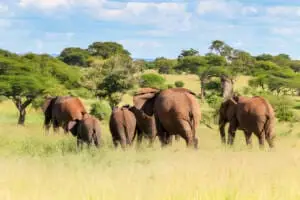
Planning the Perfect Family Safari in Kenya Create Lasting Memories
Our products.
- Kilimanjaro
- Useful Information

Shiri Adventures is a local operated company offering trekking & Safaris throughout East Africa. For us, adventure is more than our passion, it’s our purpose.
GENERAL INQUIRIES
+255 743 689 184 [email protected]
Terms & Conditions

INFORMATION

TAILOR-MADE PRIVATELY GUIDED SAFARIS OF YOUR LIFETIME
We are safari experts specializing in the design and delivery of tailor-made privately guided safaris across tanzania within the framework of nature conservation and sustainable safaris. we would love to take care of everything for you and create your dream private safari.

PRIVATELY GUIDED SAFARIS

SAFARI TOURS

ACCOMMODATIONS
Wishing to go on a safari in Africa? Overwhelmed with all the information? Eyes 4 Nature Safaris helps you plan your dream private safari in Tanzania’s National Parks, Game Reserves, and Tropical Island Beaches. We will guide you through the process to your own 100% tailor-made safari. From mountain trekking, and wildlife safaris, to beach holidays, from low budget to high budget, you name it, we will make it happen for you!

We aim to minimize the negative impacts of climatic change and be an active contributor to our local community’s economic development.
We have a long-term vision for our company because we believe there needs to be continuous planning and implementation to preserve, protect and conserve the natural resources of Tanzania so as to ensure a sustainable future for the people, flora, and fauna of the country.
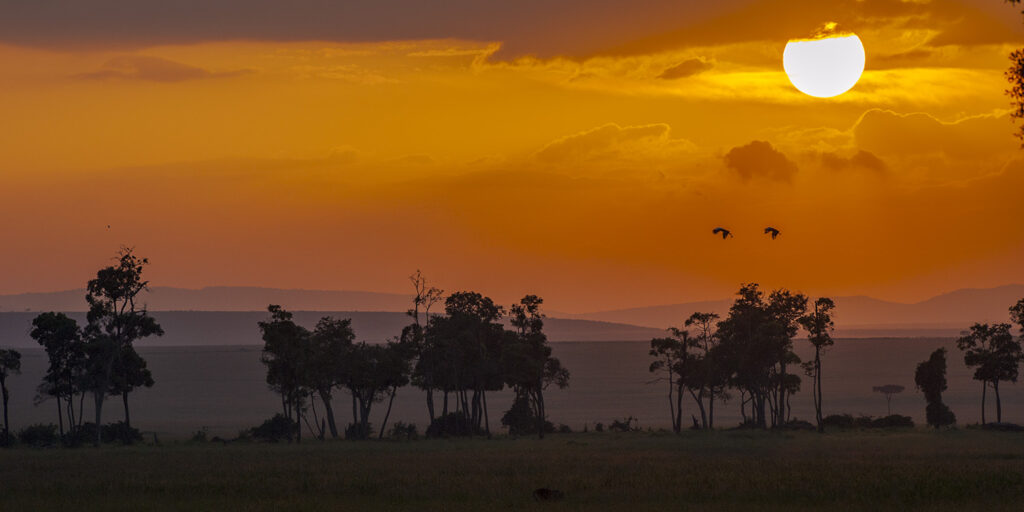

- About Nature Discovery
- Responsible Tourism
- Leaders in Ethical Porter Treatment
- Visiting Tanzania FAQ
- Climbing Kilimanjaro
- Scheduled Group Treks
- Private Treks
- Non-Summit Treks
- Number of Days
- Approach Routes
- Circuit & Summit Routes
- Overnight vs Daytime
- Weather & Seasons
- Temperature Patterns
- Climbing Gear
- Private vs Scheduled Trek
- Our Climbing Guides
- Our Support Crew
- Safety – Setting the Standards
- Camping Equipment
- Gourmet Food
- Lake Manyara
- Lake Natron
- Lake Victoria
- Camping Safaris
- Lodge and Permanent Camp Safaris
- Our Vehicles
- Trekking with Nature Discovery
- Our Signature Trekking Safaris
- Ol Doinyo Lengai
- Mount Meru, Ngorongoro Highlands, and Other Treks
- Our Seasonal Camp in Maasailand
The Role of Tanzanian Guides: Elevating Your Safari
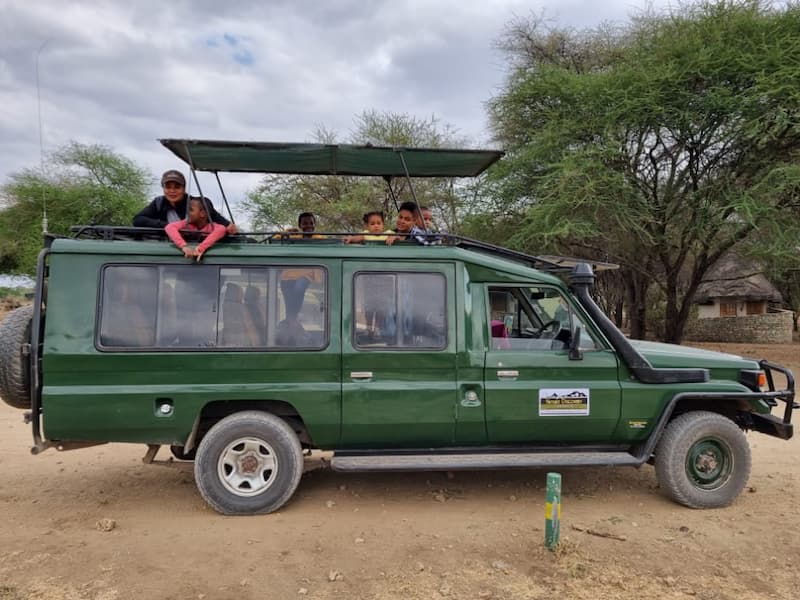
When it comes to embarking on a thrilling safari in Tanzania, the role of your guide is paramount. Nature Discovery’s safari guides are not just there to lead you through the wilderness; they are instrumental in shaping your travel experience and ensuring its sustainability.
Here we explore the key qualities that set our excellent safari guides apart and the impact they have on your adventure.
- Creating a Welcoming Atmosphere
Your guide should be the catalyst for a vibrant and inclusive group dynamic. Their enthusiasm, approachability, and engaging nature create a comfortable and safe environment. Don’t hesitate to ask questions or express concerns; a good guide will encourage curiosity.
- Effective Communication for Seamless Travel
Clear communication is the linchpin of a successful journey. Your guide must effectively convey the daily itinerary and expectations. In sensitive destinations, precise communication is crucial when explaining cultural norms and local customs.
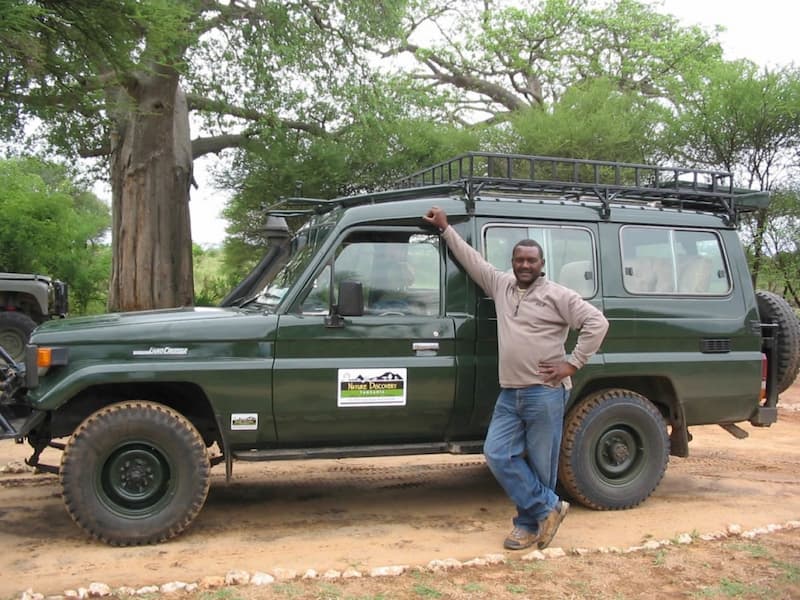
- Local Expertise and Enthusiasm
A top-tier guide is a walking encyclopaedia of local knowledge. They should be well-versed in the region’s history, traditions, and natural wonders. Passion for their job and the destination is infectious and enhances your experience.
Nature Discovery guides boast an impressive track record, with a wealth of experience and an in-depth understanding of the legendary African wilderness within Serengeti National Park and its surrounding areas. Additionally, they are well-versed in the hidden gems nestled away from the typical tourist routes.
- Efficient Scheduling and Punctuality
Waiting for a tardy guide can be stressful and disrupt your adventure. A good guide is always punctual, maintains a clear schedule, and adheres to the planned itinerary. Flexibility is possible, but only when thoughtfully arranged. Our guides will always discuss the following days itinerary with you to ensure you leave as early as possible, or arrive early back in camp to enjoy the facilities they offer.
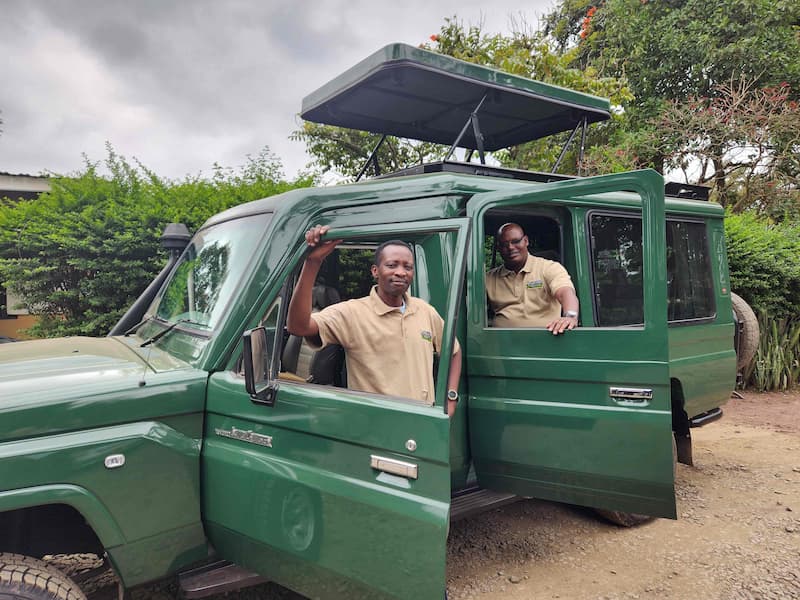
- Composure in Challenging Situations
Travellers vary in their temperament and adaptability. A skilled guide knows how to manage diverse personalities, remaining patient at all times. In the rare event of an emergency, they can maintain a calm atmosphere while ensuring safety.
- Certified Professional Guides
Having a trained and qualified guide can add significant value to your experience. Officially trained guides follow established guidelines, ensuring a professional and organized travel adventure.
Nature Discovery’s guides undergo extensive training from experts in natural history, conservation, seasoned safari guides, wilderness medicine practitioners, and even psychologists. This comprehensive training equips them with a diverse skill set that elevates them to the pinnacle of safari guiding excellence.
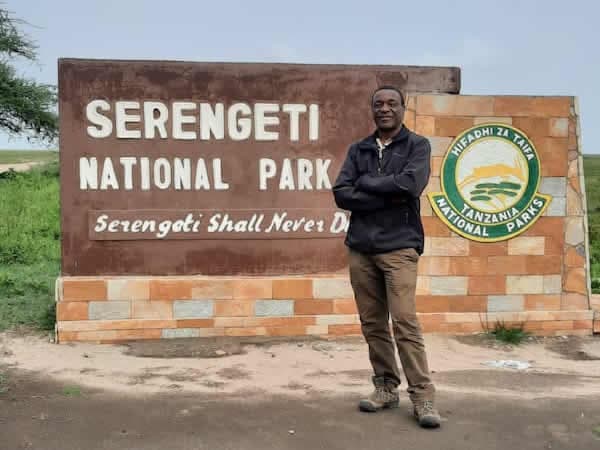
Tour Guides and Sustainability
For those committed to responsible tourism, the role of guides is pivotal. They are the front-line advocates of your travel operation and must be well-versed in your sustainability policies and practices. Our guides play five main roles in ensuring a responsible and sustainable travel experience:
- Environmental Stewardship: Guides should educate travellers about the importance of conserving the natural environment, including wildlife and ecosystems.
- Cultural Sensitivity: Guides must promote respect for local cultures and traditions, encouraging responsible interactions with indigenous communities.
- Waste Management: Guides should enforce responsible waste disposal practices and educate travellers on minimizing their environmental footprint.
- Wildlife Protection: Guides play a critical role in educating travellers about wildlife conservation and adhering to ethical wildlife viewing practices.
- Responsible Tourism Promotion: Guides should inspire travellers to be responsible tourists and promote sustainable travel practices that benefit local communities.
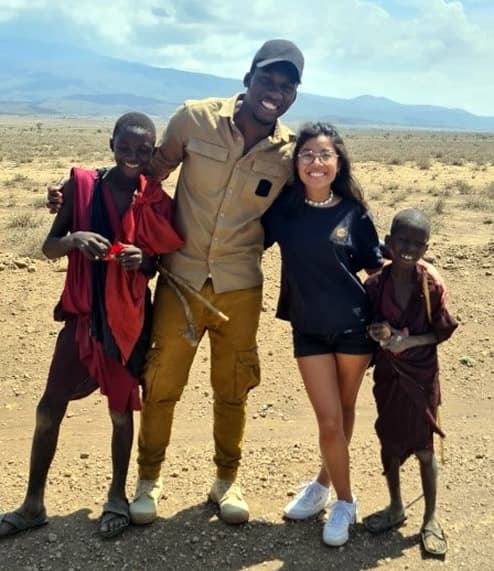
The significance of a Tanzanian tour guide goes beyond leading you through a safari. They shape your experience, enhance your understanding of the destination, and play a vital role in ensuring sustainable travel practices.
Our safari guides represent the dedicated core of Nature Discovery. Comprising a team of professionals with an unwavering passion for unveiling the marvels of Northern Tanzania’s abundant wildlife and diverse landscapes.
Meet our safari guides!
Book with Nature Discovery
Contact us today and let us start planning your Tanzanian adventure.
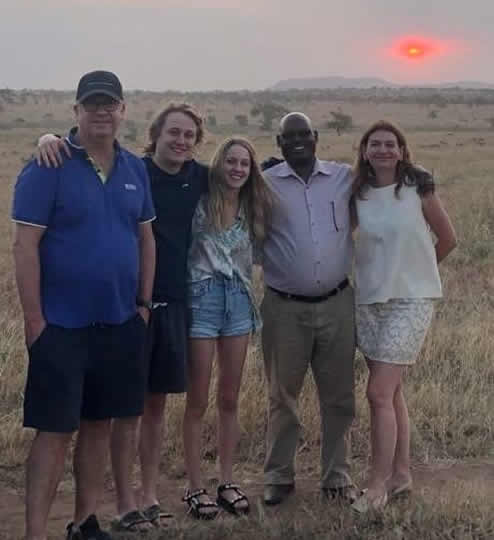
Share This Story, Choose Your Platform!
Recent news.
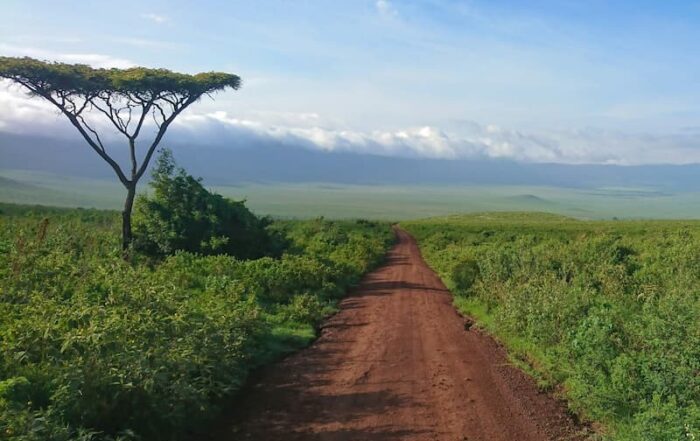
Carbon Tanzania: Nature Discovery’s Environmental Commitment
At Nature Discovery, our dedication to the environment remains steadfast, and we’re proud to announce our latest achievement.
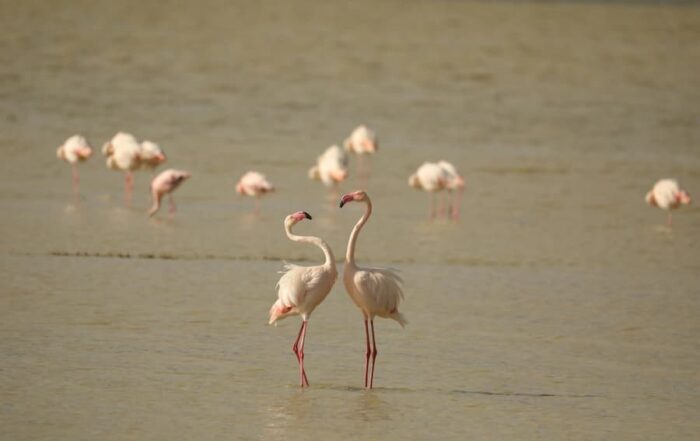
7 Captivating Animal Courtship Rituals in the Heart of Tanzania
In the untamed landscapes of East Africa, every day is a celebration of love for some of the continent's most fascinating creatures.
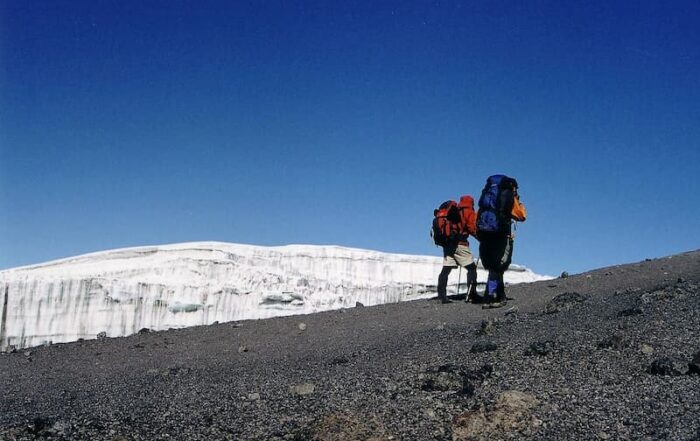
7 Reasons to Climb Kilimanjaro in 2024
Here are seven compelling reasons why climbing Kilimanjaro with Nature Discovery is an experience like no other.
Mountaineering, Trekking, Camping and Lodge Safaris
In tanzania’s wild places since 1991.
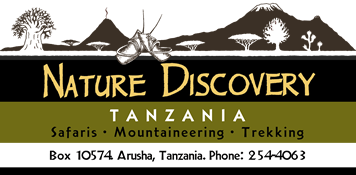
Nature Discovery
Nature Discovery is the recommended Tanzanian partner for over 20 specialist trekking and safari travel agents around the world. We’ve been recommended in The Lonely Planet Guide, The Bradt Travel Guide, Rough Guide, Henry Stedman’s Kilimanjaro Guide and by many other travel media outlets.
PO Box 10574, Arusha, Tanzania
Office phone: +255 739 971 859 Emergency only: +255 754 813 614 Email: [email protected]
Find Your Way
About us kilimanjaro safaris trekking blog contact us covid policy privacy policy, recommended by.
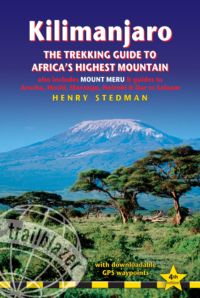
© Nature Discovery 2021 | All Rights Reserved
Tanzania Safari Guide | Everything You Need to Know
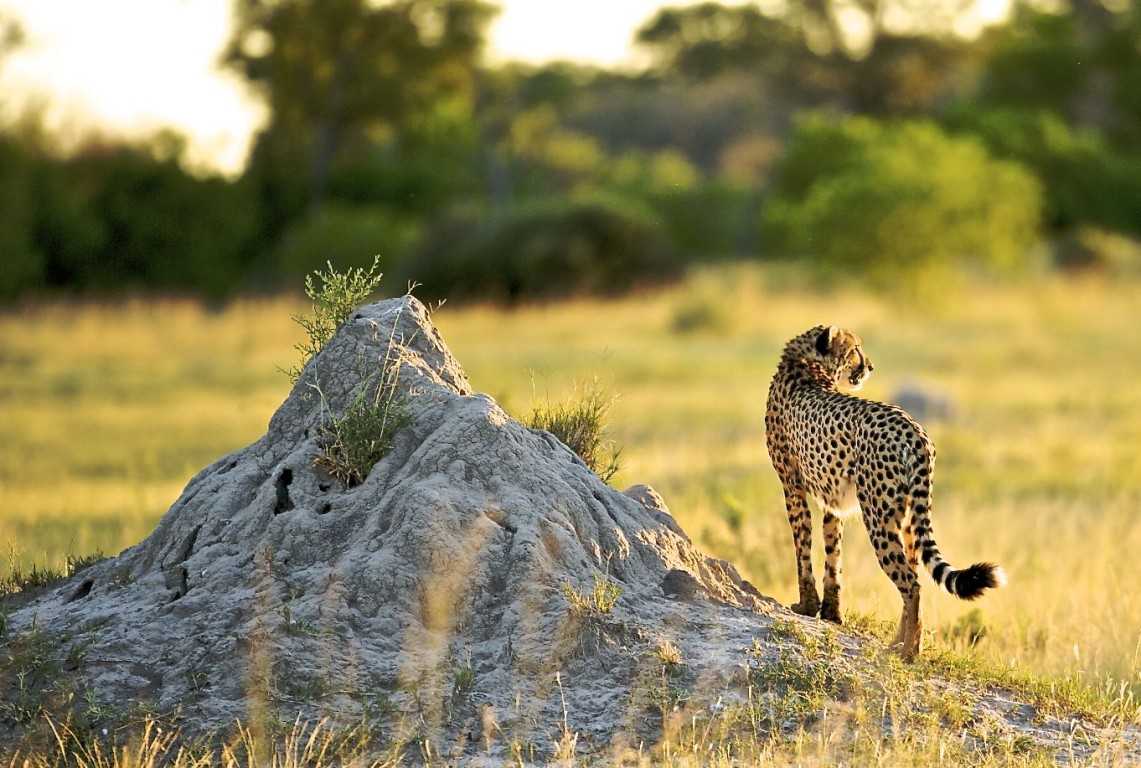
A good travel guide doesn't replace the advice and assistance from one of our Africa Safari Experts, but it does equip you to be an active and informed decision-maker in planning your Tanzania safari.
In this guide, we focus on the tips and insights that will help you make the most of your time and money.
Location: Where is Tanzania?
Tanzania is the second-largest country in East Africa and one of the continent's stalwart safari destinations. It lies on the idyllic Indian Ocean coast and shares borders with other incredible safari destinations like Kenya, Uganda, Rwanda, Zambia, Malawi, and Mozambique.
Top Experiences in Tanzania
Excellent Year-round Game Viewing Tanzania is home to a great diversity of wildlife, fascinating cultures, and natural scenic beauty. It's a dream destination, from the classic, sweeping savannah of the Serengeti to the flamingo-lined shores of Lake Manyara, world wonder Ngorongoro Crater, and Mount Kilimanjaro (Africa's highest mountain).
It also offers bucket-list experiences like chimpanzee trekking in the rainforests of Mahale and Gombe, and game viewing in the far-flung wildernesses of Katavi, Ruaha, and Nyerere National Park (Selous).
Tanzania's best wildlife safari destinations are:
It's worth noting that Tanzania combines beautifully with other safari destinations in East Africa like Kenya (home to the Masai Mara), Uganda, and Rwanda (exhilarating gorilla trekking adventures).
The Wildebeest Migration Without a doubt, Tanzania's greatest wildlife attraction is the annual Wildebeest Migration, which sees almost two million wildebeest and zebra follow seasonal rains across the Serengeti-Mara Ecosystem each year. Tanzania hosts the lion's share of the Migration, with two main events taking place in the Serengeti:
- The mass calving season when almost a quarter of a million babies are born in the southern Serengeti.
- The dramatic Grumeti River crossings.
If witnessing the Migration is on your bucket list, then knowing when to go is all-important.
Bush-and-Beach Holidays Tanzania offers superb safari-and-beach combinations, thanks to its long tropical coastline and coral-fringed islands. You can easily fly from a safari camp after breakfast and be on a powder-soft beach in time for sunset cocktails.
Tanzania's top tropical islands are:
- Zanzibar – one of the world's most romantic honeymoon destinations.
- Mnemba Island – a private island holiday paradise.
- Pemba Island – among the world's best diving sites.
- Mafia Island – swim with migrating whale sharks (about October to April).
The Best Time to Go to Tanzania
Deciding when to visit Tanzania depends entirely on what it is that you want to experience.
Peak game viewing in Tanzania is in the dry winter season (about June to October). This is the ideal time to explore the Serengeti, Ngorogoro Crater, and Lake Manyara because game is concentrated around water sources. The Wildebeest Migration river crossings also take place between July and October. If you'd prefer to avoid high season crowds, we recommend combining Ruaha and Nyerere (Selous) with a beach break on the coast or heading to Lake Victoria to combine chimp trekking in Mahale and Gombe with game viewing in Katavi.
During the low or Green Season (about November to March), there are baby animals everywhere, the days are deliciously hot, the dust is settled by afternoon thundershowers, and, best of all, you'll enjoy the very best value for money and crowd-free game viewing. Game viewing is still excellent after the short rains in November, but, for the best value, travel before 15 December to avoid the Christmas crowds (and prices!).
For keen photographers, this quiet period offers very special advantages: expect lush green landscapes rather than the dull browns of winter; dramatic cloudy skies rather than winter's endless pale blue skies; and much more relaxed game viewing conditions, which means more time to get that winning shot.
The best time to summit Kilimanjaro is between July and October or between January and March – which makes it easy to combine a mountain trek with both game viewing and relaxing on a tropical island.
Combine your big game safari with Tanzania's islands between August and October. We don't recommend the coast or islands during the long rains from March to May when it's very wet and humid.
Budget: What Does a Tanzania Safari Cost?
It's always tricky to give exact costs for a Tanzania safari, as there are variables that influence costs:
- The time of year you travel.
- The level of comfort you prefer at accommodations.
- Whether you drive or fly between destinations.
- Extra activities – like hot-air ballooning, spa treatments, and cultural tours – that you'd like to add on.
At SafariBando, we don't sell one-size-fits-all safari packages. We prefer tailor-making safari itineraries that match your unique travel wishes and budget. That being said, here are some ballpark figures for a Tanzania safari, with transfers and accommodation included on a price-per-person-per-night (PPPN) basis:
Please note that the above amounts are guidelines only. If you're considering a Tanzania safari, get in touch with one of our Africa Safari Experts for accurate costs that match your personal needs and travel wishes.
Why We Love Tanzania
It's easy to fall in love with Tanzania's rich cultures, big game attractions, and natural beauty. As safari experts, what we value most about this country is the old-school service, the authentic safari style, and the level of luxury you'll experience here. Not to mention the incredible game viewing in Tanzania's heavyweights like the Serengeti!
Start planning your dream Tanzania safari with SafariBando and embark on an unforgettable adventure in the heart of Africa.
Latest Blogs
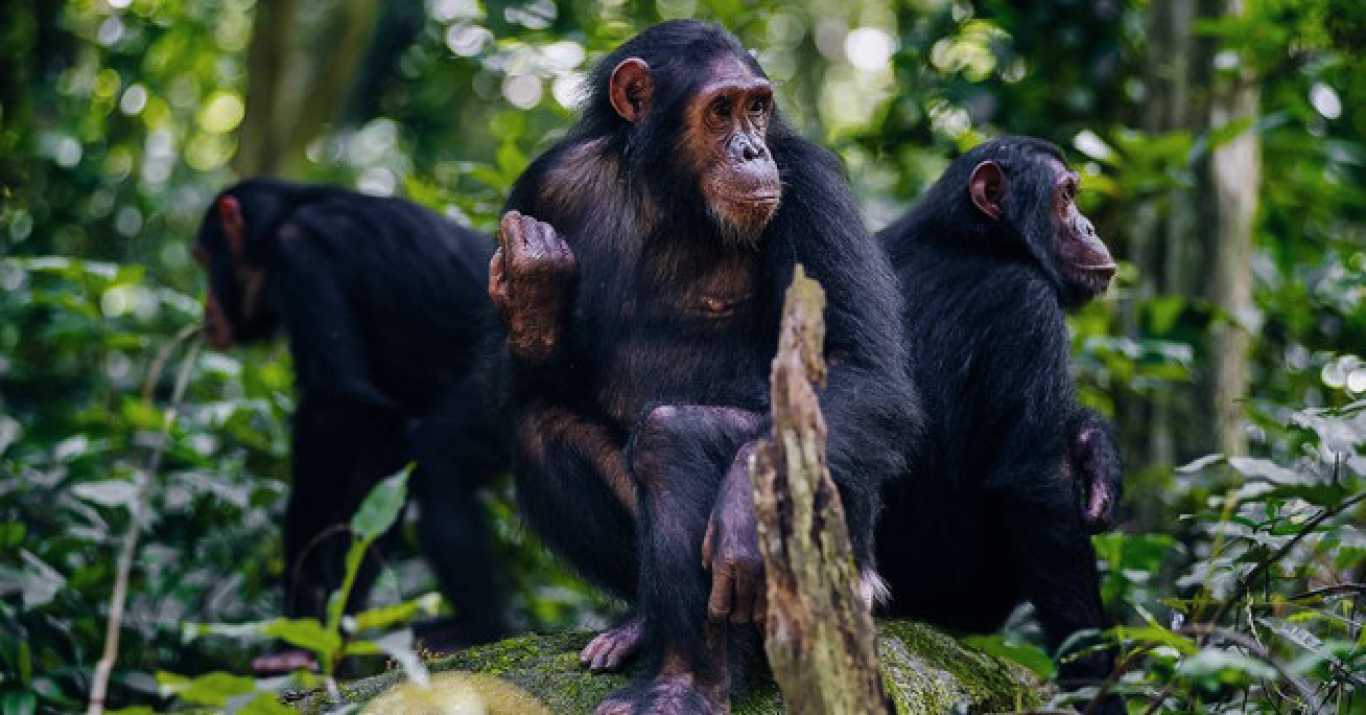
Gombe Trekking: The Ultimate Packing Guide for an Unforgettable Adventure
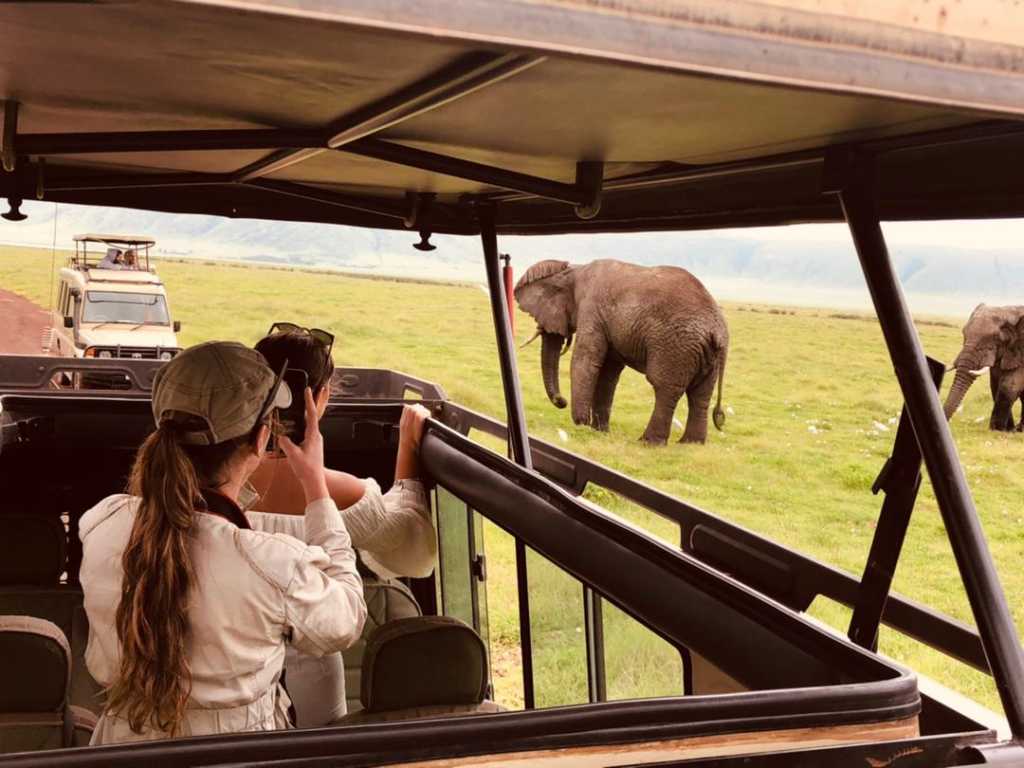
Last Minute Tanzania Safari from Zanzibar
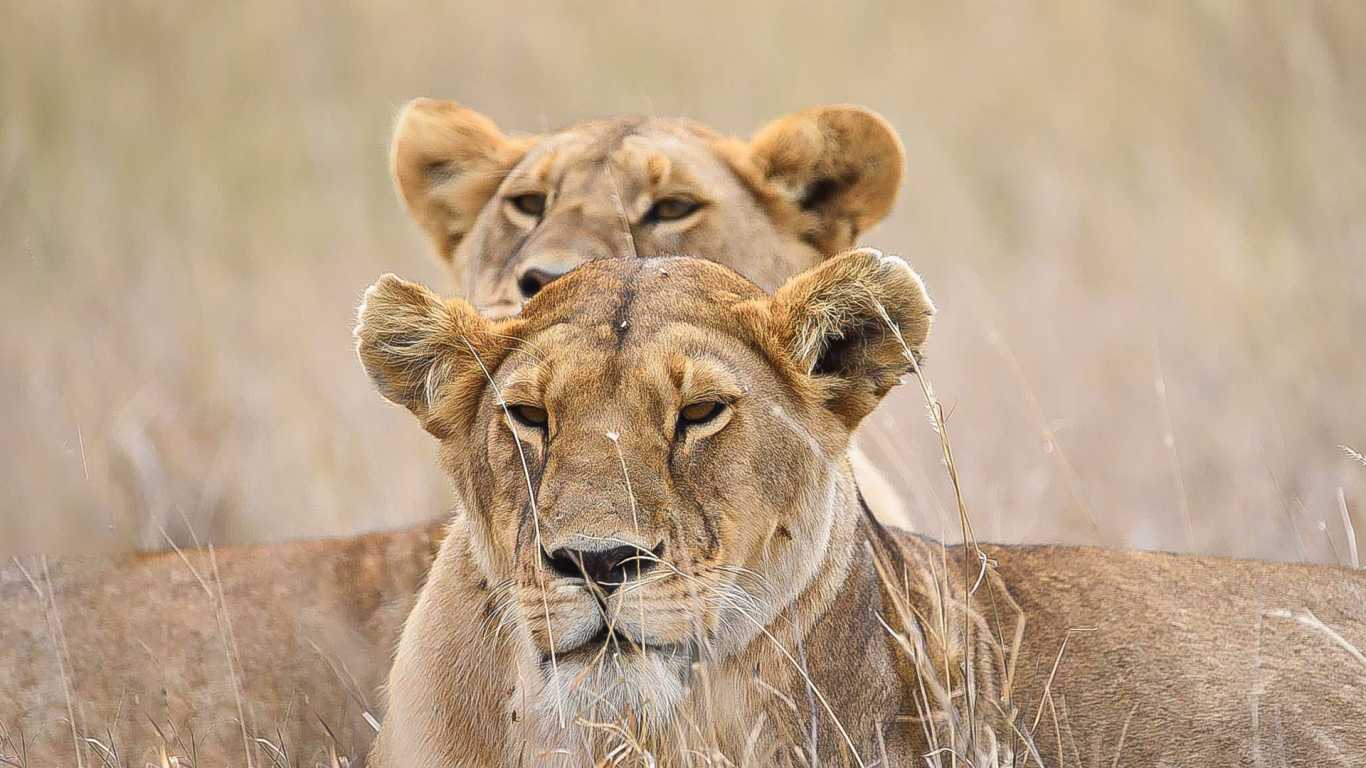
Unlocking February Wonders: Top Five Tanzania Destinations with SafariBando
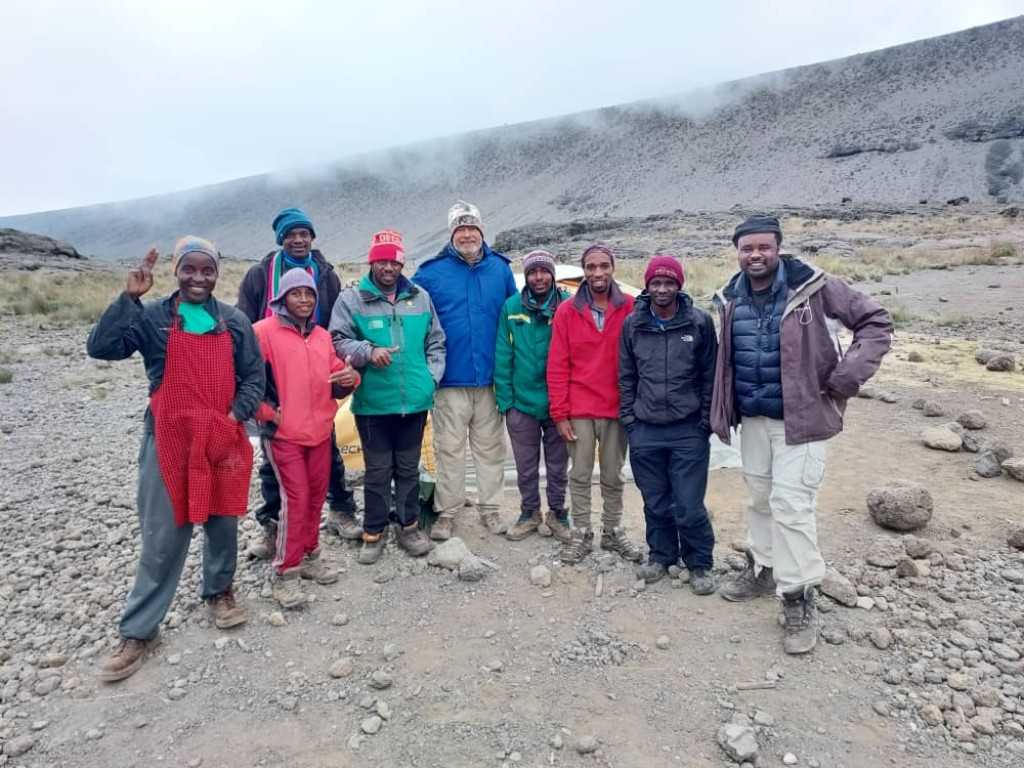
Kilimanjaro Climbing Guide : A To Z About Kilimanjaro Climbing
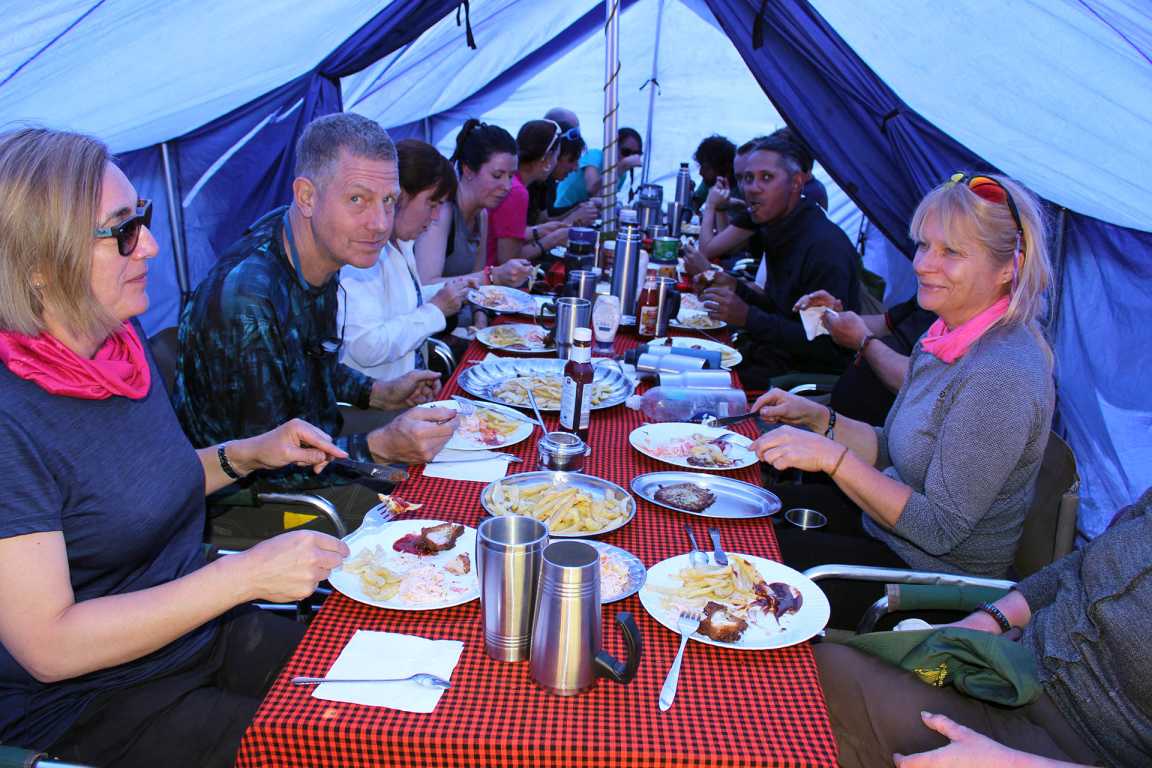
What is the Food Like on Kilimanjaro
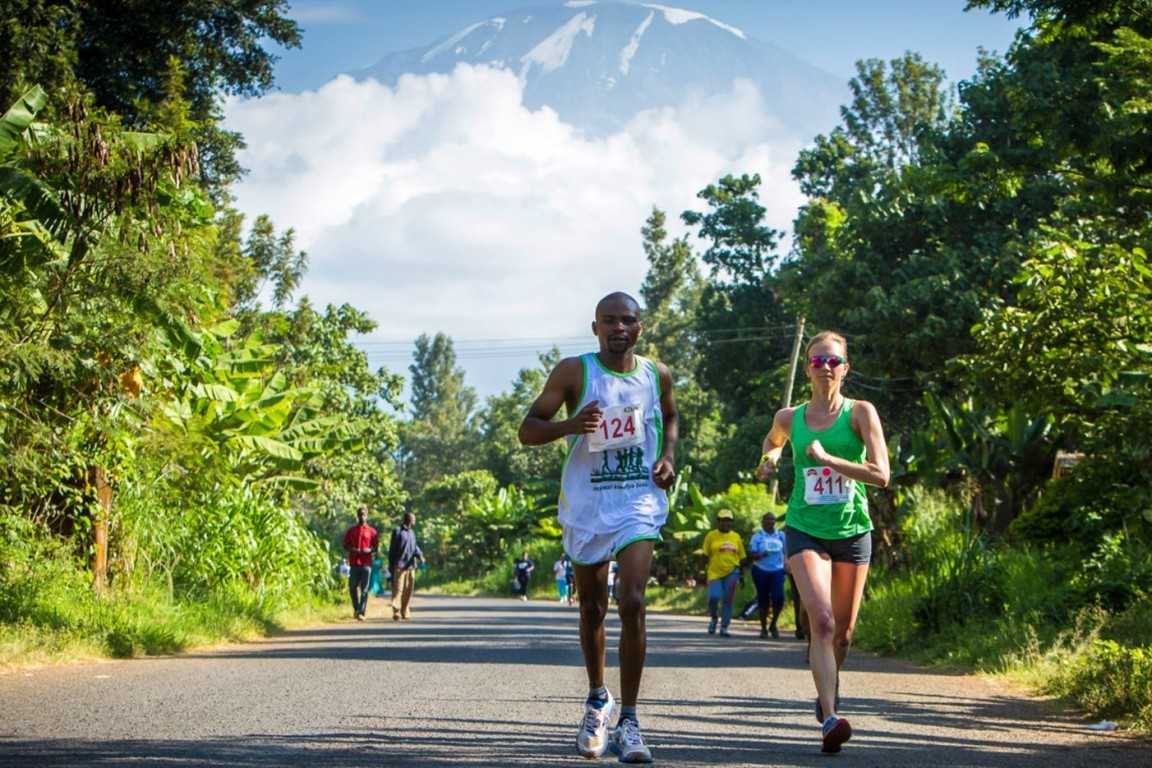
Kilimanjaro Marathon 2024 Registration Closed
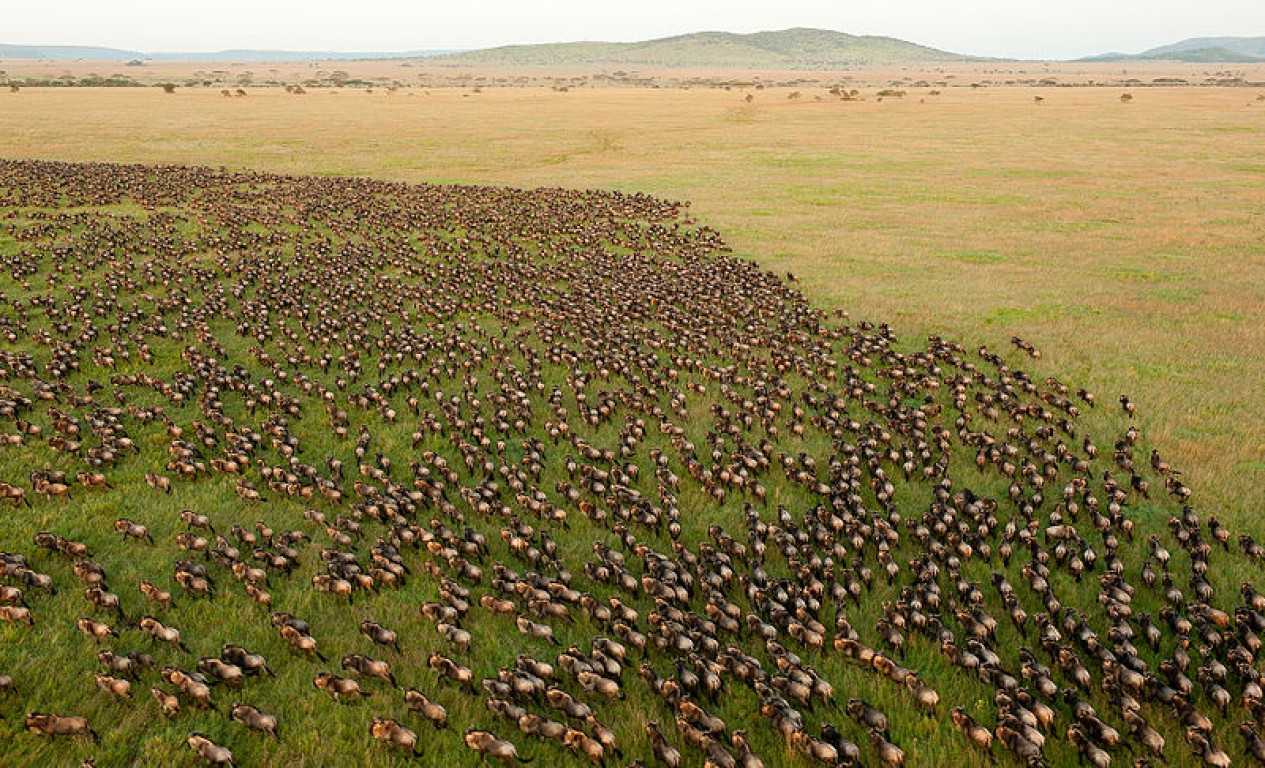
Serengeti National Park: Africa's Unrivaled Wildlife Haven
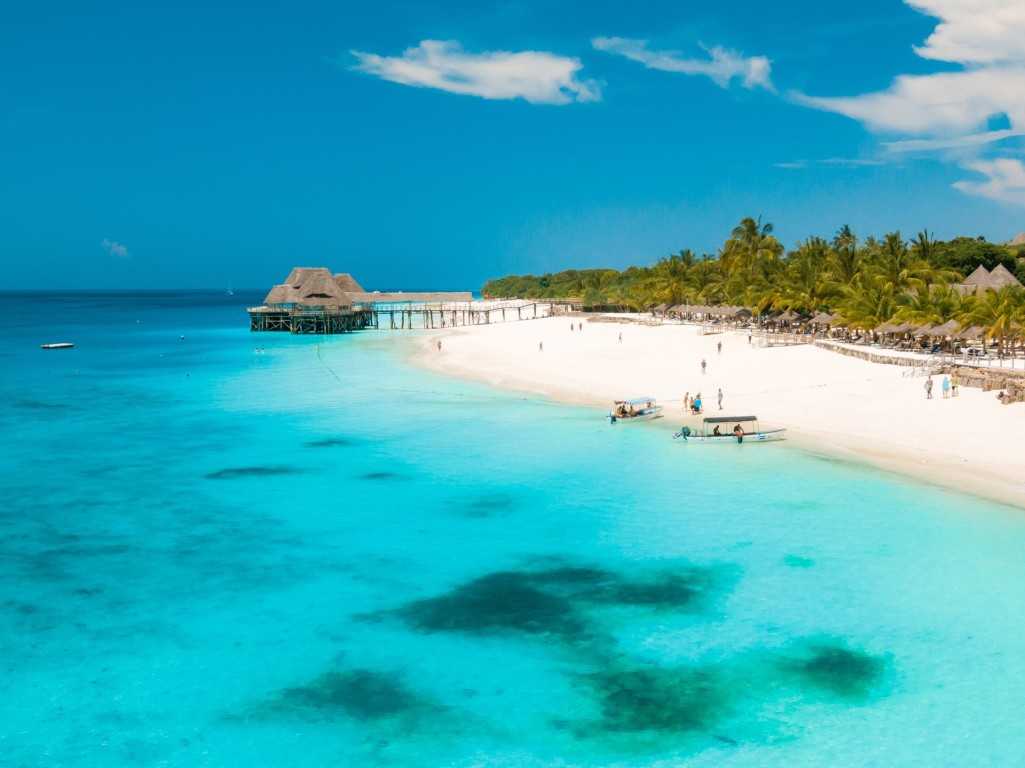
Zanzibar Dreams: The Ultimate Island Getaway in Tanzania
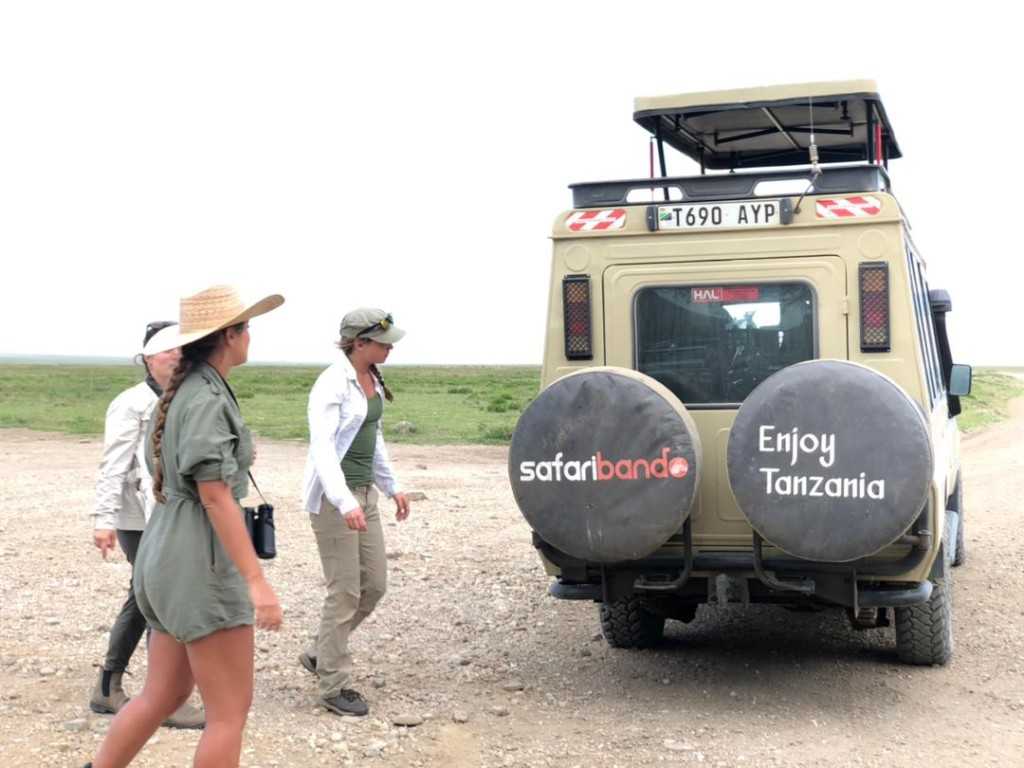
Embark on the Adventure of a Lifetime - Book Your Tanzania Safari with Us Today!

Tanzania Finest Safaris & Kilimanjaro Treks for you and your partner, your family or small—group of friends...
Welcome to shrike safaris, your safari. their future, your adventure makes a big difference to vulnerable children in tanzania, —shrike safaris partners with the mayega children center, and 100% of proceeds from our 360° safari package support destitute and orphaned children in tanzania by providing educational assistance. —after your safari, you will have left behind a lasting and positive impact on this community. these young students are tanzania’s leaders of tomorrow..
Based on 145

Over the years, hundreds of Shrike guests have told us we provided exceptional “Once-In-A-Lifetime" experience, one they can’t wait to talk about...
An entire safari customized just for you., we've never devised the same safari twice.
With Shrike, no two safaris are the same; each safari is as unique as you are—this is what makes our safaris unbeatable.

"WOW" moments Await...
Experience moments of awe and amazement that take your breath away, make you laugh until your sides ache, and even cry a little when it’s time for you to say goodbye.

Hand—picked Lodges & Tented Camps
We carefully select… lodges/ tented camps that provide you with a bit more: a unique personality, a high level of service and friendliness, and a setting that is unequaled. We also offer exclusive—use properties like private villas, estates, and private islands for the utmost privacy, comfort, and seclusion.
Planning your Safari STARTS HERE...
Planning your safari with an overload of information can be stressful..., we make it a whole easier, stress-free & more fun., —all our safaris can easily be customized to suit well with your interest and style from celebrating an anniversary or birthday to a candlelit dinner for a honeymoon. read below and click on the adventure that suits you best., private custom safaris ⟶, private custom, scheduled safaris ⟶, weekend getaway & short safaris ⟶, weekend getaway & short, day trip safaris ⟶, explore tanzania differently., explore at 'your own' pace..., —whether you are climbing mt. kilimanjaro or enjoying wildlife viewing in the serengeti; you will never be rushed from one location to another. instead, we will move at your pace and only move on when you are ready. —extra time to capture those awe-inspiring photos ...no problem. quality time spent searching for big 5 ...our pleasure. or maybe you are a birder ...you can tell by our name—shrike, we are passionate about birds..
A local, family—run and owned safari company, committed and deeply rooted in Tanzania.
We keep things at the grassroots level... local guides, local culture, local knowledge, and local expertise.
You Ask WE ANSWER

Where is the best place to go for safari in Africa?
If your primary reason for traveling to Africa is to experience an abundance of African wildlife in unspoiled wilderness, then Tanzania should be your destination of choice. Tanzania protects over 30% of its land through national parks and reserves, more than any other country on the continent. You simply cannot beat the wildlife concentrations found in Tanzania.
Perhaps, you have heard of the spectacular Ngorongoro Crater and the wide array of wildlife dwelling on the crater floor. Or the legendary Serengeti, which hosts the annual migration of wildebeest and the predators that follow in its wake. This is only the beginning of the natural phenomena awaiting your discovery on a safari to Tanzania. Guests of Shrike Safaris consistently tell us the wildlife they experienced far surpassed their most optimistic expectations.
Tanzania is home to 90% of the film series produced on African animals. Tanzania also boasts a remarkable number of World Heritage Sites including, Serengeti National Park, Kilimanjaro National Park, Ngorongoro Conservation Area, Nyerere National Park formerly ‘Selous’ (the largest in Africa), Kilwa Kisiwani and more…
When is the best time to go on safari in Tanzania?
Safari is an incredible adventure that can be enjoyed any time of the year. Each season has its unique characteristics that make it special. During the rainy season, which runs from April to May, the landscape transforms into a lush and verdant paradise. The dust settles, vegetation flourishes, safari prices drop, and you can encounter very few tourists, offering a serene and intimate experience with nature. Although spotting game may be more challenging due to the tall grass, the sense of reward is unparalleled. During the dry season, from June to October, animals congregate around water sources, making game spotting easier. This season usually attracts more guests, making it a vibrant and exciting time to explore the wild.
Why should I travel with Shrike Safaris?
We specialize exclusively in Tanzania. Tanzania is our homeland; we know this country better than anyone else even Google can’t compete with us, yes! we are serious. And, we offer a way to experience Tanzania ethically, comfortably, and intimately. But we’ll admit: we might be biased. That’s why you should see what our guests have to say about their experiences traveling with Shrike Safaris. Explore the Shrike DNA for further details.
will you help me plan the entire safari?
Rest assured that we will take care of every details of your safari from domestic flight, airport transfers to accommodations and all the way to your tips. We understand that nothing is more frustrating than having to dig for change when you should be enjoying your vacation to the fullest! Indulge in all of the meals, tea and coffee, as well as local brand beer and wine with complete peace of mind, as we have got it all covered.
All you have to do is to get your travel insurance, immunization, COVID-19 testing and book your International flights, VISA is available upon arrival. Once you arrive in Tanzania, we will take it from there… rest easy and leave the logistics to us. We’ll take care of your adventure from start to completion. Our attentive team is dedicated to ensuring that your safari is seamless and unforgettable. However, if you know yourself to be a big souvenir shopper you’ll need to budget accordingly. We guarantee that you’ll return home with fantastic memories and wonderful stories to share.
How far in advance should i book my safari?
Accommodations in national parks like the Serengeti and other places where numbers of visitors are limited can fill up quickly, particularly in high season (June to October), and it is recommended to book at least 90 days in advance, most of our guests book a year in advance.
© 2024 Shrike Co. Ltd.
- Tanzania Tourism
- Tanzania Hotels
- Tanzania Bed and Breakfast
- Tanzania Vacation Rentals
- Flights to Tanzania
- Tanzania Restaurants
- Things to Do in Tanzania
- Tanzania Travel Forum
- Tanzania Photos
- All Tanzania Hotels
- Tanzania Hotel Deals
- Last Minute Hotels in Tanzania
- Things to Do
- Restaurants
- Vacation Rentals
- Travel Stories
- Rental Cars
- Add a Place
- Travel Forum
- Travelers' Choice
- Help Center
Rookie question: self-organized safari guide/driver - Tanzania Forum
- Africa
- Tanzania
Rookie question: self-organized safari guide/driver
- United States Forums
- Europe Forums
- Canada Forums
- Asia Forums
- Central America Forums
- Africa Forums
- Caribbean Forums
- Mexico Forums
- South Pacific Forums
- South America Forums
- Middle East Forums
- Honeymoons and Romance
- Business Travel
- Train Travel
- Traveling With Disabilities
- Tripadvisor Support
- Solo Travel
- Bargain Travel
- Timeshares / Vacation Rentals
- Africa forums
- Tanzania forum

Hi everyone
But how does this work in practice?
1) Would a TO be able to provide this service alone? If not, where else is a good source to find a great driver & safari guide? What is the approx cost for this?
2) Where would they sleep if I am organizing lodges independently (via booking.com or similar)? Would this be different if the TO organised the trip?
3) Failing the above, would a TO be able to match the rates I find on booking platforms? I've found some real gems but I'm not in the industry so not clear how their rates and the rates on booking platforms work
4) Failing all of the above, what is my alternative? Organizing the car /transport/guide with the lodges themselves? Is that any good? I have a feeling it would be very costly & defeat the point
5) Any other tips much appreciated
14 replies to this topic

@Bonvoyagist, what time of the year are you traveling? This will shed light when responding to some of your questions.
As I said in an earlier post, if you book your accommodations directly, you will be doing a good deal of extra work for little or no financial return (or for a negative return). Tour operators have contract rates with the lodges and camps that are far lower than anything you could get, and much/most of the savings are passed on to you. Also, the quotes you get when booking direct often exclude things like concession or camping fees, which would make for a nasty surprise when you got there.
Whereas if you book with a tour operator they put everything together for you and you save money in the process.

I just had a look at your other post. I think what you're asking makes more sense to me now, at least why you're asking, but I think probably there's a bit of a fundamental misunderstanding about how things work.
- Transport- either you use camp vehicles for game drives, or you come in with your own. For the former, camps that have their own vehicle tend to be mid-range to higher end. For the latter you can either self drive, which I wouldn't especially recommend unless you've got a bit of self drive African experience under your belt somehwere a bit more challenging than south africa. Option 2 for your own vehicle is to have a guide and 4x4 provided by a tour op. Their price will include their fuel, the charge for the guide, etc. I'd say this goes from maybe $200-$450 per day for a minibus to top spec landcruiser. If your tour op is booking accommodation for you they will sort out the guides accommodation, if not, you may be expected to book that also. If you want a "great" guide then really you need to be looking at the higher end safari operators who spend time investing in and training their guides.
- Accommodation. Yes, you can book this yourself. As a tour op, I have contracted rates with the lodges and camps. I can't tell my travellers what it is, that's the contract. But it's a wholesale rate so much lower than the "rack" rate. I give my travellers a total cost for the safari and if they ask for a breakdown I can only give them the rack rate. Which often leads to a confusing situation where they don't understand why my breakdown is higher than my quote... So booking.com may be lower than the rack rate, but it may not be lower than what your TO is actually charging you if that makes sense?
- There are also two levels of pricing for camps. Either Full Board rates (excludes game drives) or Game Package rates (includes game drives). I would only book the former if you have your own vehicle for drives, otherwise it's not economical to book the game drives piecemeal with the lodge which I believe is an option Four Seasons offers. Generally the more budget camps will only offer a full board rate.
- Essentially there are two ways to do a trip like this sensibly. Full board at camps + your own vehicle driving between camps (best value), or flying between camps and doing a game packaged using camp vehicles (in almost all circumstances more expensive). Random transfers between camps and doing game package is the worst of both worlds and does not work in the same way it does in South Africa.
All this is to say- I do think the safari experience in Tanzania is incredible, but I think what's making this difficult for you is perhaps your experiences in South Africa leading you in one way, when Tanzania is a totally different country and different safari experience. Fundamentally, it's more expensive than South Africa too, especially Northern Tanzania. You mention Kenya in your other post which has slightly more options and workarounds to reduce the costs a bit, but it's still not going to be South African prices. Fabulous though, and there aren't many people who go to East Africa and don't rate it even more highly than safari in South Africa.
Alexandra- Extraordinary Africa

You can find some gems through online platforms either way you will need transport and guide which it will be expensive booking it different. When combined all together transfers, transport, accomodation, park fees it's cheap with a TO.
@Pristine Trails: I am looking to travel in August/September so peak season
@Ralphh I am trying but so far, getting very high rates from travel agents without a huge amount of transparency as to how it makes up to the total so trying to work out what the alternatives are & what their cost would be, hence my question. Should I go back to the travel agent with the exact lodges & try to work it out this way?
As Alexandra explained far better than I could, you won't be able to get full transparency because of the nature of contract rate agreements. No idea whom you've been in contact with, but if you know what you want I'd put it all together and send it out for competitive bids to 4-5 tour operators. There's a list of recommended tour operators at https://bit.ly/tanzrec.
Let them know you're open to suggestions for improving the itinerary, and you can ask here as well whether what you've got makes sense. You might end up not picking the cheapest option, instead making your choice on a combination of your comfort with the tour operator and on price.
@Bonvoyagist Alexandra and Ralphhh have hit the nail on the head. I will add the following.
August/September peak season so many tour operators may not be flexible to just rent out a vehicle with a driver because they are fully booked.
Rental services do exist. Here is a Youtube video of one such experience https://www.youtube.com/watch?v=tC8eHbmk9Ns.
When booking accommodation, I would also urge you to be mindful of location. Some accommodations might be offering discounted rates because their locations are very quiet during that time of the year.
Thank you so so much everyone and especially Alexandra for such a detailed reply. It's really eye-opening.
Honestly, planning this trip is such a frustrating process for me. It's an expensive holiday so it's really important to be able to make sure the costs are right but there doesn't seem to be a way to be able to do this. I don't mind spending time researching and I fully appreciate the TOs cannot share the entire breakdown with me, but it does just end of being very hard to figure out what's a good decision and what's a bad one for the traveller.
For perspective, my booking.com DIY lodge plan that I consider to be (subjectively of course!) better/nicer/similar location than many of the lodges the TO suggests are costing me approx 50% of the total trip cost the TOs are quoting. Is this a normal ratio of 50% lodges and 50% transport/guide/park fees? It seems pretty exuberant to me that half the trip cost is park fees and transportation/the guide.
I've sent the lodges & the prices to the TOs I am speaking to, let's see what comes next. I just hate the idea of wasting people's time as if I can't get this right, I might not go at all.
Is this a normal ratio of 50% lodges and 50% transport/guide/park fees?
>> Yes. I only know about what I cover, which is roughly mid-range to top end. And for us, because we throw a lot of money at guides and vehicles, realistically it probably means the middle of mid range upwards, not the most basic mid range of things. I had a look at a recent safari I planned.
- Accommodation costs: 58%, but they did have one very high end lodge which skews things a bit, so lower would be more reliable
- Park fees: 18%
- Vehicle and Guide- 14%
- Battery for CPAP machine 11:34 am
- Taxi for number of Days 11:17 am
- Trip Report - not 4:53 am
- Floods in Tanzania 4:15 am
- Recent experience with Thomson Safaris? 1:30 am
- Rookie question: self-organized safari guide/driver yesterday
- Brilliant Adventures & Safari yesterday
- Advice on a 2025 Itinerary for the Great Migration yesterday
- Advice on Tanzania 4-5 day Safari in September yesterday
- Second week July Serengeti. West or North? Lodging choices. yesterday
- Tour group: Africa Keys Apr 15, 2024
- Looking for the best advice on tsetses please Apr 15, 2024
- Good earth tours Apr 15, 2024
- Yellow fever vaccination requirements for Tanzania Apr 15, 2024
- Malarone Vs Lariam 39 replies
- What does "non commissionable rate" mean? 6 replies
- Precision Airways - Luggage Restrictions 20 replies
- How safe is Tanzania? 162 replies
- ET African Journeys -- too good to be true? 34 replies
- Tanzania Discovery Safari with Thomson Safaris 20 replies
- Considering National Geographic expedition 6 replies
- Any experience with booking through Africa Travel Resource? 8 replies
- Coastal airways 9 replies
- Roy's safaris Ltd. 42 replies
Tanzania Hotels and Places to Stay
- Yellow Fever, General Health Advice and Vaccinations for Tanzania.
- If you have started to plan a safari, here's some good tips on how to go about this>
- Kenya Versus Tanzania which is better
- Looking for a Tour Operator...Here's a good starting point. Mark 11 and other info.
- Can I take a drone there to use for photography
- I want to learn about the Tanzanian people and their culture, is that possible?
- THINKING OF GETTING A HENNA PAINTING WHILE YOU ARE IN TZ? READ THIS FIRST!!!
- What can I do for medical care while I am in Tanzania
- What to pack - how can I squeeze in everything I want to take
- All the parks and all the safari operators are confusing, isn't there a summary?
- Is malaria a serious disease, what can happen if I skip my malaria medications?
- What are the electrical requirements for Tanzania
- How do I keep bugs away? And how do I handle bites?
- What you need to know about Self Drive.
- Books on Tanzania and Africa in general
- Are you planning a Lake Natron Trip?
- Are you thinkg of taking a young child on safari
- Ellie's Blog Great description of some popular camps and the Eastern Serengeti
- Shep's Blog Great information on recent (2021) off the beaten path travel
- Lodges and Camps Close to KIA and Arusha National Park
- Volunteering in Tanzania especially an orphanage good advice in new and older posts.
- All You need to Know about Visa on Arrival
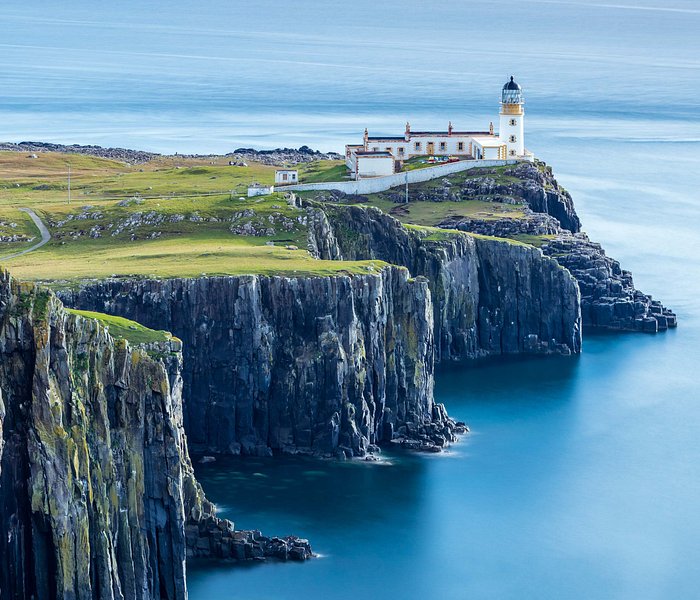

‘This Will Finish Us’
How Gulf princes, the safari industry, and conservation groups are displacing the Maasai from the last of their Serengeti homeland

Listen to this article
Listen to more stories on curio
This article was featured in the One Story to Read Today newsletter. Sign up for it here .
I t was high safari season in Tanzania, the long rains over, the grasses yellowing and dry. Land Cruisers were speeding toward the Serengeti Plain. Billionaires were flying into private hunting concessions. And at a crowded and dusty livestock market far away from all that, a man named Songoyo had decided not to hang himself, not today, and was instead pinching the skin of a sheep.
“Please!” he was saying to a potential buyer with thousands of animals to choose from on this morning. “You can see, he is so fat!”

Explore the May 2024 Issue
Check out more from this issue and find your next story to read.
The buyer moved on. Songoyo rubbed his eyes. He was tired. He’d spent the whole night walking, herding another man’s sheep across miles of grass and scrub and pitted roads to reach this market by opening time. He hadn’t slept. He hadn’t eaten. He’d somehow fended off an elephant with a stick. What he needed to do was sell the sheep so their owner would pay him, so he could try to start a new life now that the old one was finished.
The old life: He’d had all the things that made a person such as him rich and respected. Three wives, 14 children, a large compound with 75 cows and enough land to graze them—“such sweet land,” he would say when he could bear to think of it—and that was how things had been going until recently.
The new life: no cows, because the Tanzanian government had seized every single one of them . No compound, because the government had bulldozed it, along with hundreds of others. No land, because more and more of the finest, lushest land in northern Tanzania was being set aside for conservation, which turned out to mean for trophy hunters, and tourists on “bespoke expeditions,” and cappuccino trucks in proximity to buffalo viewing—anything and anyone except the people who had lived there since the 17th century, the pastoralists known as the Maasai.
They were the ones tourists saw through their windshields selling beaded key chains at the gates of Serengeti National Park, or performing dances after dinner at safari lodges. They were famous for their red shawls and recycled-tire sandals. They grazed their cattle with zebras and giraffes, and built mud-and-dung houses encircled by stick fences barely distinguishable from the wild landscape. They were among the lightest-living people on the planet, and yet it was the Maasai who were being told that the biggest threat to conservation and national progress was them. Their whole way of life had to go.
From the April 2020 issue: Ed Yong on the last giraffes on Earth
And so Songoyo, after considering his alternatives, had devised a last-ditch plan for his own survival, one that had brought him to a town in Kenya called Aitong, where a cool wind was slapping sand and dung into his face as he scanned the market for buyers. He was far from home, roughly 65 miles north of the village in Tanzania where he had been tear-gassed and shot at for the first time in his life. He had seen elderly men beaten and guns fired at old women, and now it was down to this: He was a herder for hire, working for a distant relative, trying to make enough money to buy one single cow.
“Come!” he called to the buyers who kept passing his herd and weaving through the bleating mass. “You will not find any better!”
This was his plan: one cow, because that was the starting point of what it meant to be a Maasai man, which was what he still wanted to be.
The forces arrayed against Songoyo, whom I met in the course of two long trips to Tanzania late last year, include some of the world’s most powerful people and interests. (I have not used Songoyo’s last name out of concern for his safety.) What these people and interests want is what the Maasai are trying to keep: the land they live on.
Global leaders are seeking what they consider to be undeveloped land to meet a stated goal of conserving 30 percent of the planet’s surface by 2030 . Corporations want undisturbed forests in order to offset pollution. Western conservation groups, which refer to the Maasai as “stakeholders” on their own land, exert great influence, as does a booming safari industry that sells an old and destructive myth—casting the Serengeti as some primordial wilderness, with the Maasai as cultural relics obstructing a perfect view.
The reality is that the Maasai have been stewards, integral to creating that very ecosystem. The same can be said of Indigenous groups around the world, to whom conservation often feels like a land grab. In the past two decades, more than a quarter million Indigenous people have been evicted to make way for ecotourism, carbon-offset schemes, and other activities that fall under the banner of conservation. That figure is expected to soar.
For all its accomplishments, the cause of saving the planet has become a trillion-dollar business, a global scramble in which wealthy nations are looking to the developing world not just for natural resources, but for nature itself. The wealthy players include not only Europeans and Americans but Arabs and Chinese and others. On the African continent, political leaders are enthusiastic about what so-called green foreign investment might mean for their own economies (and, maybe, their bank accounts).
Such are the pressures being brought to bear on northern Tanzania, where the Maasai migrated with their cattle 400 years ago, settling in an area encompassing hundreds of thousands of square miles of grassy plains, acacia woodlands, rivers, lakes, snowcapped mountains, salt flats, forests, and some of the most spectacular wildlife on the planet. They called it Siringet, which in the Maa language means “the place where the land runs on forever.” The Maasai see their recent history as a struggle to save that land from those who claimed it needed saving.
First came the British colonial authorities, who established the 5,700-square-mile Serengeti National Park, pushing the Maasai to an adjacent zone called the Ngorongoro Conservation Area, with its famous crater, where they were promised they could live. Then came UNESCO. It declared both Serengeti and Ngorongoro to be World Heritage Sites, which came with new restrictions. Western tourists began arriving, seeking an experience of Africa that a thousand movies promised—one of pristine beauty and big game, not people grazing cattle. Tanzanian authorities began leasing blocks of land to foreign hunting and safari companies, many of which promoted themselves as conservationists—a word the Maasai have come to associate with their own doom. Spread among the villages that dot the northern tourist zone, the Maasai have meanwhile been growing in number—their population has doubled in recent decades, to about 200,000. Inevitably, the clash of interests has led to bitter and occasionally violent conflict.
Still, the threat unfolding now is of greater magnitude. It emerged soon after President Samia Suluhu Hassan took office, in 2021. “Tourism in Ngorongoro is disappearing,” she declared during one of her first major speeches. “We agreed that people and wildlife could cohabitate, but now people are overtaking the wildlife.” The Maasai listened with alarm, realizing that the people she was referring to were them.
Not long after Hassan’s speech, officials announced plans to resettle the roughly 100,000 Maasai who were living in and around Ngorongoro to “modern houses” in another part of the country. Meanwhile, in a region north of Ngorongoro, bordering Serengeti National Park, government security forces began rolling into Maasai villages. They were carrying out another part of the plan: annexing 580 square miles of prime grazing land to create an exclusive game reserve for the Dubai royal family, which had long hunted in the area. The government characterized the move as necessary for conservation. Traditional Maasai compounds, known as bomas , were burned. Park rangers began seizing cattle by the tens of thousands.

And more was coming: a $7.5 billion package with the United Arab Emirates , of which Dubai is a part, that included new plans for tourism and conservation. A $9.5 million deal with the Chinese for a geological park that overlapped with additional Maasai villages. An offer from Tanzania to make Donald Trump Jr.—an avid trophy hunter—an official “tourism ambassador.” New maps and proposals from the government indicated that further tracts could soon be placed off-limits, including a sacred site that the Maasai call the Mountain of God.
Read: What trophy hunting does to the elephants it leaves behind
“This is 80 percent of our land,” a Maasai elder told me one evening during a meeting with other leaders in northern Tanzania. “This will finish us.” They had tried protesting. They had filed lawsuits. They had appealed to the United Nations , the European Union , the East African Court of Justice, and Vice President Kamala Harris when she visited Tanzania in 2023. They’d unearthed old maps and village titles to prove that the land was theirs by law, not just by custom. They’d written a letter to John and Patrick McEnroe after hearing that the tennis stars were hosting a $25,000-a-person safari-and-tennis expedition in the Serengeti. People made supportive statements, but no one was coming to help.
This is what Songoyo understood as he paced the market in Aitong. It was closing soon. Buyers were filtering out through the wire fence, and he still had 12 sheep left to sell, one of which was lame. A man tapped it with a stick.
“A cow stepped on his leg; that’s why he walks like that,” Songoyo said, bracing the animal with his knees.
The man walked away. Another came and tapped his stick on the lame sheep, and then on the rest of them. They agreed on a price, and the buyer pulled out a roll of bills.
“Please, can you add 500?” Songoyo said, asking for the equivalent of an extra $3.60 in Kenyan shillings. “I need 500. Please.”
The man added 200, and Songoyo brought the day’s earnings to the relative who had hired him. They sat under a tree, and he counted out Songoyo’s share for a week of work, roughly $10. One cow would cost about $200.
“See you next week,” the man said.
“May God give you favor,” Songoyo replied, putting the money in the pocket of his blue track pants. His cellphone rang, a battered plastic burner.
“I am coming,” he told one of his wives, who was waiting for him at their home in Tanzania.
He’d had options other than this. There had always been Maasai who’d given up traditional ways to reinvent themselves, shedding their red shawls for all kinds of lives. Now many more of them, having lost their cattle, were moving to cities, where the Maasai reputation for bravery and rectitude meant there was always work as a security guard—I saw them everywhere in Arusha and Dar es Salaam, in front of shops and banks. Others had taken a government offer to resettle in a town called Msomera, far to the south, only to return home with stories of loneliness and conflict with locals. Still others were falling apart. Songoyo had seen them, drunk men hobbling along the road or passed out on their red shawls under trees in the daytime. That would not be him.
“Never,” he said, and began the long walk back to his village in Tanzania, a tall man wrapped in a pink-and-purple plaid shawl passing cinder-block taverns where he would not drink, and motorbikes he would not hire, because the point was to save money for the cow. No cows, no life , he told himself, picking up the pace along an orange dirt road stretching into the late afternoon.
His earliest memories were of cows; he had never been without them. They were the huge, warm, brown beasts kept in the center of the boma. Their dung formed the walls of his home. Their milk and blood were what he drank as a child, when his father told him what Maasai children were traditionally told: that when the earth split from the sky and God left the world, he entrusted the Maasai with all the cattle, and by extension the land and the other animals that shared it. Songoyo learned how to herd with rocks, pushing them around in the dirt. He got his first calf when he was a small boy, herding it with a stick near the boma. When he was big enough, he followed his older brothers out into the wider grazing areas, including one the Maasai called Osero , a word that refers to lush grasslands—in this case, the 580 square miles of land adjacent to Serengeti National Park where Maasai had lived and kept cattle for generations.
It was in Osero that he learned about different kinds of grasses and trees: which ones had good branches for bows or good bark for tea that could ease a backache. He learned where to find natural salt and the coolest streams, and he learned certain rules: Never cut down a tree. Keep cattle away from wildebeests during calving season, because they carry a disease deadly to cows.
He listened to older boys tell stories, including one whose lesson he still lived by, about a group of Maasai heading out on a cattle raid when one of the warriors broke his sandal. The warrior turned to the man behind him and asked if he would stay and help, but the man refused. He asked another, who also refused, and so on until the very last one agreed to stay, while the rest continued on to cattle-raiding glory. The stern moral was: Be prepared. Don’t fall behind. Stay with the group. Struggle.
Songoyo had struggled. He held himself together after his father died, when he was still a boy, a moment when he might have turned delinquent but didn’t. He endured his adolescent coming-of-age ceremonies with dignity, by all accounts managing not to cry or shake during his circumcision, when people scrutinize and taunt boys for any sign of weakness, and he was rewarded with cows. He learned how to shoot arrows and use a machete, and became a moran —entering a stage of life when young Maasai men bear responsibility for protecting their village—and was given more cows, each with a name, each with a certain character he came to know. In this way, the life he wanted became possible.
He married his first wife, then a second and a third, and eventually built a boma in the village where his children went to school, and a larger compound on the edge of Osero, where the cattle were kept, and where he’d had one of the happiest moments of his life. This was just before everything began to unravel, an otherwise ordinary day when the rains were full and the cows were fat and he’d walked out into the middle of them, their bells jangling, realizing how far he’d come and thinking, “Yes, I am a real Maasai.”
Not that life was an idyll. In village after village that I visited, people described years of tensions with safari companies and conservation authorities. People who lived within the Ngorongoro Conservation Area—a vast zone that was almost like its own country—had complained about schools falling apart and poisoned salt licks and the indignity of their identity being checked as they came and went through the tourist gate. In other areas, people had accused certain safari companies of illegally acquiring leases and paying local police to beat herders off concessions. One company was notorious for using a helicopter to spray scalding water on cows.
In Osero, the problems went back to 1992, when an Emirati company called Otterlo Business Corporation (OBC) was first granted a hunting license for the Dubai royal family. They had their own private camp and a private airstrip and, for the emir himself, Sheikh Maktoum bin Rashid Al Maktoum, a compound on a hill, guarded by a special unit of the Tanzanian military police. When the rains ended each year, cargo planes full of four-wheelers and tents and pallets of food would buzz low over villages before landing, followed by private jets delivering the royal family and their guests. A few weeks later, they’d buzz out with carcasses of zebras and antelope and other trophies. For a while, OBC had its own cellphone tower, and Maasai villagers noticed that when they were near it, a message would pop up on their phone screens: “Welcome to the U.A.E.” The arrangement had been that the Maasai were supposed to keep away when the royals were in residence, but just about everyone had caught a glimpse. Songoyo had seen them speeding around, shooting animals from trucks with semiautomatic rifles. “Once, they pulled up in the middle of my cows and I saw them shooting so many antelope,” he told me. “They just kill, kill, kill!”

There had been attempts at diplomacy. Sometimes the Arabs, as the Maasai called them, would give out bags of rice. They had hired Maasai men to work as guides and drivers and had flown some of their favorite employees to Dubai, buying them clothing and cars. One driver recalled being at the camp on a day when the emir arrived. The driver lined up with other staff, and the emir greeted each one of them while an assistant followed behind with a large bag of cash, inviting each worker to reach in. The driver said he pulled out $1,060.
But a bitterness was always there. Maasai leaders had long claimed that Osero belonged to 14 adjacent villages, and that they had never consented to the OBC deal. Tanzanian officials asserted authority over not only Osero but a far larger expanse—Loliondo—citing its colonial-era designation as a game-controlled area; they often resorted to violence to enforce this view. Maasai villagers described to me how government security forces had collaborated with OBC at least twice in recent years to conduct a large-scale torching of bomas in the vicinity of the camp. Young men grazing cows had been beaten and shot at. One man described to me being shot in the face, then handcuffed to a hospital bed as he was bleeding through his ears and nose and eyes, slipping in and out of consciousness. He remembered a police officer shouting at a doctor to let him die, and the doctor refusing the order and saving his life. He lost his left eye, the socket now scarred over with skin, and had kept a thin blue hospital receipt all these years in the hope of receiving restitution that never came. Most villages have people who can tell such stories.
Read: The war on rhino poaching has human casualties
In 2017, amid rising complaints and lawsuits filed by Maasai leaders, Tanzanian authorities suspended OBC’s license and accused the company’s director of offering some $2 million in bribes to the Ministry of Natural Resources and Tourism, which led to a court case that ended in a plea deal. Requests to interview OBC executives, representatives of the Dubai royal family, and officials of the U.A.E. government about their involvement in Tanzania went unanswered.
By the time Hassan became president, in 2021, the director was back on the job and the OBC flights had resumed.
Samia Suluhu Hassan was widely embraced by West and East. Her predecessor, John Magufuli, who died in office, had been a populist with an authoritarian streak and became infamous for downplaying the dangers of COVID. He suspended media outlets, banned opposition rallies, and alienated foreign investors, even as many Maasai saw him as a hero for brushing back OBC.
Hassan eased his more repressive policies and embarked on an ambitious plan to bring foreign investment into the country, especially through tourism. She branded herself a forward-looking environmentalist.
And she found willing collaborators. The World Bank had been encouraging more tourism , arguing that it could help Tanzania achieve what official metrics define as middle-income status. One of the country’s main conservation partners, UNESCO, had been pressing Tanzanian authorities for years to implement what it called “stringent policies to control population growth” in Ngorongoro, although UNESCO also says it has never supported the displacement of people. A German conservation group called the Frankfurt Zoological Society, a major partner in managing Serengeti National Park, has expressed concern that traditional Maasai practices are becoming less tenable because of population growth. “There is a risk of overuse and overgrazing that should be addressed,” Dennis Rentsch, the deputy director of the society’s Africa department, told me. “I don’t want to vilify the Maasai. They are not enemies of conservation. But the challenge is when you reach a tipping point.”
In response to these pressures, the Ministry of Natural Resources and Tourism produced a report that blamed rising Maasai and livestock populations for “extensive habitat destruction” in conservation zones. It recommended resettling all of Ngorongoro’s Maasai. It also recommended designating the 580-square-mile Osero tract, farther away, as a more restrictive game reserve, describing the land as an important wildlife corridor and water-catchment area for the Serengeti ecosystem. The designation left the Dubai royal family with an exclusive hunting playground. But none of the Maasai who lived in the area would be allowed to graze their cattle or continue living there.
Maasai leaders countered with two reports of their own—more than 300 pages covering colonial history, constitutional law, land-use law, and international conventions, and providing copies of village titles, registration certificates, and old maps—to prove their legal right to the land as citizens. They blamed habitat destruction on sprawling lodges, roads bisecting rangeland, trucks off-roading across savannas, and “huge tourist traffic.” Overgrazing was a result of being squeezed into ever smaller domains, which kept the Maasai from rotating grazing zones as they normally would. Citing their own surveys, they said the government had inflated livestock numbers, a claim supported by Pablo Manzano, a Spanish ecologist with the Basque Centre for Climate Change, who had conducted research in the region and found that the government was perpetuating a tragic misunderstanding.
Manzano and others pointed to a growing body of scholarly research demonstrating what the Maasai had long known: that their management of the land did not degrade the Serengeti ecosystem but had actually helped sustain and even create it—the grasslands the Maasai had cultivated for hundreds of years were the same grasslands that many wild animals needed to thrive. In that sense, the land had already been conserved before the Germans, the British, and various international groups decided that they needed to save it.

In their reports, Maasai leaders concluded that the government was engaged in “a calculated process to wipe out animals” and to “devastate their livelihood and culture.” They took a bus to the capital and delivered the two reports in person to government officials.
But there would be no debate, no discussion of complexities. Hassan moved forward with her agenda. She was finalizing the $7.5 billion package with the United Arab Emirates, the fourth-largest (after China, the EU, and the U.S.) investor in Africa. One deal turned over management of roughly two-thirds of Dar es Salaam’s port to DP World, a company owned by the U.A.E. government. Another deal turned over management of some 20 million acres of forest —roughly 8 percent of the nation’s entire territory—to a company called Blue Carbon, which is run by a member of the royal family, Sheikh Ahmed Dalmook Al Maktoum, and uses conserved land to generate carbon credits that it sells to other companies. The package also included money for tourism.
Hassan invited travel agents to the country for a “tourism reboot.” She spoke of wanting more five-star hotels. She filmed a promotional documentary called The Royal Tour , which at one point involved helicoptering with a travel reporter over some Maasai villages near the Serengeti.
“All those round things down there are the Maasai bomas,” Hassan says in the film, as several villagers look up into the sky. The reporter then comments in a way that Maasai leaders found ominous: “Over the years, the Tanzanian government has tried to persuade the Maasai to become traditional farmers or ranchers, but they’ve persisted in clinging to their ancient ways. And yet, they may not have a choice now.”
Some 400 miles to the south, in the hotter, flatter farming area of Msomera, bulldozers broke ground on a new development. The military was building 5,000 cinder-block houses intended for Maasai families. Officials had been dispatched to villages in the Ngorongoro Conservation Area to present the government’s offer: a free house on 2.5 acres. Electricity. Piped water. New schools. A cash bonus of roughly $4,000 for early takers. At one such presentation, a crowd pelted the officials with rocks.
I requested an interview with Hassan to better understand her decisions. In response, a government spokesperson arranged interviews with several other officials, one of whom was Albert Msando, a district commissioner, who told me, “Whatever I am answering is whatever the president would have answered.” We met in the town of Handeni, near Msomera. Msando’s office was inside a former British-colonial building, where a portrait of Julius Nyerere, Tanzania’s founding father, hung on one wall and a portrait of Hassan hung on another.
“For the public interest,” Msando said of the Maasai, “we have to relocate them.” A lawyer by training and demeanor, Msando emphasized that any relocation is voluntary, at least for now. He also made it clear that if persuasion fails, the government maintains the legal right to remove the Maasai from conservation areas, by force if necessary. “That’s why there are guys here with their shoulders decorated,” Msando said, pointing around the room to police and military officers.
He told me that anyone in Tanzania would be lucky to get what the Maasai were getting. “We are giving them nice houses, I believe, according to modern standards.” He said that the Maasai currently live in “filthy conditions” and should be helped to “live a better life.”
He and other officials I spoke with said that they disliked even using the term Maasai . They invoked the spirit of Nyerere, saying that Tanzania was supposed to have a national identity, not tribal ones. Msando said he could understand the Maasai’s concern about losing their culture, even if he had little sympathy for it. “Culture is a fluid thing,” he said. “I am Chaga—the Chaga were on the verge of having their own nation. Today look at me. People do not even know I’m Chaga. My kids don’t even speak Chaga.” He was unapologetic: “The Maasai are not exempted from acculturation or cultural acclimatization, or cultural extinction.”
The government’s plans moved forward. In June 2022, a convoy of trucks carrying hundreds of security personnel rolled into the 14 villages bordering Osero, a show of force that the Maasai had never seen before. Soldiers, police, and park rangers set up camps on the outskirts of each village, announcing their intention to demarcate the boundary of the new game reserve. What happened next unfolded sporadically over several days. It has been documented in reports by human-rights groups and was described to me by dozens of witnesses and victims.
First, village leaders summoned to what was billed as a routine ruling-party meeting were arrested after they refused to go along with the demarcation—27 of them in all. The security forces then began planting a long line of three-foot-high rectangular cement markers called beacons along the perimeter of Osero. Villagers came behind them, kicking the markers down before the concrete foundations had set; women hacked at them with machetes. “I felt like I was fighting for myself,” one woman told me later. “I knew if this land goes away, there is nowhere for my children to be, and that forced me to lose my fear.” But the security forces kept beating the villagers back. Elders called more than 1,000 moran to take up positions with bows and arrows in forested areas along a main road where government trucks were patrolling.
“How many are ready to die?” a leader said to the group, and at some point, one of them shot an arrow at a police officer, killing him.
After that, the security forces opened fire. They shot at the legs of elderly women waving grass as a sign of peace. They shot an elderly man, who fell and then was heaped onto a truck “like a sack of maize,” his son told me. He has not been found. The security forces shot at men and women trying to destroy the beacons, wounding them in their arms and legs and backs. They shot tear gas into bomas and burst into one where a traditional ceremony was being held, firing into the crowd. The moran waited for orders to retaliate, but the elders, seeing what the government was willing to do, called them off. “It’s only because we didn’t have guns,” a Maasai elder told me. “If someone helped us with guns, they cannot even fight with us, because they are very cowardly.” Another elder said, “You cannot fight a gun with arrows.”
Dozens of people with bullet and machete wounds, blocked by police from local clinics, limped their way across the border into Kenya for treatment. Several thousand more fled there for safety. Others hid in the forest. Then the burning and bulldozing began. For several days, security forces plowed through circles of stick fences. They crushed houses and corrals and lit the debris on fire, burning more than 300 bomas, including Songoyo’s, and finishing the work before the start of high safari season. In a statement issued a few days after the violence , the Tanzanian government said the new game reserve had “no settlements as it is alleged and therefore there is no eviction” taking place. It described what had happened as “normal practice for all wildlife and forest protected areas in Tanzania”—a necessary step to keep the Serengeti ecosystem from being “disrupted and eventually erased from the face of the Earth.”
Songoyo’s boma had been by a hot spring. His father’s and grandfather’s graves were nearby. In the aftermath of the violence, he moved his family and cattle from Osero to a smaller boma nearer to his village, where he and others returned from hiding to find homes ransacked and skeletons of cows that had been eaten by wild animals.
Security forces roamed up and down the roads. Officials called people into immigration offices and accused them of being Kenyans, requiring them to show up in court for weeks on end, until judges threw out their cases for lack of evidence. Rangers patrolled Osero more heavily than ever, shooting at and beating herders who went anywhere near the new reserve, punishments that now came with a kind of psychological torture—forcing people to consent to the legitimacy of their own dispossession. One young man told me that rangers dragged him to their truck and beat him on his back with a stick for hours, calling him “rubbish” and yelling, “You don’t agree this land was taken? We will punish you until you agree!” They would feed him cornmeal, he said, and beat him some more. But he never did agree. Now he can barely walk.
The Maasai had other problems. One was grass: There was not enough. Everywhere I went, I saw bony cows picking at short clumps of weeds in dry patches of dirt. Out of desperation, some people were taking their cows to graze in Kenya, while others were sneaking into Osero at night. To avoid alerting rangers, cows went in without bells, making them harder to keep track of in the dark. Herders used cheap flashlights for safety, shining them fleetingly in the bush to detect the eyes of lions and other predators. They struggled to keep themselves awake, wearing small radios around their necks, playing tinny music at a low volume only they could hear.
Another problem was worse: Rangers were seizing cattle. Not just a few here and there, but huge herds of them, by the hundreds and then by the thousands. One day, Songoyo got a call from his brother, who had been grazing Songoyo’s 75 cows near Osero with other herders.
He said rangers had chased them down and seized more than 700 cattle, including all of Songoyo’s. He said the rangers had then crossed with the cattle into Serengeti National Park, and were holding them in a pen. Songoyo imagined them staying like that, not eating, not drinking. He imagined his favorite, Kiripa, a brown heifer he could always count on to lead the other cattle to distant grasses and home again, slowly dying, and rushed with the other owners to the park gate.
“I tried to reason with the rangers, but I totally failed—it was like they were ready to shoot us,” he recalled, and so the group contacted a Maasai lawyer, Melau Alais, whose practice had been overwhelmed by such emergency calls in the past year.
After several days, Songoyo learned that the rangers were alleging that the cattle had been illegally grazing inside Serengeti National Park, and that they would all be auctioned off unless the owners prevailed in court. The court was in a town called Mugumu, clear on the other side of the park, a two-hour drive away. The hearing was in a few days. So Songoyo and the other owners scrambled together the park fees and set off in the lawyer’s car past lush green grass and fat, grazing zebras and Land Cruisers full of tourists enjoying the scenery. When they reached the courthouse, the owner whom they had elected to represent all of the owners in the case, a man named Soloi Toroge, was formally charged with illegal grazing and jailed until the hearing.
The next day, Songoyo and the others sat in the gallery as Toroge took the stand. Both Songoyo and Alais recalled for me the day in the courtroom.
“So what happened?” Alais asked Toroge, and as the defendant began telling the story of how the rangers had beaten the herders and taken the cattle, Songoyo said he felt his anger rising.
Alais asked Toroge how he knew the cows were his, and as he described their particular colors and markings, Songoyo thought about his own cows, and became more desperate.
At another point, Alais asked Toroge how many children he had, and as Songoyo thought about his own, he began to feel physically ill.
“So what other business do you do?” Alais continued.
Toroge said he depended only on livestock.
“This livestock, or others?” Alais asked him.
This livestock, he answered. There was no other.
“So if the court decides to auction the cattle, what will happen?” Alais asked.
“All of us will die of hunger,” Toroge answered.
As he continued, Songoyo remembered thinking that this was it. That he really was about to lose everything he’d worked his whole life to achieve—not because of drought or his own foolishness, but because of his government, and the Arabs, and something called conservation. He said he began making noises, and felt himself becoming so disoriented, so altered, that he thought he could kill someone, or that someone might kill him, and soon people were surrounding him, court officers threatening to arrest him. Songoyo was saying, “Then let us die. There is no special death.”
He did not return for the other days of testimony. He was back in his village when Alais called to tell him that the judge had ruled that the cows would be auctioned off unless the owners paid a fine, and that his share—calculated per head of cattle, per day, for more than 30 days and counting—would be roughly $5,000.
He briefly considered what others had done, which was borrow money from a Somali loan shark who was doing a brisk business, but decided that was no solution.
“Let them sell them all,” he told Alais.
He did not leave his boma for days.
Normally, relatives and neighbors would give someone in his position one of their cows to help him rebuild, but nothing was normal any longer. More than 50,000 head of cattle had been taken by rangers, according to a local tally. Between the seized cattle and the fines, a huge transfer of wealth was under way from the Maasai community to the government.
People came by Songoyo’s boma to say they were sorry. They tried to encourage him. He considered what to do. He could be a security guard. He imagined standing still for hours in front of some building in Arusha. Then he began thinking that death would be preferable. Traditional Maasai cosmology includes no afterlife, no reward or punishment in the hereafter, so that would be that. Hanging or poison were the usual methods; hanging was more certain. Then he thought about his children. “And I said no,” he recalled. He told himself what others had told him since his father had died. He was a hard worker. He knew how to struggle. He thought, “Maybe something good is ahead of me.” He thought that if he just kept going, “God will bless me for that.”

He tore down a large corral where he had kept his cattle and built a smaller one for the seven goats he still had, and for the one cow he hoped to buy. He remembered a distant relative, a businessman in Kenya; they got in touch, and the plan was set: Pick up the livestock at a market near his village. Herd them across the border to a market in Kenya, and if he didn’t sell them there, go on to Aitong, a roughly 130-mile circuit every week. He had been doing this for months.
When he got home from Aitong, he would give half the money he’d earned to his wives for food. He would rest, and then start out again. He noticed himself becoming skinnier.
Songoyo headed north with his next herd of sheep, through a clearing with a seasonal stream and smooth rocks. He skirted Serengeti National Park, where he was not allowed to be, then crossed over a low mountain range that marked the Tanzania-Kenya border, his sandals splitting at the soles. At the gates of the park, some of the half a million people who visit every year were lining up in Land Cruisers, the bumpers displaying flag decals representing the United Kingdom, Germany, Italy, the United States. And as the sun rose one morning, in they went, tourists with bucket lists, anniversaries, dreams, and romanticized images in mind.
They roamed the dirt roads through grassy plains that really did seem to stretch on forever—a rolling sea of greens and yellows and flat-topped trees. They slowed for herds of gazelles and elephants. They sped to a leopard sighting in trucks bearing the wishful names of various outfitters—Sense of Africa, Lion King Adventures, Peacemakers Expeditions—and soon they began gathering along one side of the Mara River.
On the other side, great black herds of wildebeests were massing, waiting for the right moment to dive off a small cliff and swim across. What the animals saw waiting for them was a long line of trucks, a metal fortification.
“I want a picture!” said a woman hoisting her camera.
“My God, I want them to come down!” said her companion.
An hour passed. Another hour. The wildebeests were not migrating. A Maasai driver grumbled that obviously there were too many trucks. A man pressed binoculars to his face.
“See, it looks fine to us, but to them, something’s not right,” he said.
He wondered if it was crocodiles. They waited. A woman took a nap. Then some wildebeests began moving downriver, opposite some gaps in the otherwise solid wall of trucks. And then one hurled itself over the cliff in heroic fashion, and soon they were all diving.
“They’re flying!” someone said.
The animals were flailing, tumbling, and splashing down into the river, swimming for their lives, and now engines were cranking as trucks roared toward the crossing point, wedging into every open gap.
“We got ’em!” yelled a woman holding up a camera, and as far as anyone could see, the view was wildebeests, river, trees, and the grassy savanna beyond—no cows, no goats, no Maasai herders, no people at all, except the ones beholding the spectacle they’d been promised.
What they could not see was a tall man in blue track pants and a pink-and-purple plaid shawl herding sheep across a rocky path, trying not to think about how his knees hurt, his ankles hurt; trying to forget about all that had come before now.
Songoyo reached the first market, where he did not sell the sheep but picked up some more animals for another client and kept going, heading for Aitong.
It was late afternoon when he began crossing the Maasai Mara—the Kenyan national park—with only a stick for protection because bows and arrows are not allowed in the park. He hustled the sheep through the bush, past thorns, under branches, over sharp rocks and soft grass. He saw zebras. He saw giraffes . At one point, he saw a lion, which began following him, then another, coming closer and closer, and as he began to think that this would be how his life ended, a tourist truck came speeding along the road and scared the lion away, and he took off running with the sheep until he came upon elephants—“So, so many elephants,” he said—and managed to dodge those, too.
He kept walking, trying to stay alert. The night was moonless and very dark. After some hours, he reached the edge of the park and saw a boma—a cultural boma, as it turned out, the kind set up for tourists, where Maasai act out versions of the life now being extinguished—and asked if he could sleep there, but the people at the park said that was against the rules, even though welcoming him would have been the true Maasai way. So he waited outside a while and then entered anyway, lying down in a corner. It was cold, and he felt himself becoming sick.
He reached Aitong the next morning but still didn’t sell the sheep, and this meant he would have to press on another 50 miles to a town called Kilgoris. By now he was so exhausted that he decided to sleep, and this was when, as he put it, “evil came during the night,” in the form of a hyena that killed five of his sheep, two of which belonged to the new client. When Songoyo called to tell him, the man told Songoyo that he would have to repay him for the animals. Songoyo told him he didn’t have any money. The man said in that case, he would have to work without pay. Songoyo set off for Kilgoris, now in debt.

He walked along a dirt road as trucks blasted him with fumes. He walked across one farm after another. He felt so hungry. At times he knelt on the ground and said, “God, can you see this?,” then got up and kept going. Another farm. A man who gave him water. A man who yelled at him to get off his land. A tree where he took a nap. His dreams lately were of cows grazing in lush grass, and of dying. More hours crossing an area that belonged to a rival pastoralist tribe, sneaking along the edges and behind stands of trees, feeling like a thief, he said, feeling like he had no place to be in this world. He kept going like that, across more land that was not his.
The land Songoyo considered his was now part of the new Pololeti Game Reserve . That was what Osero had become. The government had constructed a gate bearing the name along the main road into the area, not far from where Songoyo’s boma had been, and when the Dubai royal family was not around, tourists could pay a fee and go inside.
“As far as you can see, all this is now Pololeti,” said a Maasai driver who had grown up on the land and been away from it for a year, ever since the violence. “I feel like crying.” The only reason he was able to go inside now was that I had hired him as a guide.
What he saw was miles and miles of a particular grass that was good for cattle, at the moment so tall and golden. “If your cows are weak and they eat this, in two days they will stand,” he said, driving ahead.
He saw the yellowing tops of grasses that zebras favored, and thick, wetter grasses that wildebeests favored. He saw some impalas in the distance and said, “I wish to see my goats there,” because they would usually graze together.
He saw wiry red oat grasses, and thick swirls of cattail grasses, and here was the kind of acacia with bark that helped with nausea and there was the tree with large, rough leaves useful for sanding down a staff. He saw lavender morning glories used for tissues, and a sacred stream whose water was used for ceremonies. He smelled the familiar scent of bush mint in the cool afternoon, and heard such a strange quiet without the bells of cows.
“In this area, in the evening, you’d see so many cows,” the driver said, and soon he reached a clearing where it was possible to see grass pressed into faint circles.
“Over here used to be houses,” he said.
“Over here, there used to be more than 20 bomas,” he said, continuing on.
“Here used to be a boma, because you can tell the difference between this grass and the other grass,” he said. “We always have soft-soft.”
He navigated by trees he remembered and small hills he knew by heart.
“Here was a very large boma—you can see the fence,” he said, pointing to some scattered branches with thorns. He continued on.
“Over here was the Pyando family,” he said, passing a certain spot in the grass.
“The Kairungs were here,” he said, but it was hard to tell.
“Here were the Saing’eus,” he said, pointing to black weeds that grew where cow dung had been.
Here lived the Purengeis and the Ngiyos. The Kutishos, the Oltinayos, the Kikanais, the Mungas. A whole world that would soon be gone with no trace.
The driver turned and headed back toward the gate, noting a road that led up to a compound on the mountain, where the emir could look down and enjoy one of the most magnificent landscapes on Earth, with no cows or bomas or red shawls obstructing the view.
“Just imagine,” the driver said, and soon he was passing a line of white beacons.
“Oh, our land,” he said, exiting through the gate, wondering what would become of all the life that had been here.
One answer was taking shape 5,000 miles to the north, in the United Arab Emirates, at a place called Sharjah Safari park. It had been open a year, a project sponsored by an Emirati royal who wished to re-create the experience of a real African safari. It was an hour’s drive from the Dubai airport, out along a smooth, straight highway lined with green palms and bright-yellow marigolds, past mirrored skyscrapers, many mosques, discount strip malls, a crematorium, camels, and miles of desert.
At the entrance was a concrete elephant. The $75 gold package entitled visitors to tour 12 distinct African landscapes with animals procured from Africa itself, and on a 70-degree December day, tourists climbed into a modified Land Cruiser that whisked them through a series of metal gates.
“Savanna,” the tour guide said as the first gate slid open to reveal some fake termite mounds, some half-dead acacia trees, and a living waterbuck. “Ngorongoro,” she said as another gate slid open, revealing a few gazelles and four white rhinos. “Serengeti,” she said, and on it went.
Soon the tour arrived at the last exhibit: “Boma.” At the end of a curved path lined with grass was a collection of round structures made of cement, not mud and dung, with wooden doors and thatched roofs. There was a corral with goats and donkeys. And here and there were signs with cartoons explaining life in this place. One of them included a drawing of a man. He was wearing a blue-plaid shawl. His features were simply drawn, and he stared blank-faced from the confines of a rectangular wood frame.
When he saw the low mountain range, Songoyo felt a burst of energy, knowing he was near home, such as it was, the place where he was trying to start over. He crossed the clearing with the smooth rocks, and soon he arrived at a grassy slope, and there were the remnants of the larger corral he’d torn down, and there was the smaller one he’d built for the goats and the cow he still could not buy, a circle of sticks with jackets and plaid shawls drying on top. There was a mud-walled house, and a child running out of it.
His wife made him some tea. He gave her money for the market. He’d made roughly $20 on this trip, but of course he was now in debt for the sheep the hyena had killed. They discussed which neighbors were still around. So many had left. Then Songoyo went outside to check on his seven goats.
He looked inside the corral. Four, he counted. Another two were running around outside, so that made six. He kept looking. He walked to where the old corral used to be, then back to the new corral. No goat. He began walking faster, looking around the house. Still no goat. He walked farther out into the grass, seeing nothing, becoming more alarmed.
“Where’s the other one?” he said. “There is one missing!”
His wife came outside and began looking too. He ran out beyond a thorn fence and into the taller grass, now frantic, scanning the landscape for all that he had left of a vanishing life he loved and still wanted.
He kept looking, and finally he spotted the goat. It was sitting in the grass. As he came nearer, he saw that it was injured. A back leg was bloody, and seemed to have gotten stuck in some thorns. Songoyo knelt down to examine the wound more closely. He was a Maasai man without a cow, in debt, getting skinnier, and now he was shaking his head.
“Who did this?” he shouted, expecting no answer.
This article appears in the May 2024 print edition with the headline “The Great Serengeti Land Grab.” Stephanie McCrummen can be reached at [email protected] .
- Skip to main content
- Keyboard shortcuts for audio player

- LISTEN & FOLLOW
- Apple Podcasts
- Google Podcasts
- Amazon Music
Your support helps make our show possible and unlocks access to our sponsor-free feed.
The 'Land Grab' Displacing The Maasai People
Atlantic journalist Stephanie McCrummen says foreign interests are acquiring Serengeti territory in Northern Tanzania, effectively displacing indigenous cattle-herders from their traditional grazing lands. McCrummen spoke with Dave Davies about the billionaires, conservation groups, and safari tourism in this story. Also, John Powers reviews the TV adaptation of Viet Thanh Nguyen's Pulitzer Prize-winning book, The Sympathizer .

Animals Around the Globe
Your Complete Guide to Tiger Safari
Posted: November 22, 2023 | Last updated: November 22, 2023
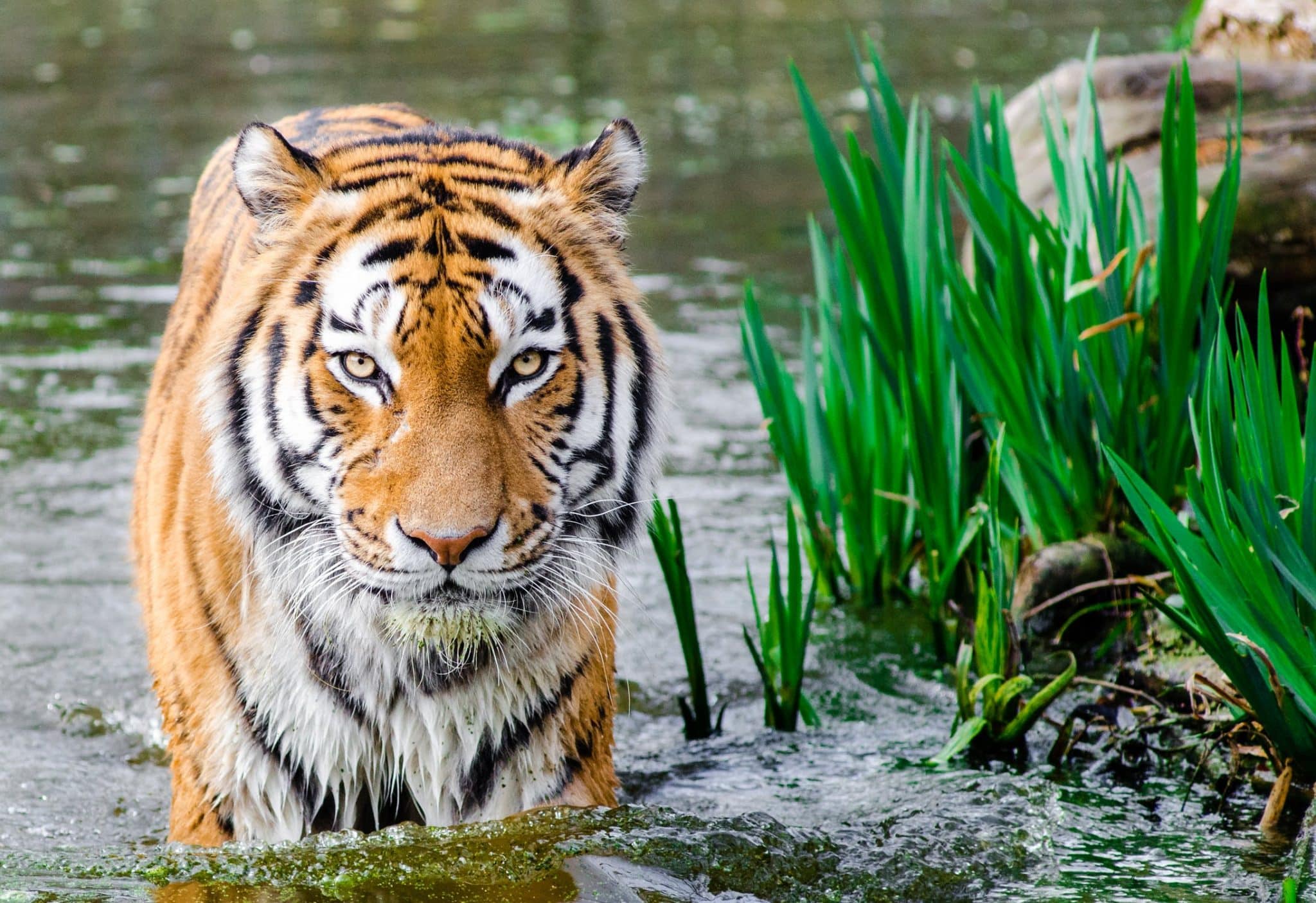
Get to know the Tigers
Do you like Big Cats? Have a look at the best places to see Lynx .
Because humans hunt it and destroy its habitat, which once stretched from the Caspian Sea to the Pacific Ocean.
Tiger habitats are pretty diverse and can be found in more places than you’d think! They live in Siberia’s dense forests and roam Malaysia’s jungles. But things are not going well for these elegant cats of prey. Although the tiger has no natural enemies, it is threatened with extinction.
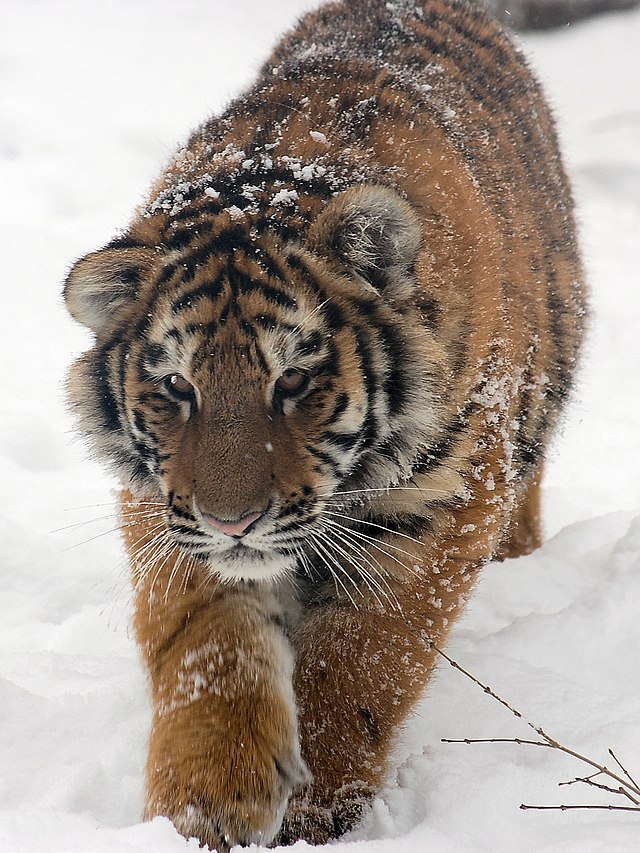
Photo by and (C)2007 Derek Ramsey.
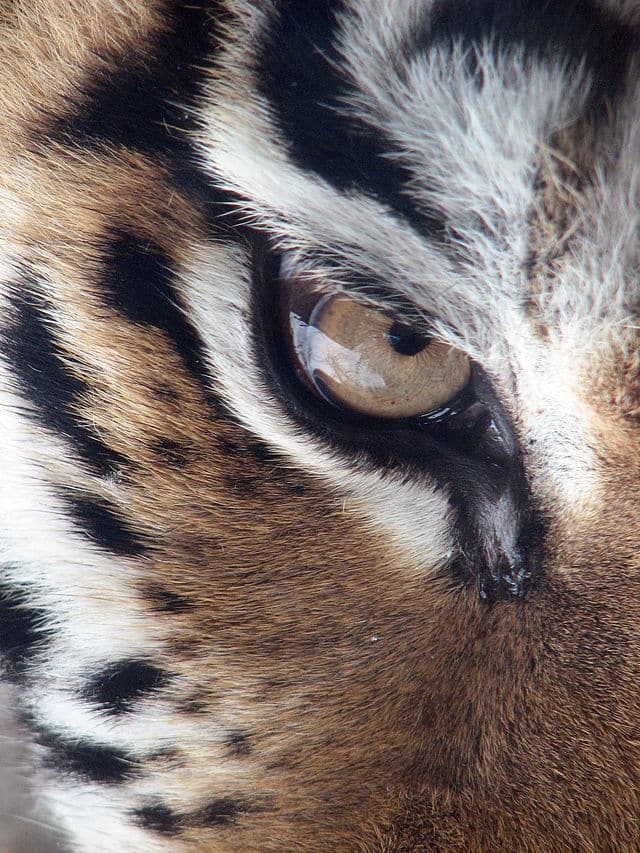
Tiger Endangerment
The IUCN red list puts the Tiger status to endangered :
Poachers are also a great danger. They hunt the tigers because they can sell the big cats’ body parts well. Because claws, teeth, brain, and other parts are processed into medicine in traditional Chinese medicine and are in great demand. Hunting tigers as trophies have cost many animals their lives, especially in the last century.
The World Wide Fund For Nature ( WWF ) assumes that less than ten percent of the original habitat is left. The reasons are manifold. For example, mineral resources such as coal or oil are extracted in some regions. Deforestation of the rainforest is also a significant problem, as is the development of inaccessible areas by roads.
The South Chinese tiger is considered extinct in the accessible wilderness. According to the WWF species lexicon, experts assume that there are only a few isolated individuals, if at all. Therefore, the last hope of preserving the species lies in the few animals in Chinese zoos. The remaining five species now live in only 13 countries in Asia. Most of them are native to India, where it is estimated that there are about 1700 tigers.
A little more than a hundred years ago, there were still about 100,000 tigers living in large parts of Asia . There are still about 3900 animals; the Bali, Caspian, and Java tigers are extinct. Amazing animals for a Tiger Safari or Tour.

How Dangerous are Tigers?
Do you like Big Animals? We collected ideas on the Best Places to see Hippos , Elephants , Giraffes , or Rhinos .
That is why wild animals respect them. But if a trainer, for example, stumbles and loses his position of power, it can become dangerous even for him. Also, to strange tigers, he would not dare to enter the cage. By the way, in the wilderness, animals only rarely attack humans. If, for example, a shark hurts a surfer, it is only because he mistakes him for a seal. You can see this because, unlike its usual prey, it does not eat it.
Nevertheless, some people can go into a tiger or lion cage without being attacked, for example, tamers in the circus. They know their animals well and are something like the leader.
For Tiger, a human being is a big animal. And when an animal is in its enclosure, the tiger wants to hunt it because he has an innate hunting instinct.
Approximately 100 people die every year due to attacks by tigers. Probably, humans are often to blame for this themselves because they provoke the animals.

#1 Kanha National Park, Madhya Pradesh, India
- Khana National Park Tours
- Dizkvr Tours
Tiger Safari Operators:
You might also like to read about Lion Walking Tours.
How to get there: Kanha National Park is situated in the south-eastern foothills of the Satpura Mountains almost 165 km southeast of Jabalpur.
Apart from the waiting times, which can amount up to 2 hours, this arrangement is for really interested rather a farce animal protection can not function so! However the park is worthwhile also independently of its tigers. One should let oneself in simply on the species-rich fauna. A tiger sighting is not everything!
Kanha National Park in Madhya Pradesh is one of India’s most famous national parks due to its size. However, because of this size, one does oneself hard to get the tigers hoped by every traveler also to face. Unless one has nothing against the extremely questionable tiger show, where tigers are driven out of the undergrowth with the help of elephants, so hordes of Indian families wait noisily with the car until the elephant is ready to carry the customers up to the tiger.
India offers one of the best Tiger spotting opportunities in the world, with over 50 Tier resorts called the "Tiger State".
India is home to seventy percent of the world’s tiger population, with the Bengal tiger population at 2226 during last census in 2014. The state of Madhya Pradesh is India’s Tiger State; it is located a few hours south of Deli.
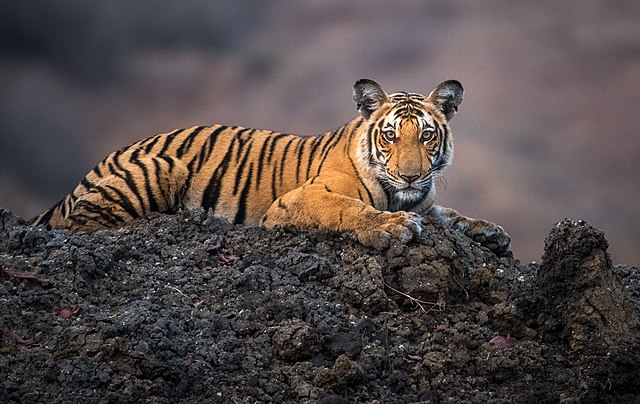
#2 Bandhavgarh National Park, Madhya Pradesh, India
- Bandhavgarh National Park Tours
- Driver Tours India
- Nature Safari India
How to get there: Durminskoye Reserve is about two hours’ drive from Khabarovsk, in the South-Eastern part of Russia in Khabarovsk Krai.
To make a difference today, raise awareness for these beautiful animals and join a Tiger Safari or Tour.
A white tiger was caught in this area in 1957, whose offspring can be seen in zoos and circuses worldwide. Other predator species in the area include leopard, striped hyena, sloth bear, wild dog, reed cat, golden jackal, spotted musang and Indian mongoose.
The best-known animal species in the park is the Bengal tiger, of which almost 50 animals lived in the park in 1997. The big cats are not shy and can be observed particularly well here.
Some of these swamps still exist. Salt forests dominate the rest.
The hilly landscape is dominated by a plateau on which once stood the fort of the Maharajas. Nearby are grasslands rich in game, originating from swamps that were once created to protect the fort.
The park is considered one of the most reliable places to observe wild tigers.
The Bandhavgarh National Park is a national park in Madhya Pradesh, India. It covers an area of about 480 square kilometers and is located about 300 km south of Khajuraho in the Vindhya Mountains.
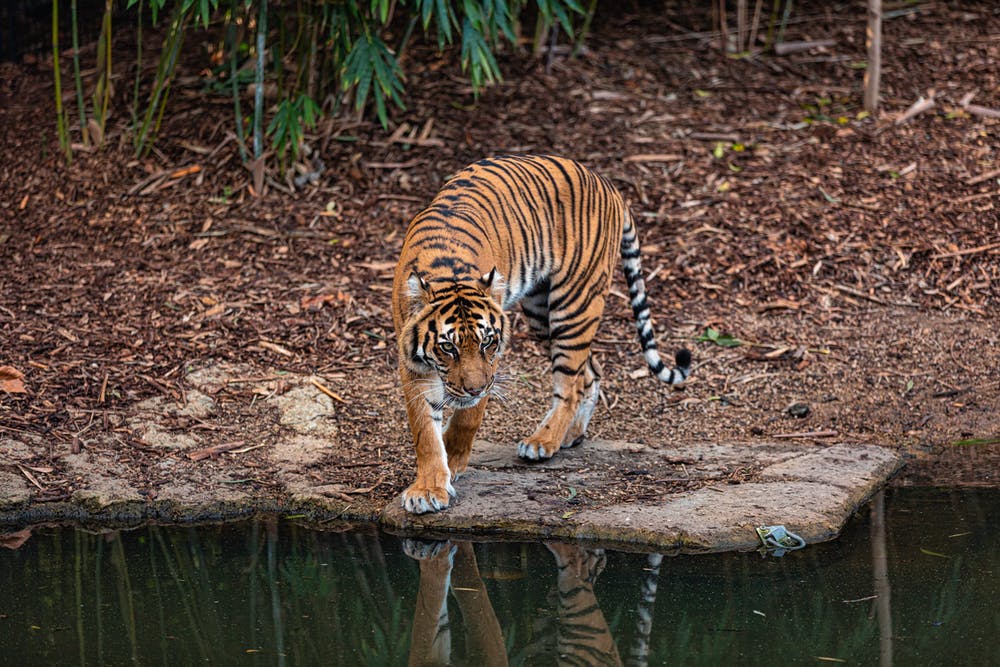
#3 Satpura Tiger Reserve, Madhya Pradesh, India
- Satpura National Park Tours
- Pugdun Safaris
How to get there: The Satpura Tiger Reserve, also known as Satpura National Park, is located in the Indian district of Hoshangabad in Madhya Pradesh.
This is a different kind of tiger sanctuary with so many differences in altitude and gorgeous greenery, reminiscent of Robert Frost’s beautiful forests. There is a lot of wildlife here. It is undoubtedly an underestimated but wonderful place worth visiting. The drive to the place itself through the mountains is amazingly scenic.
Even though the chances of tiger sightings in Satpura Tiger Reserve are not the highest, the park offers walking safaris, a unique way to experience wildlife.
Saptura Tiger Reserve is a wonderful place in Madhya Pradesh. However, it is doubtful to see Tiger, because there are only 50 tigers on 1200 sq kms National Park.
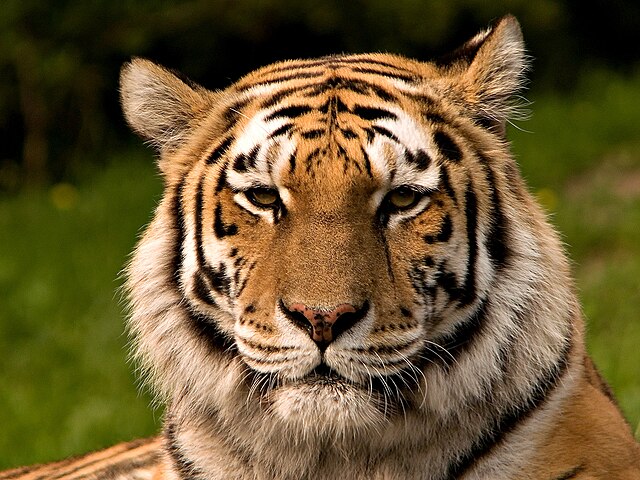
#5 Corbett Tiger Reserve, Uttarakhand, India
- Corbett Tiger National Park Tours
- Corbett Tiger Reserve Tours
How to get there: Durminskoye Reserve is about two hours drive from Khabarovsk, in the South-Eastern part of Russia in Khabarovsk Krai.
The main form of vegetation is the saline forests, at higher altitudes there are also some pine stands. In the lowlands there are riverine forests, whose stands are interrupted by grasslands called “chaurs” by the locals. It is only open from November to June.
The largest river in the park is the Ramganga, which flows into a large lake at the western border of the reserve. The landscape is characterized by broad valleys and hills. A chain of hills runs east-west in the middle of the area.
It was initially called Hailey National Park, but in 1957 it was renamed Corbett National Park after it was temporarily called Ramganga National Park from 1952. Corbett National Park covers almost 521 square kilometres. Together with the adjacent Sonanadi Conservation Area it forms the Corbett Tiger Reserve, established in 1973 as part of Project Tiger.
Corbett National Park is in the Indian state of Uttarakhand at the foot of the Himalayas. It is named after the British hunter and conservationist Jim Corbett, who was instrumental in establishing the first national park in India near Nainital in 1936. Interesting for Tiger Safari or Tour.
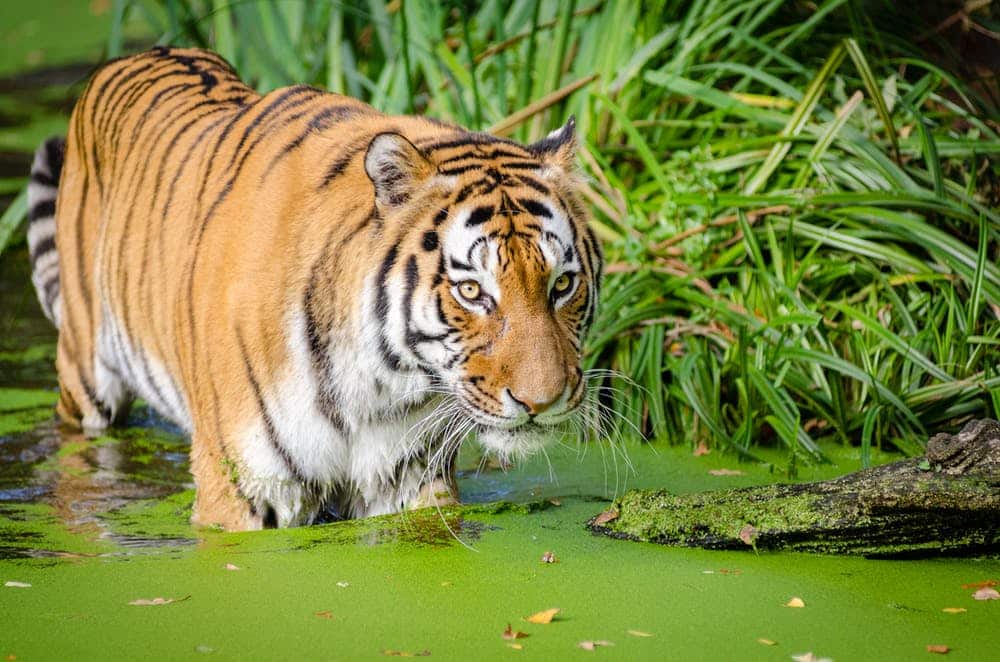
#6 Sundarbans-Nationalpark and Tiger Reserve, West Bengal, India
- Sunderbans National Park Tours
- Sunderbans-Park Tour
How to get there: The park is located in the Sundarbans in the Ganges Delta and borders the Sundarban Reserve Forest in Bangladesh.
Also, look at our India Big 5 Article to explore Indian Wildlife.
Among the mammals , the Bengal Tiger is also the absolute highlight in Sundarbans National Park. At present, there are estimated between 350 and 400 wild Bengal Tigers in the Sundarbans. This is the largest remaining tiger population worldwide!
The name comes from Bengali and means “beautiful forest”. The Sundarbans cover an area of 10,000 square kilometers in the delta of the largest rivers in South Asia, the Ganges, Brahmaputra and Meghna. The Indian state of West Bengal shares the mangrove area with Bangladesh.
The Sundarbans are the most extensive mangrove forests in the world and the only ones where Bengal tigers live at the same time, they have been a UNESCO World Natural Heritage Site since 1987.
West Bengal is home to one of the world’s largest tiger populations, with over 350 tigers in a 140,000-hectare mangrove forest close to the Bangladesh border. It is a world heritage site, and visitors can take boat safaris. A very famous place for Tiger Safari or Tours.

#7 Chitwan National Park, Chitwan, Nepal
- Chitwan Jungle Tours
- Chitwan Jungle Safari
How to get there: The Chitwan National Park is located southwest of Kathmandu in the Terai.
The Chitwan National Park is the best known in the country. It is a UNESCO World Heritage site and the first national park in Nepal . Dusk jeep safari is very popular, mainly in the morning and evening. The more relaxed parts of the day offer the best chance to see a Tiger.
Due to increased conservation efforts, Nepal's Bengal Tiger population doubled in the last decade, with more than 235 individuals in the five national parks.
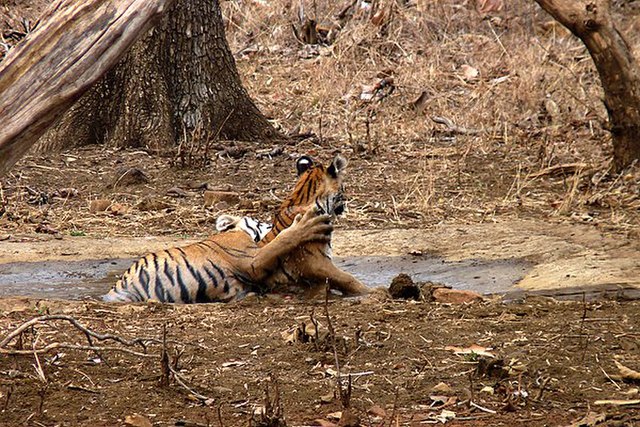
#9 The Sundarbans, Bangladesh
- Bengal Tours (three-day)
- Guide Tours (three-day)
- Responsible Travel (eight-day safari)
Tiger Safari Operators:
How to get there: The sundarbans national park is located in the south west of bangladesh, around 6 hours drive from Dhaka.
You can also see saltwater crocodiles, wild boar, languages and many birds.
However, Tiger sightings in Bangladesh are rare , compared to other countries. Another interesting place for Tiger Safaris or Tiger Tours. Operators offer Boat tours from the city of Khulna in the southwest. Bed and Breakfast on the leading boat, track tigers on smaller boats or en foot (with armed security personal)
It’s the home of more than 1120 Bengal tigers.
Welcome to the world’s largest mangrove forest, starting in India and going through Bangladesh.
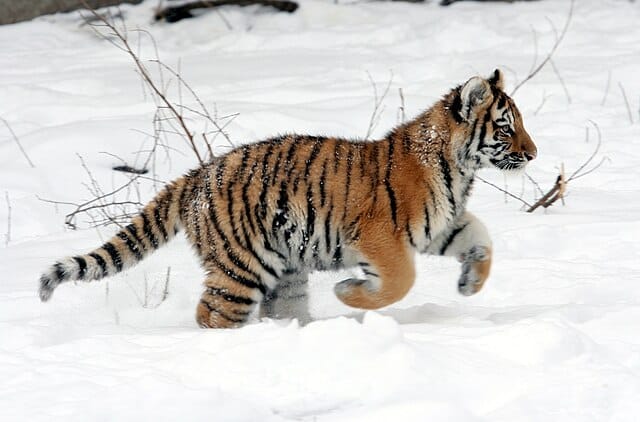
#10 Durminskoye Reserve, Chabarowsk Region Russia
- Russia Tiger Tracking
- Visit Russia
Tourist tiger safaris are organized like science tours, tracking pug marks on snowmobiles and on food, setting camera traps reviewing footage. What else is there? You can see wolves, lynxes, badgers, foxes, and raptors. In the summer even Asian black bears
However, with only around 540 individuals left in the wild, the chance to see one is slight. Most of the Tiger Safari tours are based in Durminskoye Reserve, it is a 50.000-acre wildlife sanctuary a three hours drive from Khabarovsk in southeast Russia. It is the last prime habitat for Siberian tigers.
In the 1940s, they were hunted to the brink of extinction and only saved due to the new protection grant of tigers in Russia in 1965.
The majestic Siberian Tiger, mainly found in eastern Russia or northern China, is our planet’s largest tiger species and cat. It is sadly also the most endangered .
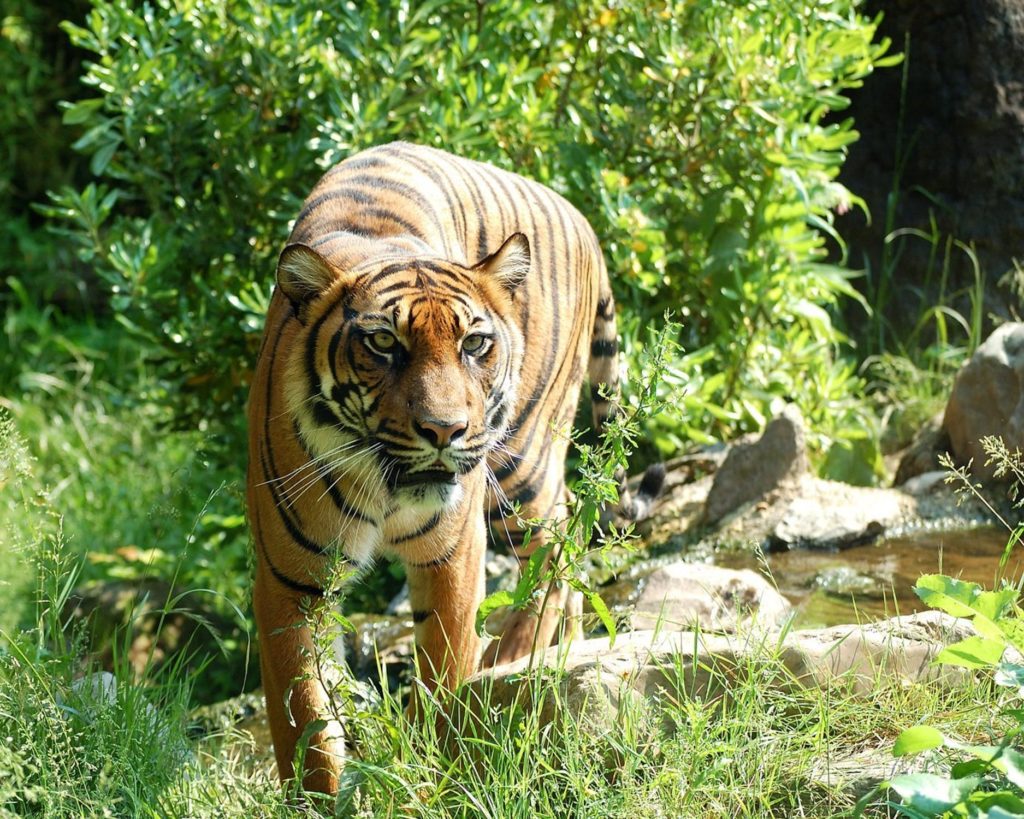
#12 Kerinci Seblat National Park, Sumatra, Indonesia
- Wild Sumatra
- Trijaya Travel
How to get there: The main entrance and the national park office are in Sungai Penuh. There you can get a visit permit and find hiking guides. Alternatively, accommodations in the Kerinci Seblat National Park’s surroundings often help their guests get a visit permit and reliable hiking guides. Look for a Tiger Safari or Tour.
There are also about 200 bird species. Among the more than 4000 plant species that grow in Kerinci Seblat National Park are the giant reflower, the titan’s root, various orchids and the edelweiss.
Numerous rare or even endangered species, such as the Sumatran tiger, the clouded leopard, the tree leopard, the Sumatran rhinoceros, the Malay bear, and the Malayan tapir, is at home in Kerinci Seblat National Park.
Various species accordingly characterize the fauna and flora of the Kerinci Seblat National Park.
However, the National Park offers another Sighting, the Sumatran Tiger . Around 200 Tigers roam in the wild, using Tourists as one factor to save their habitat and survival.
The Kerinci Seblat National Park is twice the size of the famous Bali Island, which is well known for its tourists.
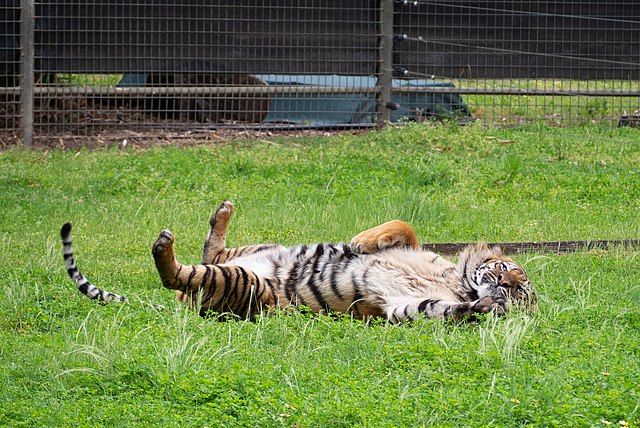
Tigers in Zoos and National Parks
The consequences for the animals are fatal: Massive damage to their health, severe behavioral disorders, and increased mortality. This Tiger Safari or Tour guide should highlight only sustainable places to go.
- Perform feats for which they are often trained by force,
- Have to change venues 50 times a year on average,
- Spend most of their time in small cages, inadequate enclosures, or in the transport wagon,
- That essential species-specific behavior such as social contacts or movement are considerably restricted or made completely impossible,
- that they have little variety or occupation,
- that they are often not fed and cared for appropriately,
- That veterinary control or care is often inadequate because there are only a few specialized veterinarians for wild animals nationwide or the circus cannot or will not afford the treatment financially,
- that in many cases the circus operators lack the necessary expertise,
- that there is no fixed winter quarters during the play-free period. Only about every tenth company can call a winter accommodation its own.
Nevertheless, animals of wild species can still be seen in many circus operations that travel around the world: Tigers, lions, elephants, rhinoceroses, giraffes, sea lions or monkeys – the range of animal species carried along is extensive. Wild animals suffer in the circus. They suffer massively, because:
Wild animals make exceptionally high demands on their keeping and accommodation. In a circus enterprise, responsible keeping wild animals is generally impossible.
More for You
US Navy warships shot down Iranian missiles with a weapon they've never used in combat before
Angel Reese's WNBA Salary Revealed After Being Selected With No. 7 Overall Pick
McDonald's menu adds new takes on a fan-favorite sandwich
'American Idol' recap: First platinum ticket singer sent home during Top 14 reveal
These Are 10 Smells That Cats Absolutely Hate
Brett Kavanaugh's Questioning of January 6 Charges Sparks Fury
Is It Safe To Grill Frozen Hamburger Patties Straight From The Freezer?
USA Basketball announces its men's team for the Paris Olympics
UC Berkeley Sparks Outrage and Controversary for Allegedly Banning White People from Community Farm
Eerie footage inside sunken passenger plane mistaken for missing MH370
The Pool Noodle Hack That Makes Spray Painting Cabinet Doors A Breeze
US Missile Expert Died from the Bends in High-Altitude Test
4 Things You Should Never Cook in Cast Iron
This Michigan family quit the ‘American Dream' to move into a $32K, 45-foot Greyhound bus — and they're happier than ever. How to drive down costs without having to live on the road
Fact Check: Millions Watched 'James Bond 26' Trailer on YouTube Featuring Henry Cavill and Margot Robbie. However, It's Simply a 'Concept Trailer'
Krispy Kreme Is Now Serving Up a Fan-Favorite Special Every Day of the Week
Ohio GOP leaders reject Democrats' plan to get President Joe Biden on November ballot
Beijing Half Marathon tainted by a shameful act of cheating
8 Shoes to Wear with Leggings This Spring That Aren’t Sneakers
How to digitize VHS tapes the cheap way

COMMENTS
3. From Zanzibar: Mikumi Day Safari. Explore the unique Tanzanian nature and wildlife while joining us for a day safari to Mikumi National Park. Fly early morning from Zanzibar to Mikumi National Park, the fourth-largest National Park in Tanzania. Enjoy a day game drive and an bush lunch during the break time.
Keep your travel plans flexible — book your spot and pay nothing today. Duration 4 days Check availability to see starting times. Live tour guide English . Small group Limited to 10 participants . Experience. Highlights. Arusha NP; Tarangire NP; Lake Manyara; Full description. This is the 4 Days Safari in Tanzania which will take you to ...
maasai life style tour if your interest; binoculars (at least 1 in the car) pick up at kilimanjaro international airport; all accommodation before and after safari (bed & breakfast; Lunch and dinner in hotel (only before and after safari) International flights (from/to home) Tips (tipping guideline US$20.00 per day per car)
When arriving at Africa Safari Lake Natron, an accommodation located next to Lake Natron, you will have the choice to relax at the swimming pool or add an extra activity to your tour. For example a visit to the Ngare Sero Waterfall. The following morning, on your last day, you will enjoy a Flamingo Walk at Lake Natron after having your breakfast.
However, visiting the Serengeti in December can be tricky due to the unpredictable weather. From July to October the Great Migration will take place in the northern part of Serengeti and the Masai Mara in Kenya. The best time for a safari in Serengeti, Tanzania is also influenced by the weather. The dry season, from June to October, is ...
This is also the rainy season. The rains can make the roads muddy, difficult to navigate, and may limit where your safari guide can go. 7. Prepare For Your Trip . In a follow-up call with our travel agent, Victoria, I asked her what she wants future travelers to Tanzania to know. She said, "Read everything your tour company sends you and ...
Visit Maasai villages, explore vibrant markets, and savor leisurely moments to soak in the beauty of the landscapes. Pro tip: A well-rounded itinerary ensures your Tanzanian safari is an immersive adventure, offering more than just wildlife encounters. 4. Sunset Silhouettes: End Your Day with Photographic Perfection.
Dry Seasons: Jan-Mar & Jun-Oct. The weather is usually mild and dry from January to March, and most of the safari crowds are absent. June to October is safari's high season, and Tanzania's major parks like the Serengeti, Ngorongoro Crater, and Lake Manyara are busy but weather conditions are fantastic.
Full description. Trail unbelievable migration paths from Masai Mara to Serengeti National Park while exploring the most famous parks in Kenya/Tanzania on this 7 day, 6 night Africa Safari Tour - with additional Gorilla trekking experiences. This is a year-round safari with several game viewing experiences throughout Kenya and Tanzania.
Going on safari is an absolutely incredible experience and truly a trip of a lifetime. This travel guide will help you in planning your perfect safari in Tanzania with the hopes of seeing the big 5!. During your 7 day African safari you will visit Serengeti National Park, the Ngorogoro Crater, Arusha Tanzania and more!
Hand sanitizer - Very useful during the day, when you will be traveling with the jeep. Earplugs - there are a lot of noises on the safari at night. Sunblock - the sun is strong and the days are long, so I recommend SPF 50+. Insect repellent - if you are going in the summer. 6.
This is the Ultimate Safari Guide to Tanzania. Tanzania's natural beauty is world renowned. After all, countless documentaries and David Attenborough wildlife specials have been made about diving head first into this African wilderness and in Tanzania its beyond beautiful. You just have to see it with your own two eyes to believe it.
Experiencing a hot air balloon ride is a highlight of any luxury safari. Floating above Tanzania's savannah, it provides a breathtaking vantage point for spotting wildlife. Available in the northern regions - Tarangire and Serengeti National Parks, this is undoubtedly one of Africa's most unforgettable experiences.
The Big Five refers to the most iconic large mammals of Southern and East Africa - which includes lion, leopard, buffalo, rhino and elephant. For the highest chance of seeing the Big Five, consider booking your safari at a Tanzania safari lodge in the Serengeti National Park or the Ngorongoro Conservation Area, both in the northern circuit.
Our most recommended things to do in Zanzibar. 1. From Zanzibar: Selous Game Reserve Day Safari with Flights. Explore the impressive Tanzanian nature and wildlife while joining us for a day safari to Selous/Nyerere National Park. Fly early morning from Zanzibar to Selous/Nyerere National Park, the largest protected game reserve on the African ...
For all-inclusive safaris, consider a starting point of USD $4,000 per person for a seven-day trip, and upwards from there for more days or more luxury. If you do not mind longer drives and low- to mid-range accommodation, you may be able to drive that down to $2,500. You can reduce costs by travelling out of season.
Ngorongoro Crater: Best place in Tanzania to see the Big 5, Incredible cliff-top lodges. It's worth noting that Tanzania combines beautifully with other safari destinations in East Africa like Kenya (home to the Masai Mara), and Uganda and Rwanda (exhilarating gorilla trekking adventures). 2.
Tanzania Safari FAQ. Tanzania Safari FAQ. Tanzania is one of the best places to go on a wildlife safari. It is home to some of the most spectacular national parks in the world. Whether you are a first-time Tanzania safari visitor or an experienced adventurer, getting ready for this amazing adventure may leave you with many questions.
Eyes 4 Nature Safaris helps you plan your dream private safari in Tanzania's National Parks, Game Reserves, and Tropical Island Beaches. We will guide you through the process to your own 100% tailor-made safari. From mountain trekking, and wildlife safaris, to beach holidays, from low budget to high budget, you name it, we will make it happen ...
This guide will offer tips on what to expect and what to consider when putting your safari plan together. Let's get started. Safari in Tanzania - What to Expect. To be clear, a safari is nothing like a trip to your local zoo. On a Tanzanian safari, you enter the wild habitat of lions and elephants, zebras and giraffes, rhinos, and buffalos.
The significance of a Tanzanian tour guide goes beyond leading you through a safari. They shape your experience, enhance your understanding of the destination, and play a vital role in ensuring sustainable travel practices. Our safari guides represent the dedicated core of Nature Discovery. Comprising a team of professionals with an unwavering ...
Ngorongoro Crater. Best place in Tanzania to see the Big 5. Incredible cliff-top lodges. Tarangire National Park. See huge numbers of elephant, buffalo, and giraffe (June to October) Fantastic bird watching - over 550 species. Lake Manyara National Park. Boat safaris. Excellent bird watching, especially flamingos.
Your AdventureMakes a BIG Differenceto Vulnerable ChildrenIn Tanzania. —Shrike Safaris partners with the Mayega Children Center, and 100% of proceeds from our 360° Safari package support destitute and orphaned children in Tanzania by providing educational assistance. —After your safari, you will have left behind a lasting and positive ...
Yellow Fever, General Health Advice and Vaccinations for Tanzania. If you have started to plan a safari, here's some good tips on how to go about this> Kenya Versus Tanzania which is better; Looking for a Tour Operator...Here's a good starting point. Mark 11 and other info. Can I take a drone there to use for photography
From the savannas of the Serengeti to the deltas of Botswana, each safari destination offers a unique glimpse into the wild heart of Africa. This guide will take you through ten of the best safari ...
Get our editors' guide to what matters in the world, delivered to your inbox every weekday. Email Address. ... I t was high safari season in Tanzania, the long rains over, the grasses yellowing ...
Playlist. Download. Embed. Atlantic journalist Stephanie McCrummen says foreign interests are acquiring Serengeti territory in Northern Tanzania, effectively displacing indigenous cattle-herders ...
Your Complete Guide to Tiger Safari. Story by Chris Weber. • 4mo. 1 / 16. ©Provided by Animals Around the Globe. Welcome to our article about Tiger Safari. Looking for a Tiger Safari or Tour ...
Sustainability Week 2024 Runtime. Sustainability Week 2024 will run from Monday, April 22nd, at 10:00AM to Friday, April 26th, 2024, at 8:00PM local time.